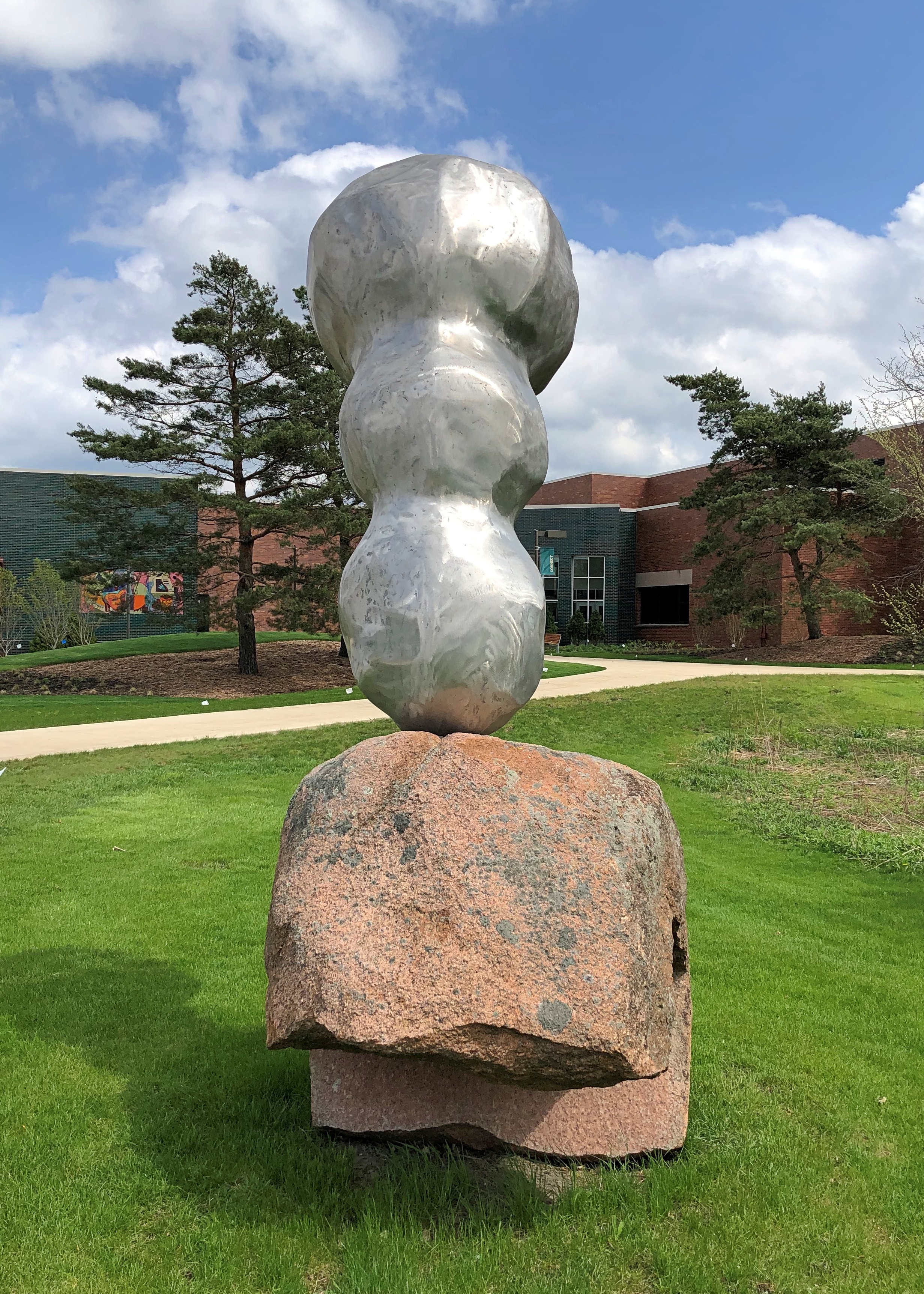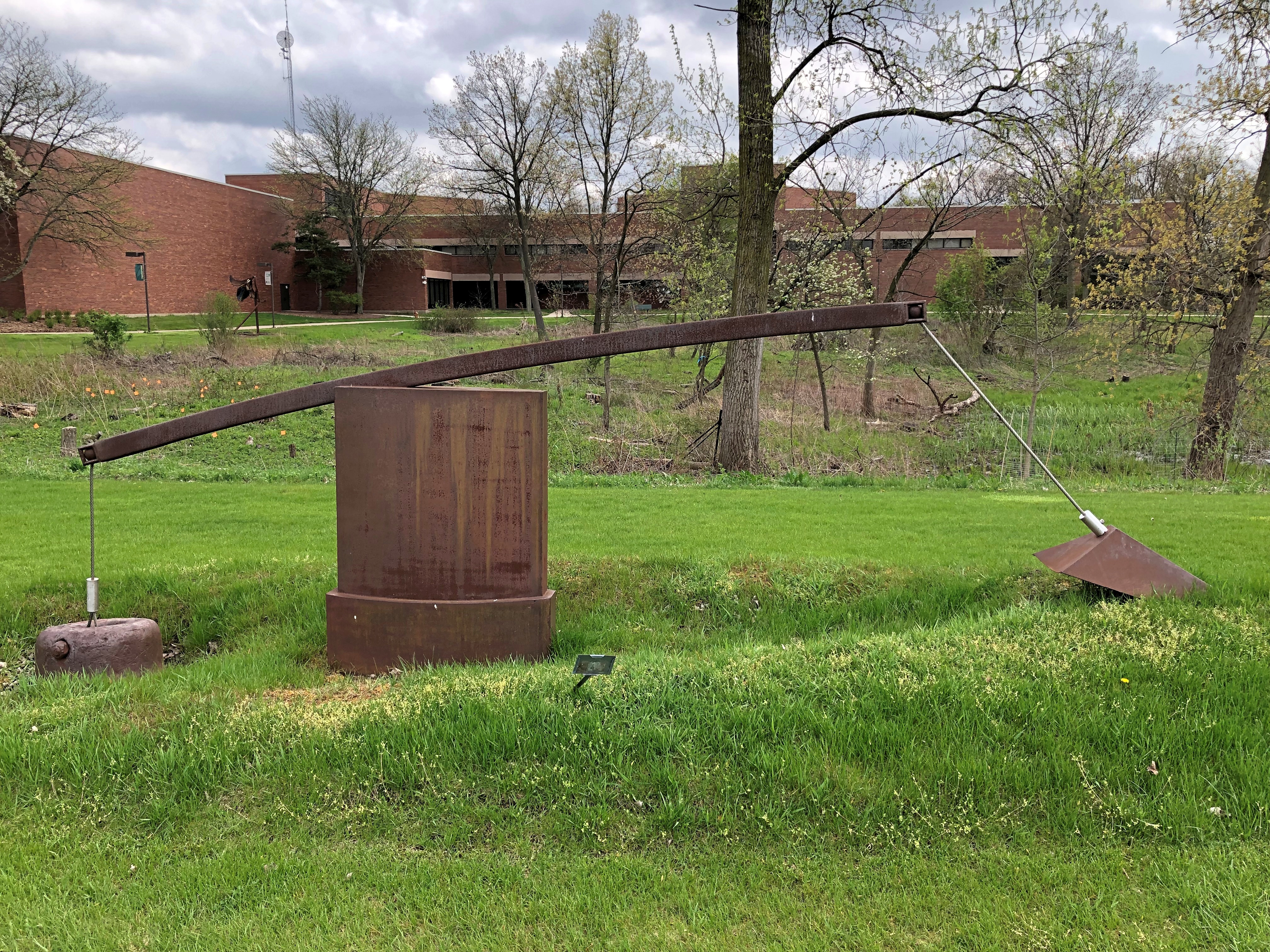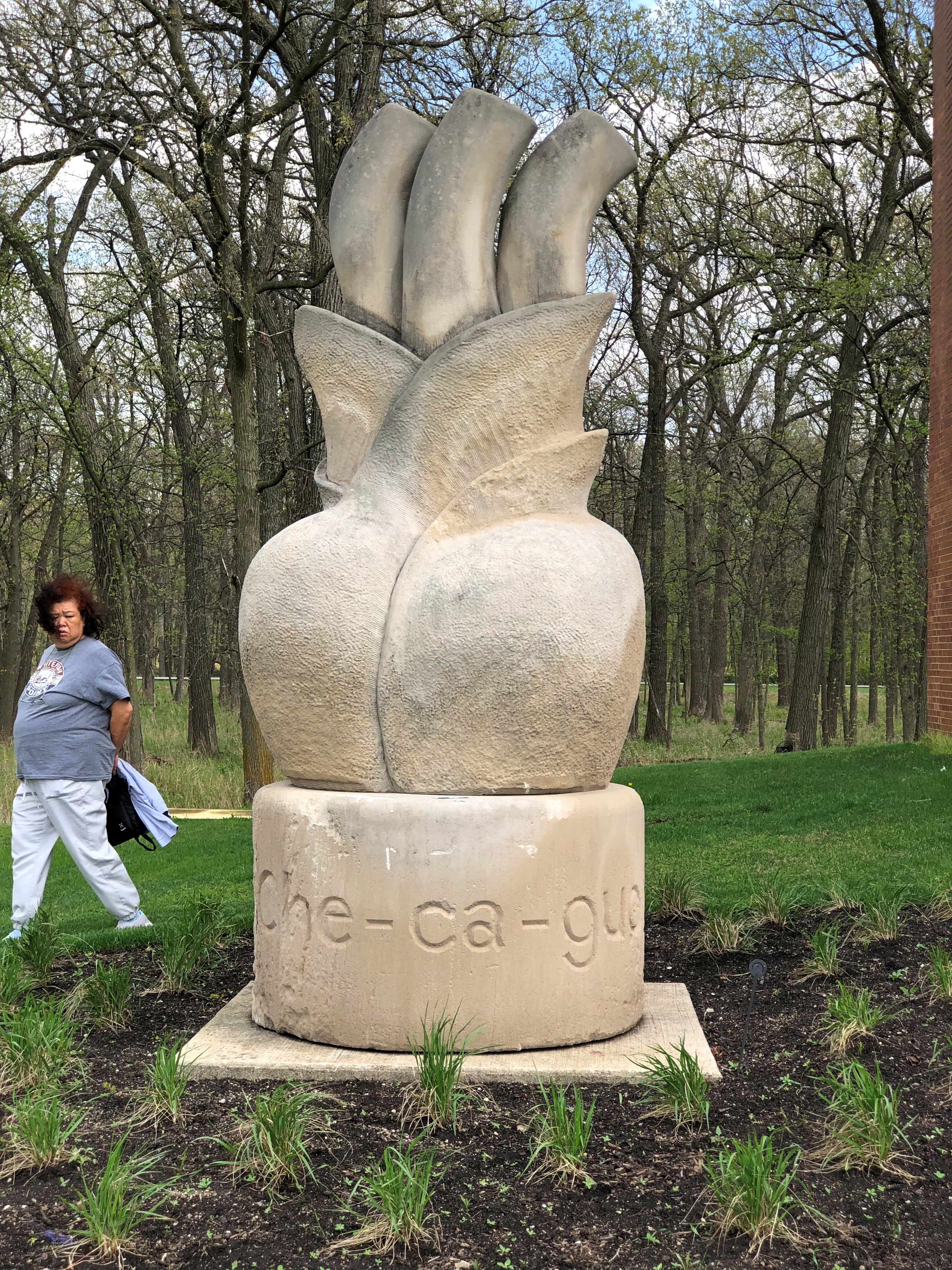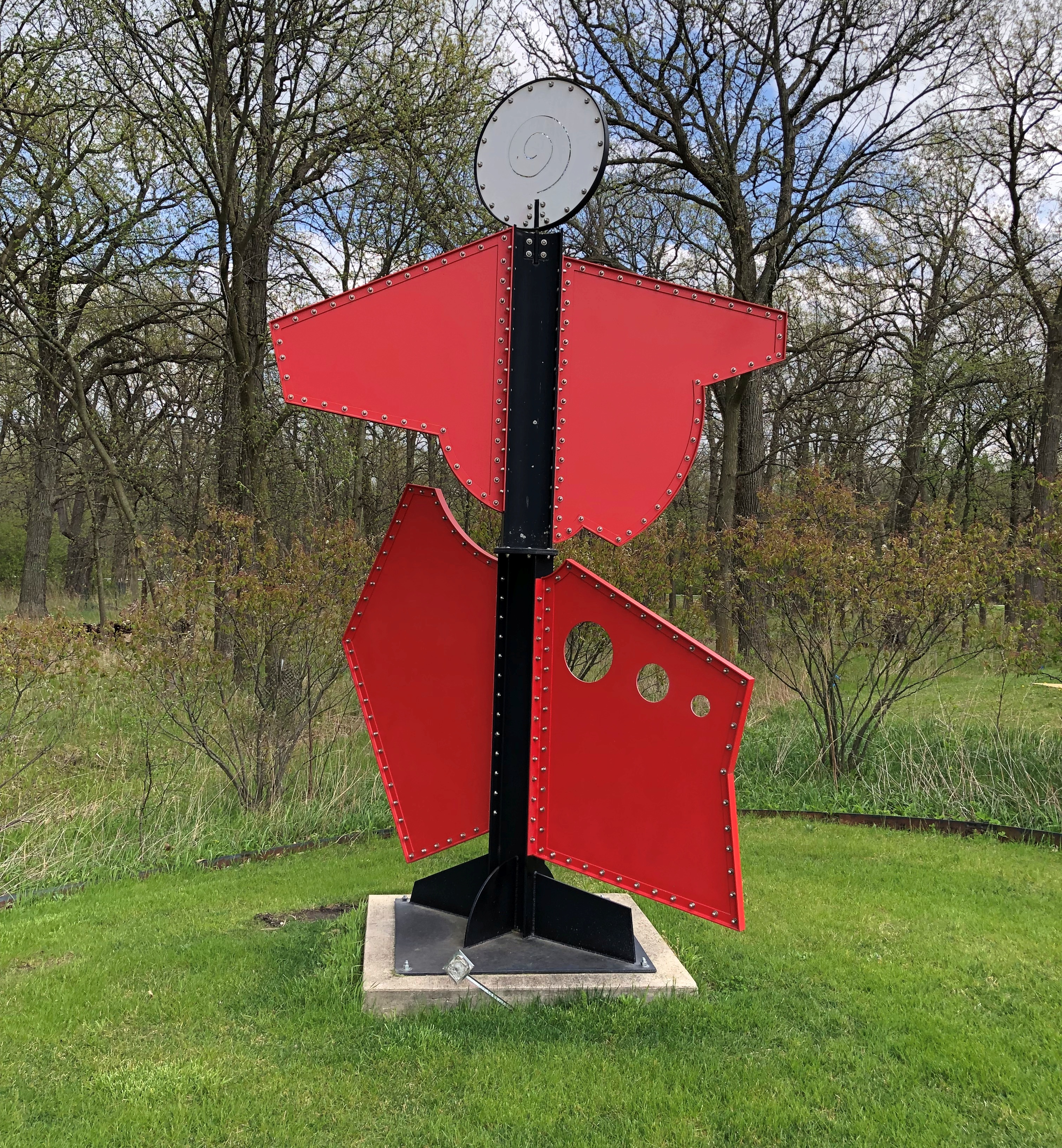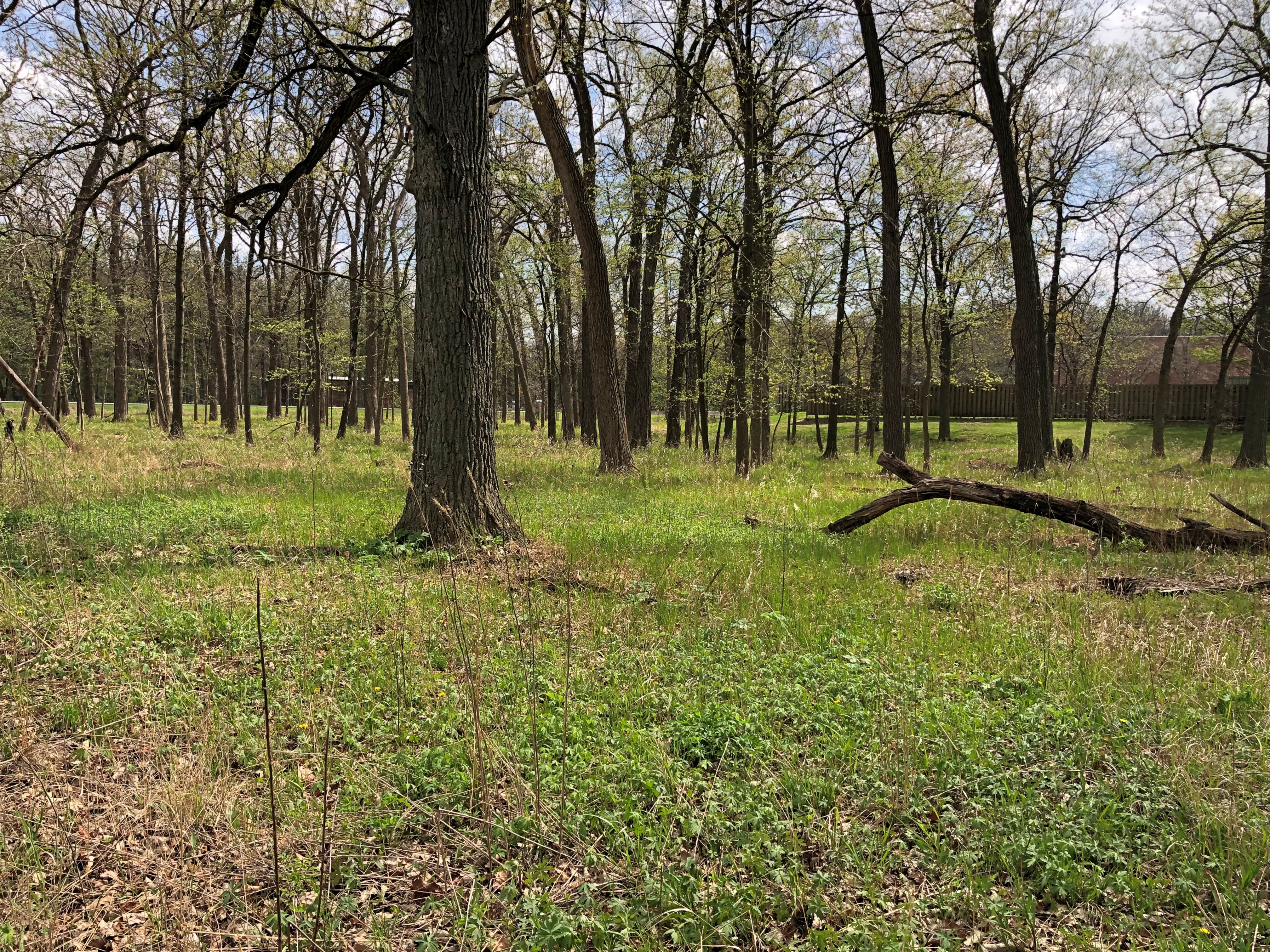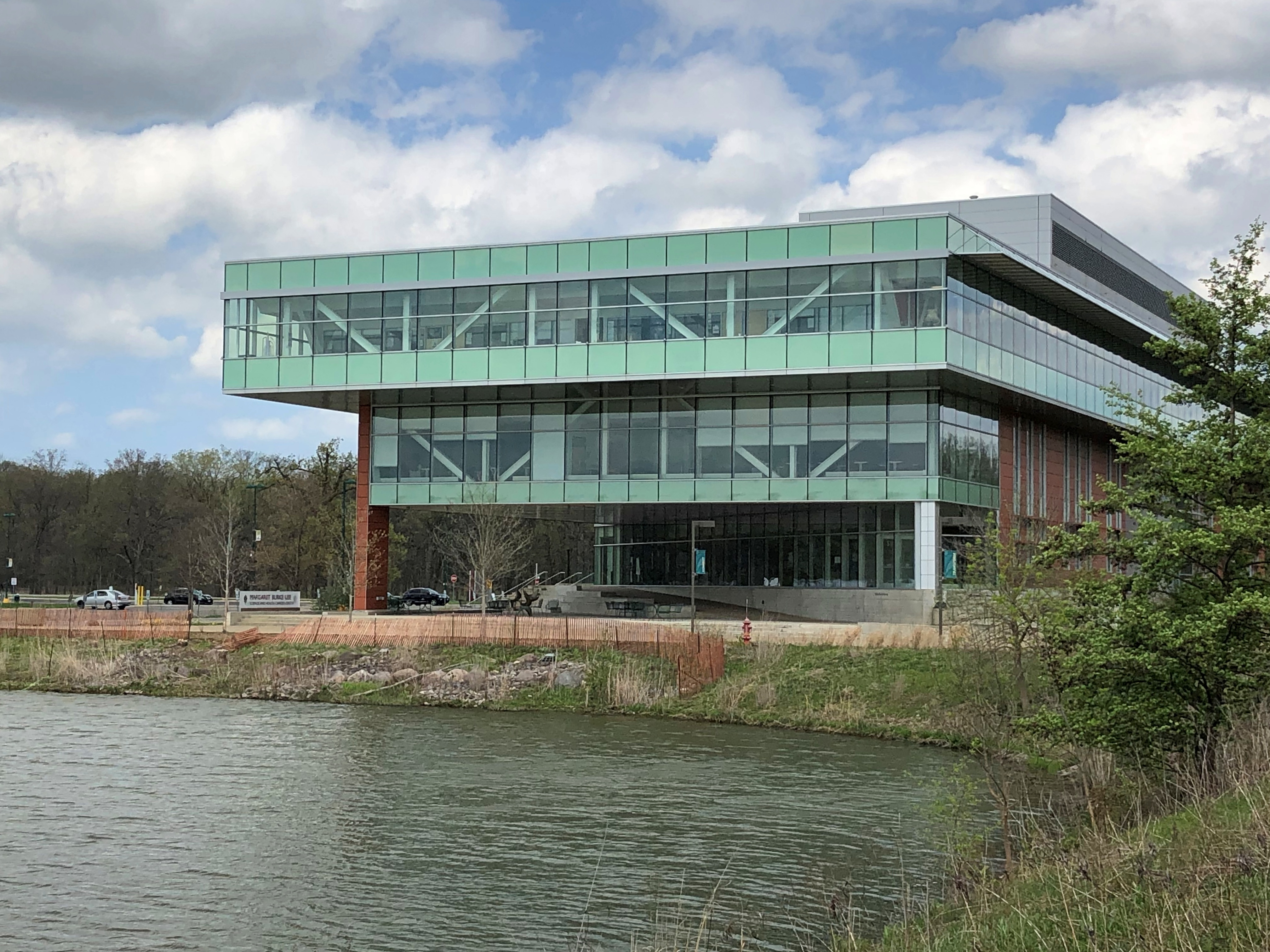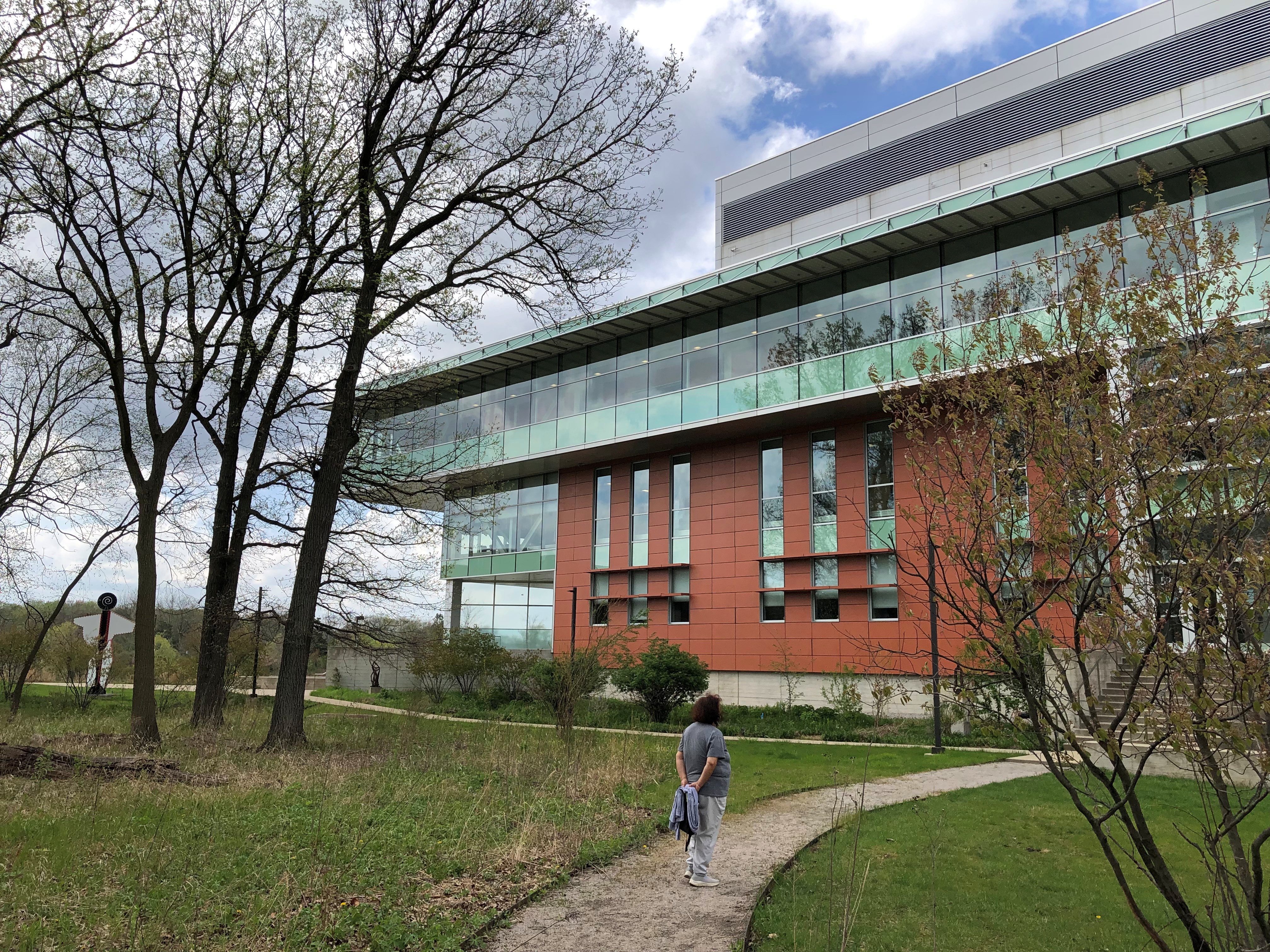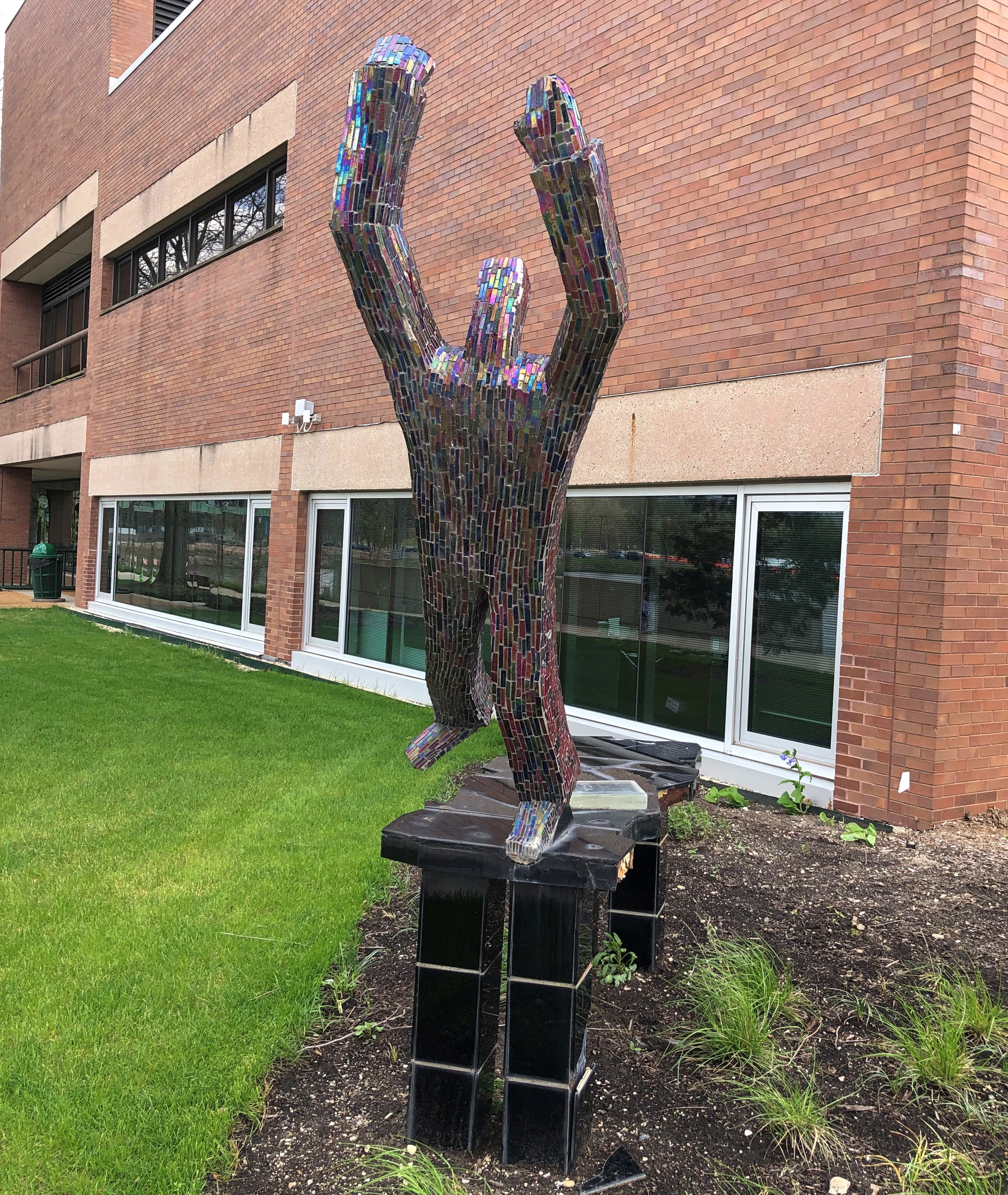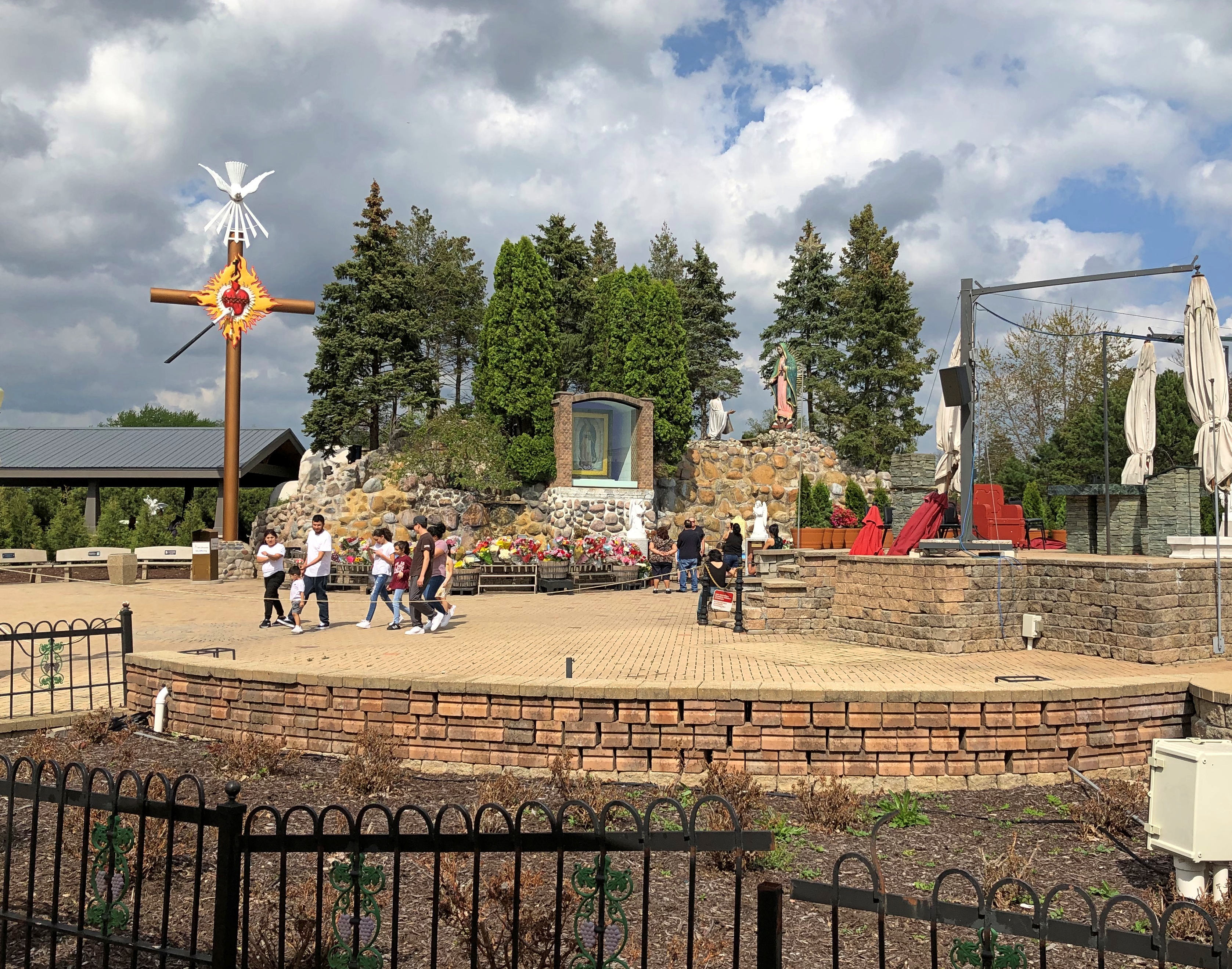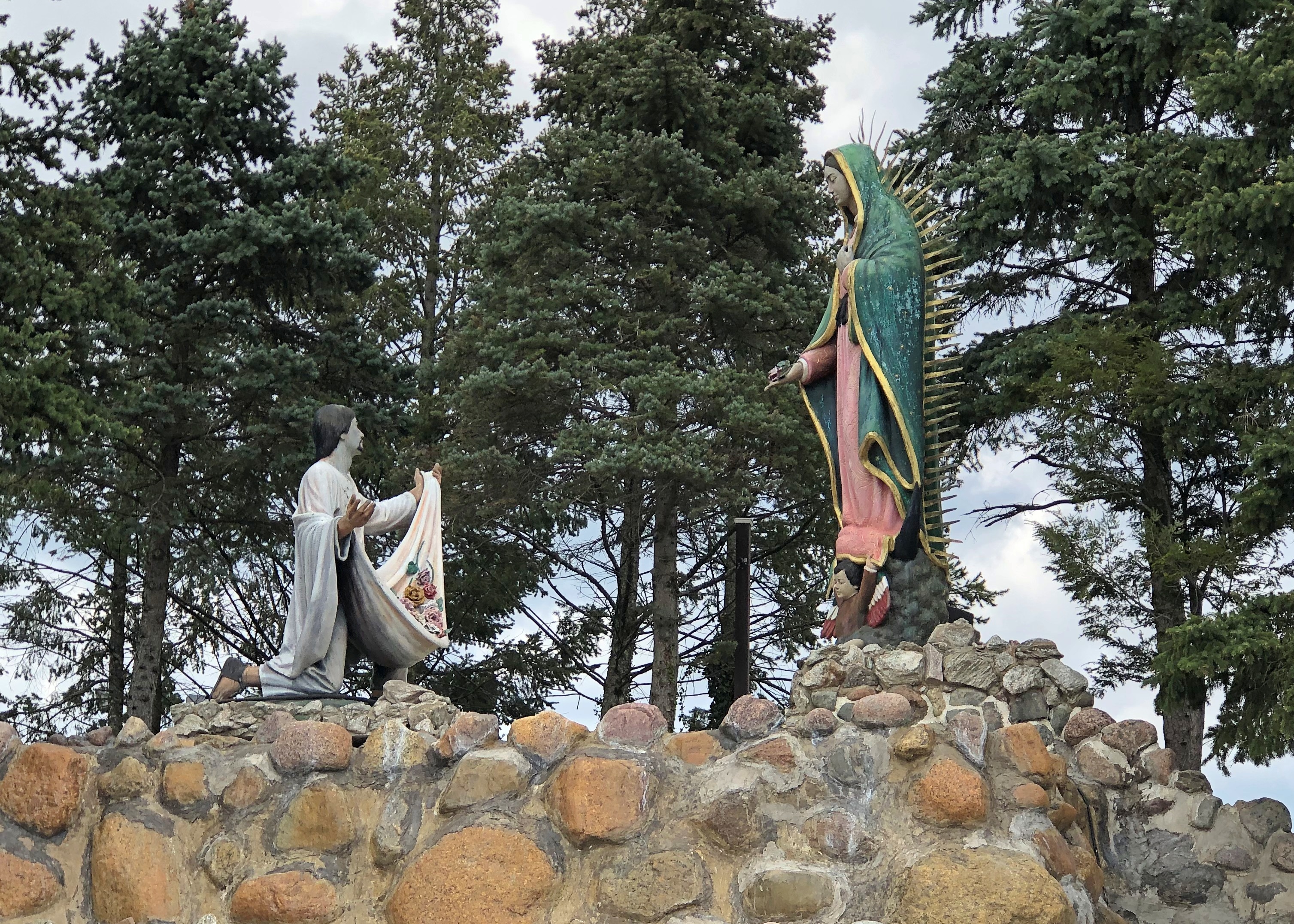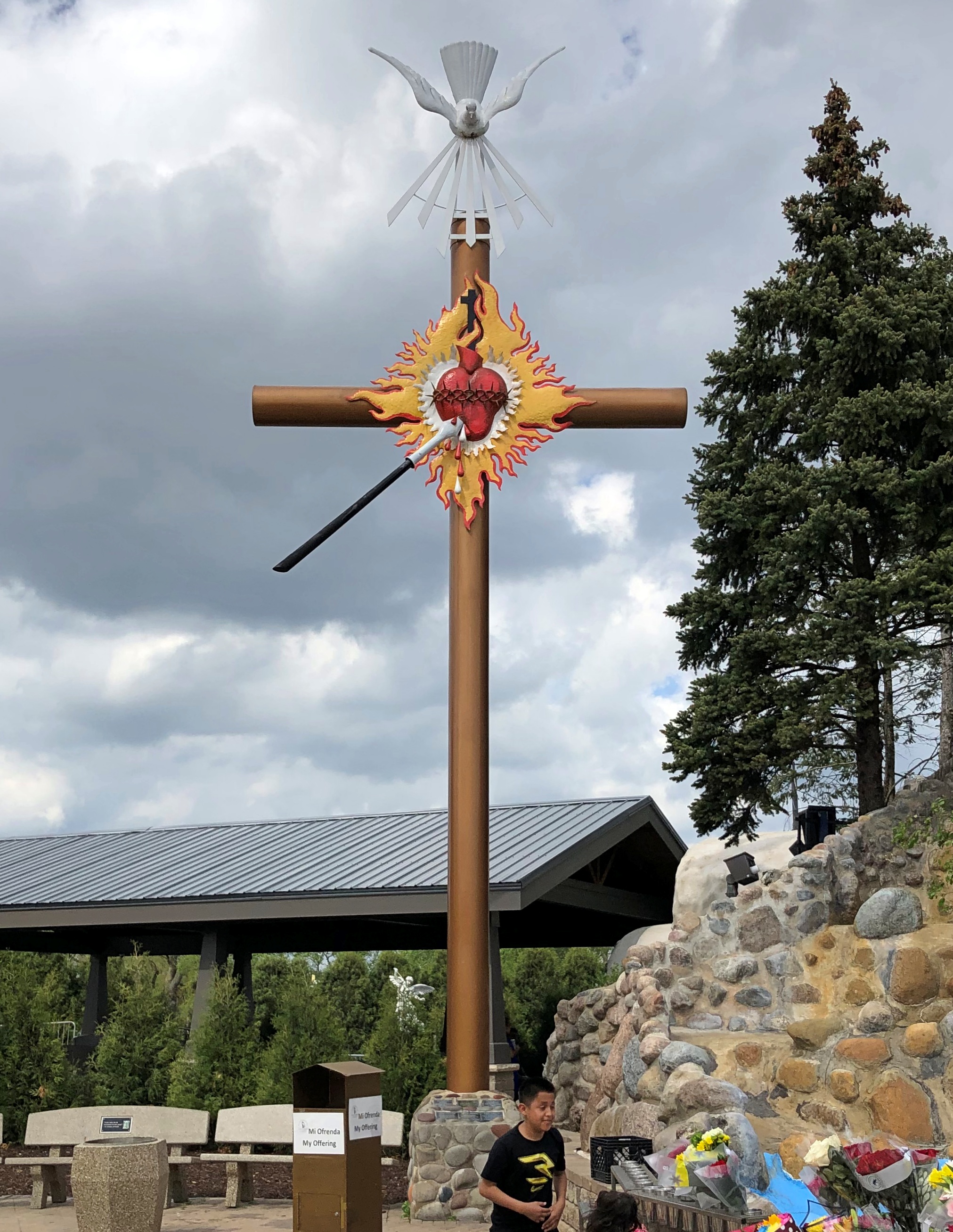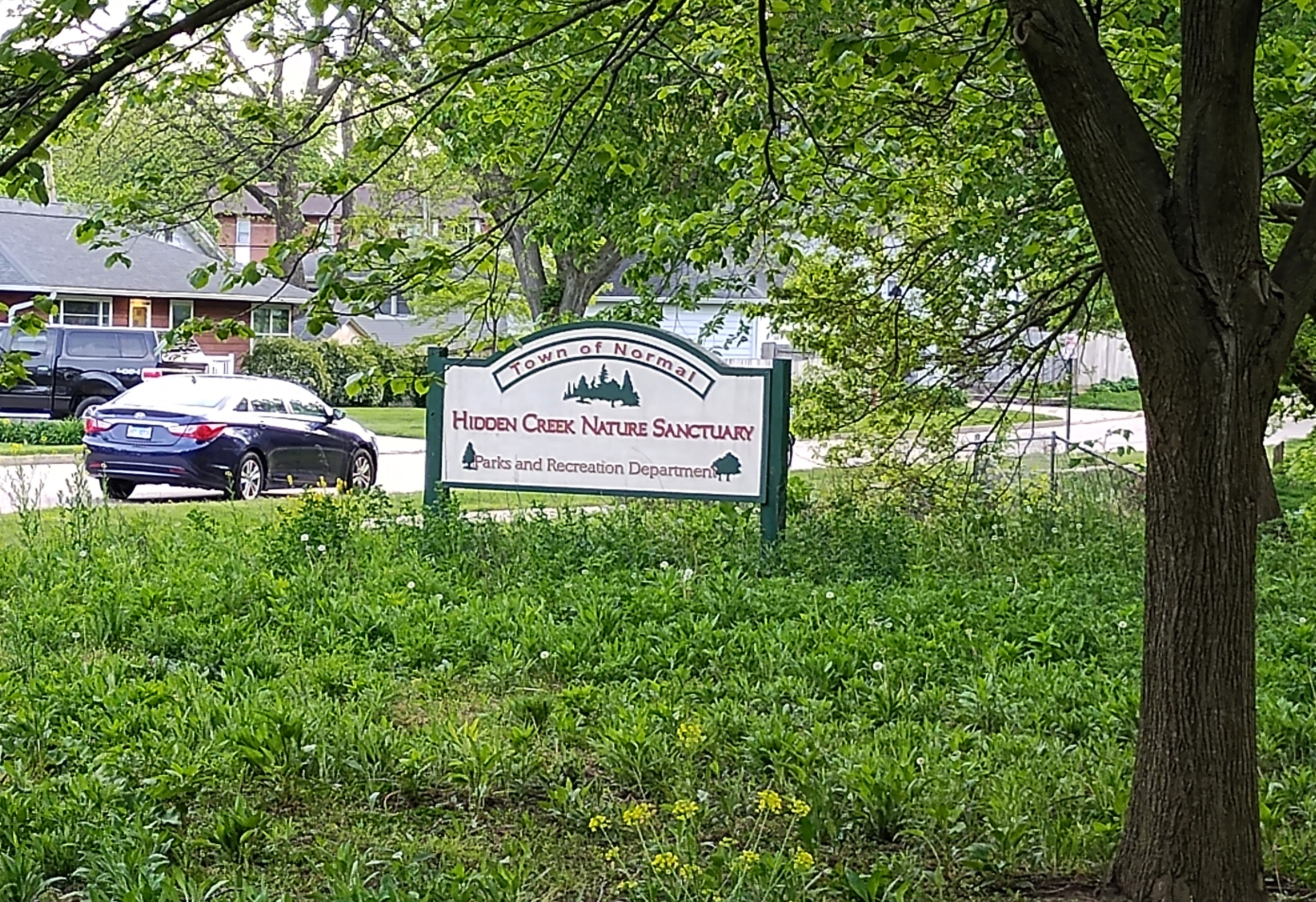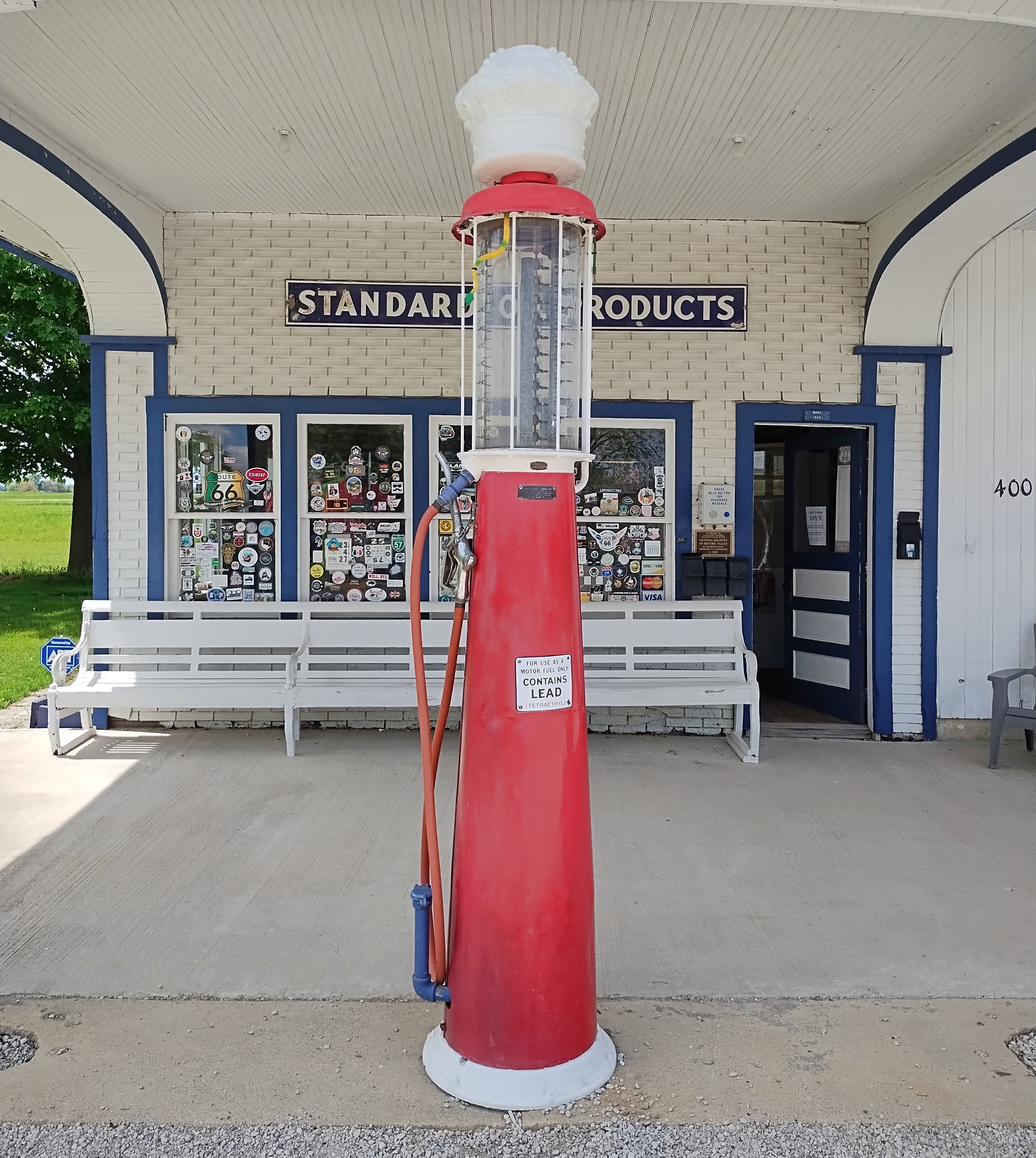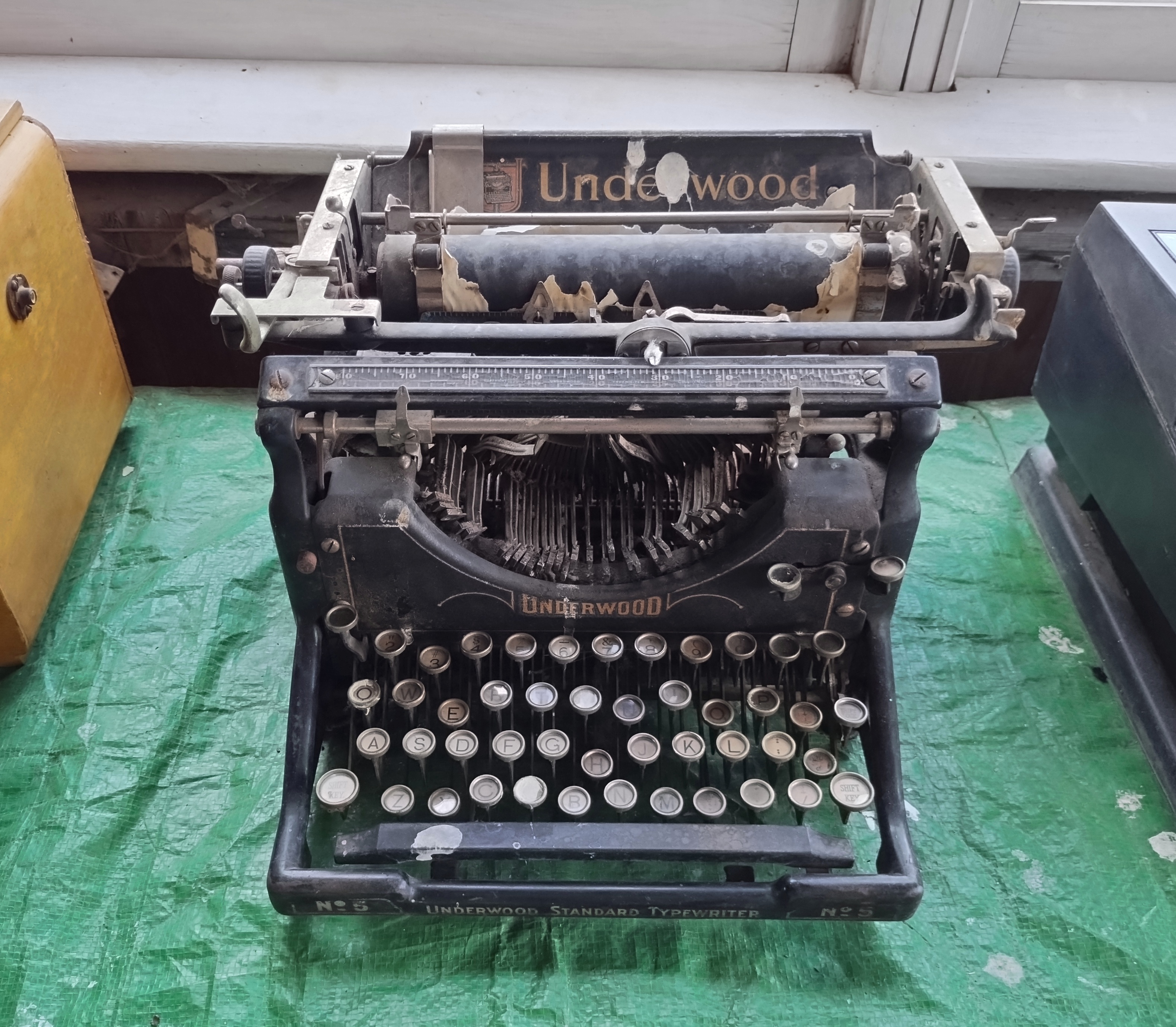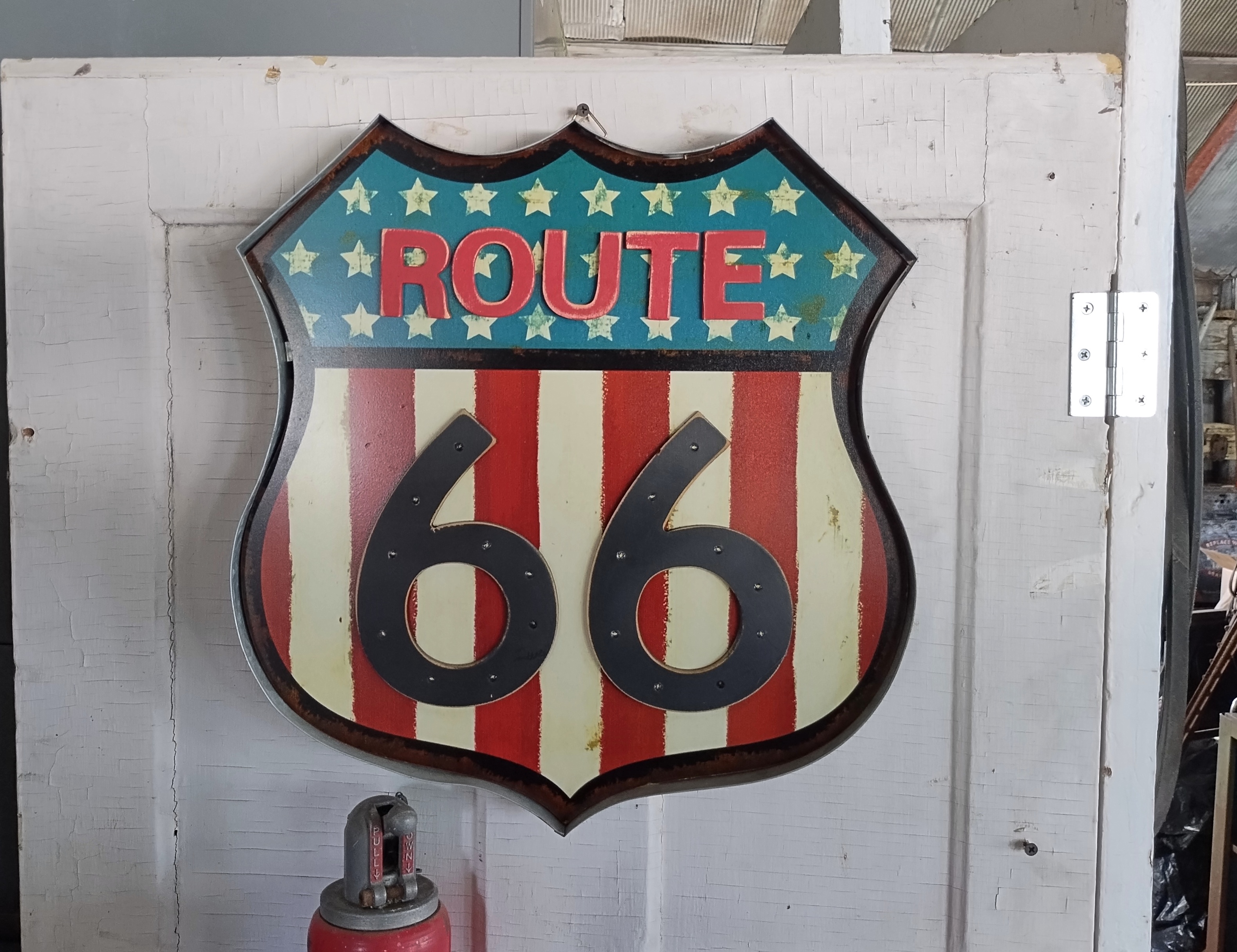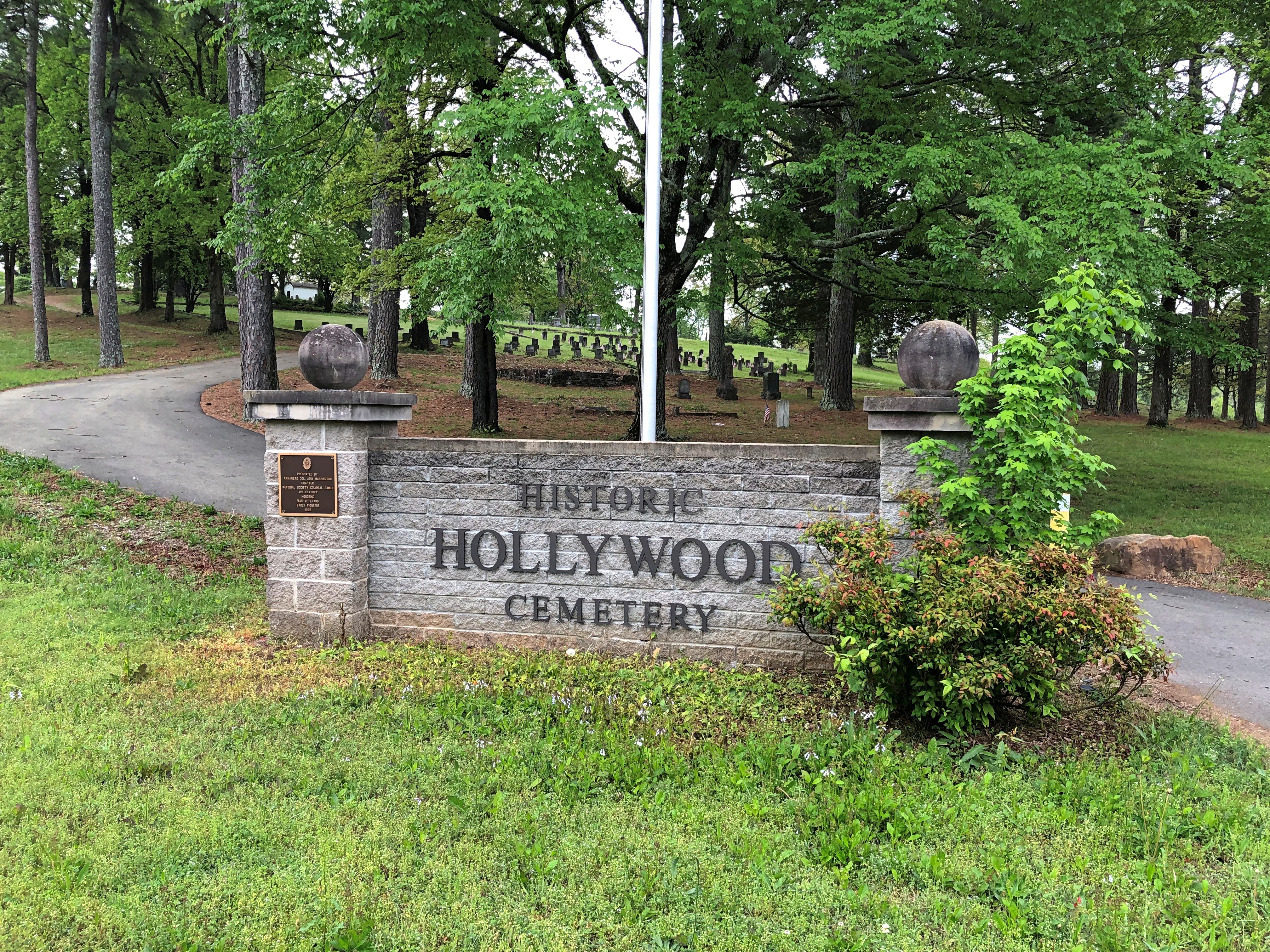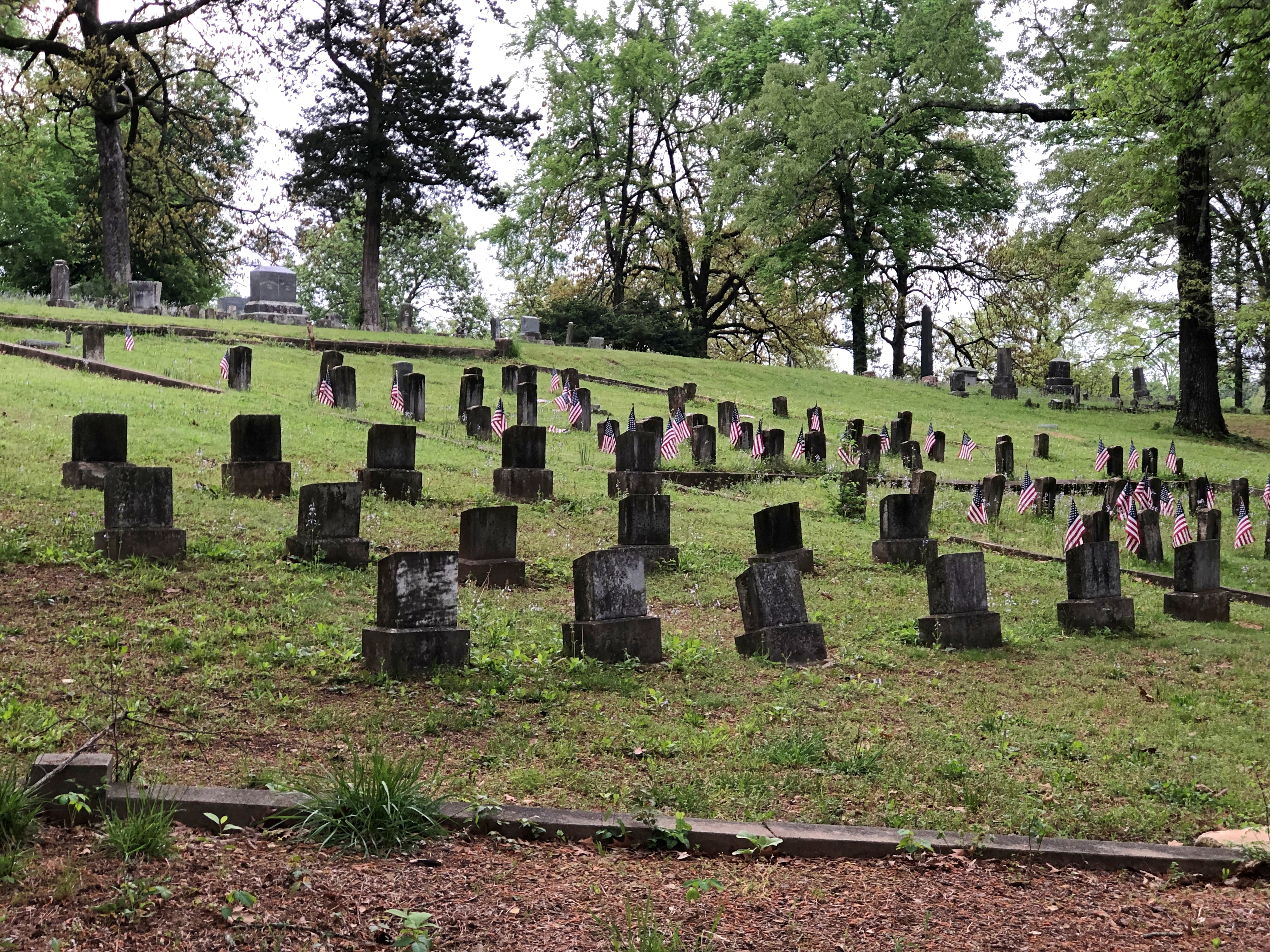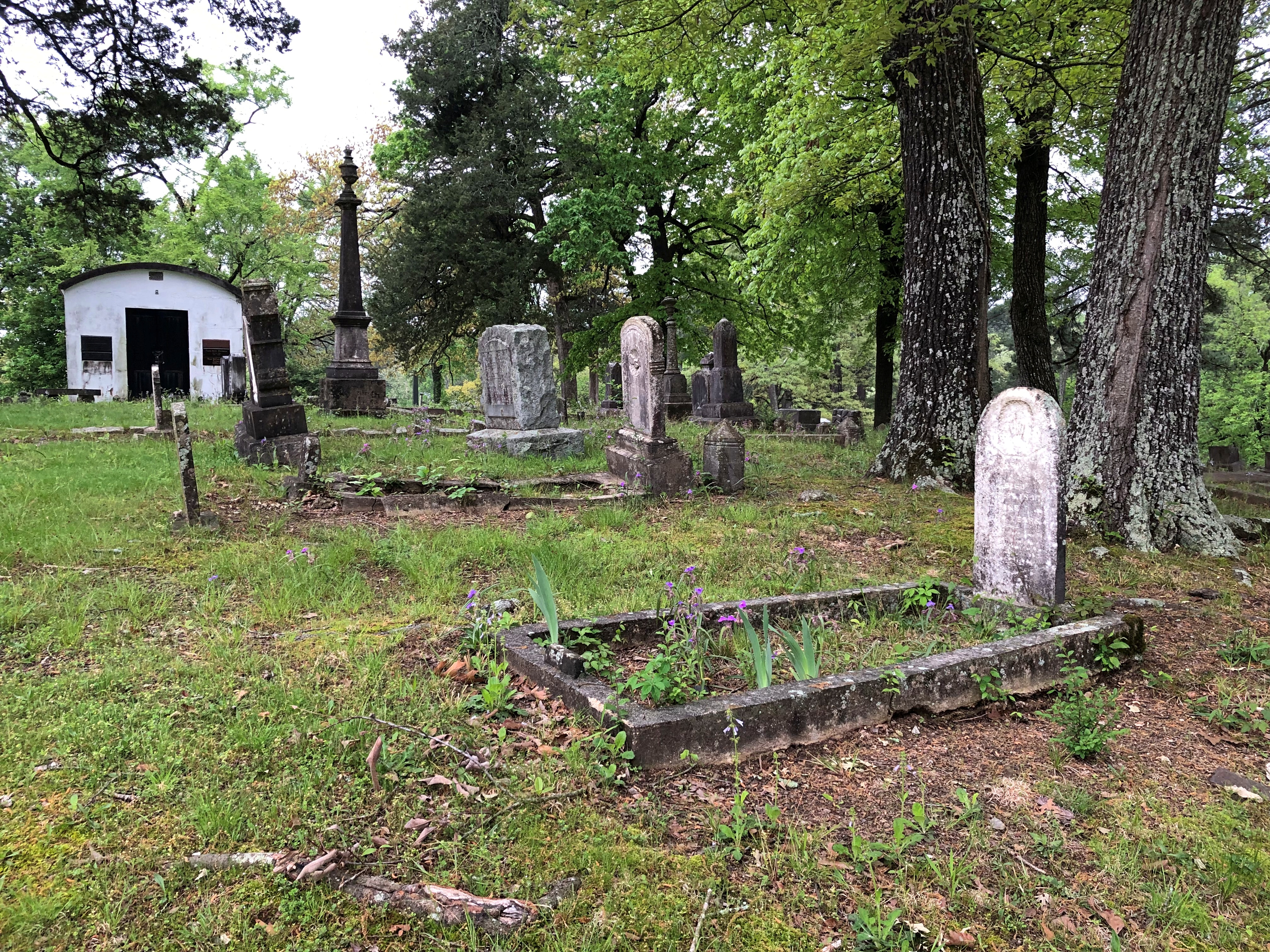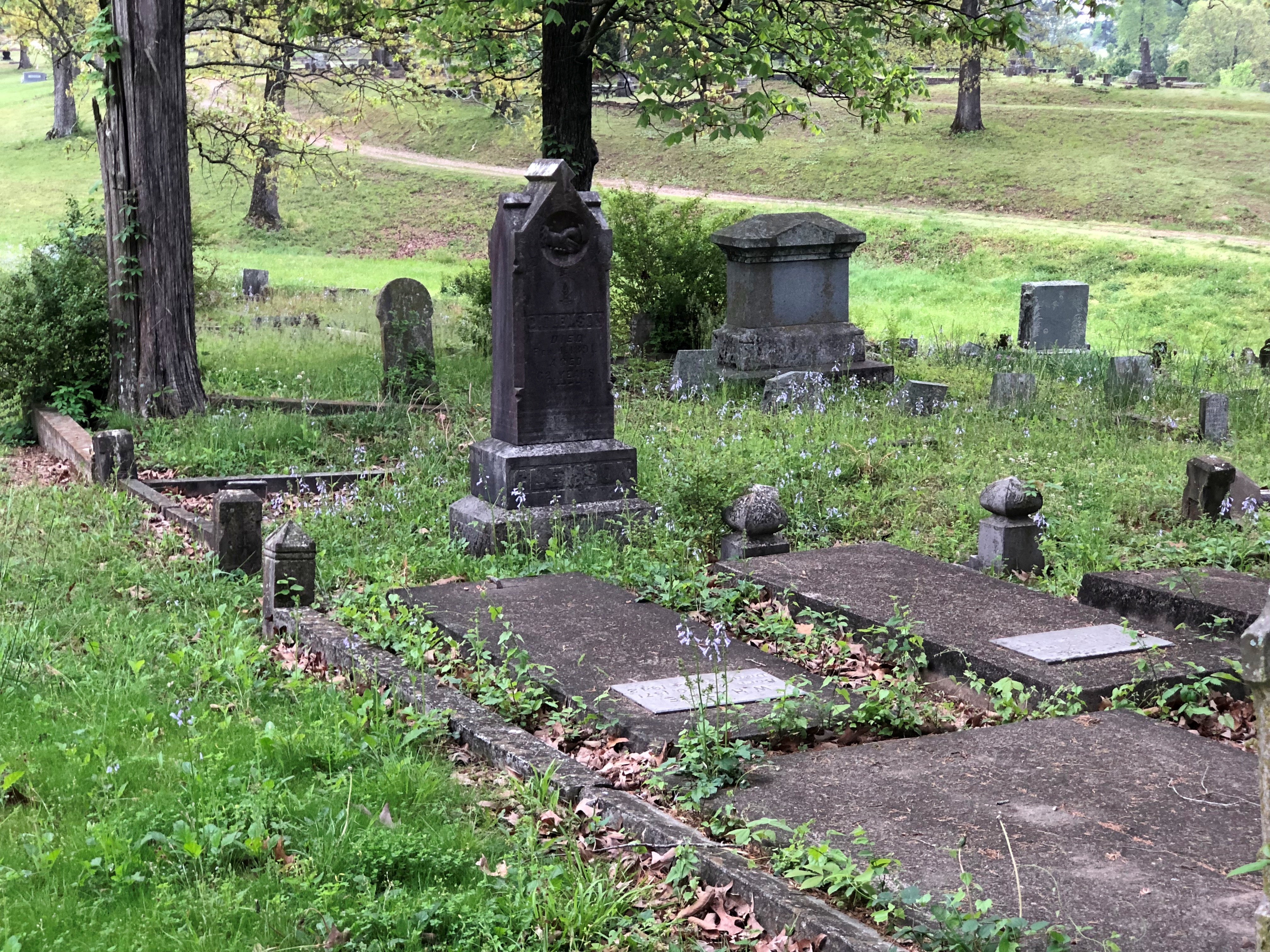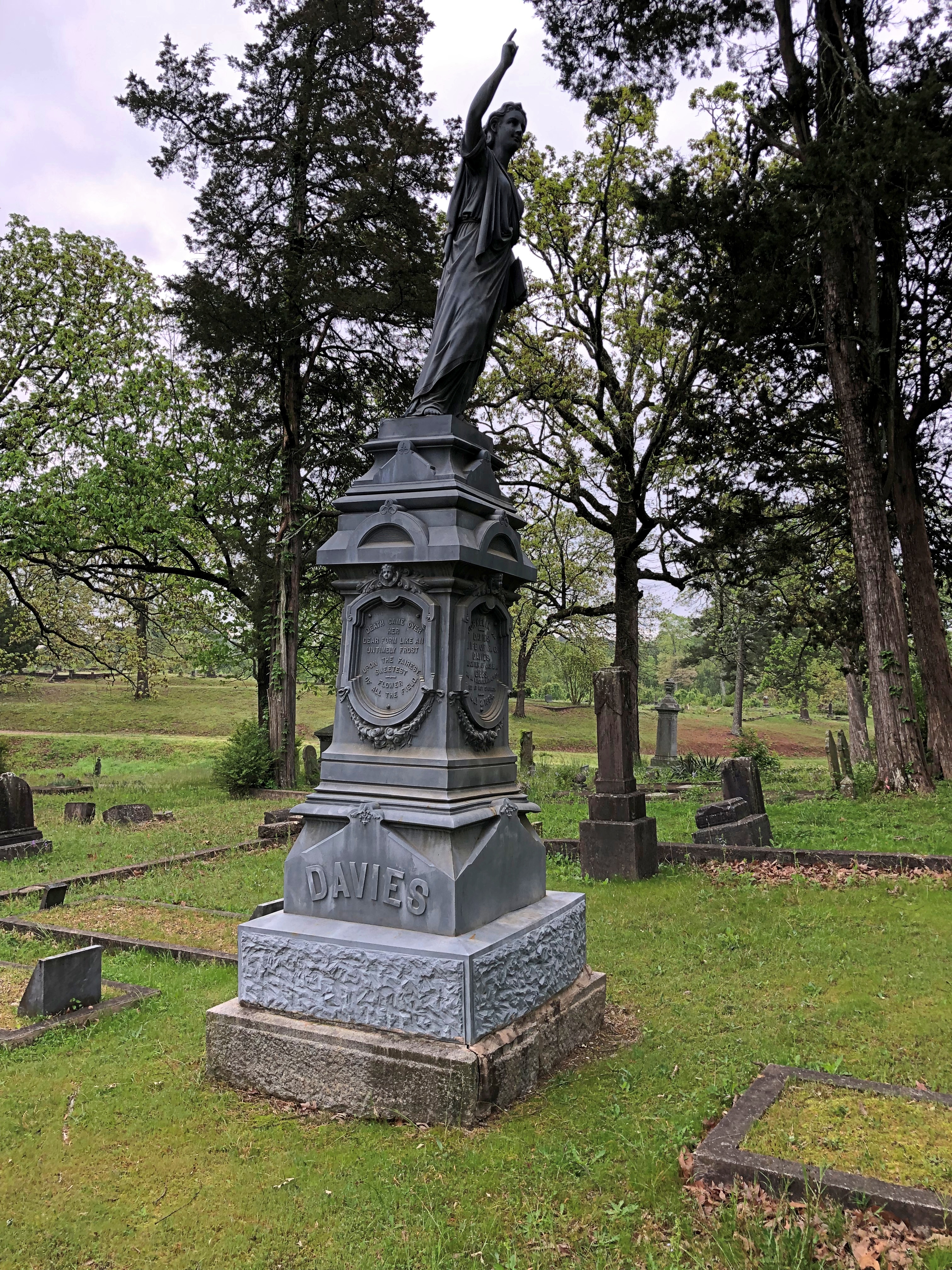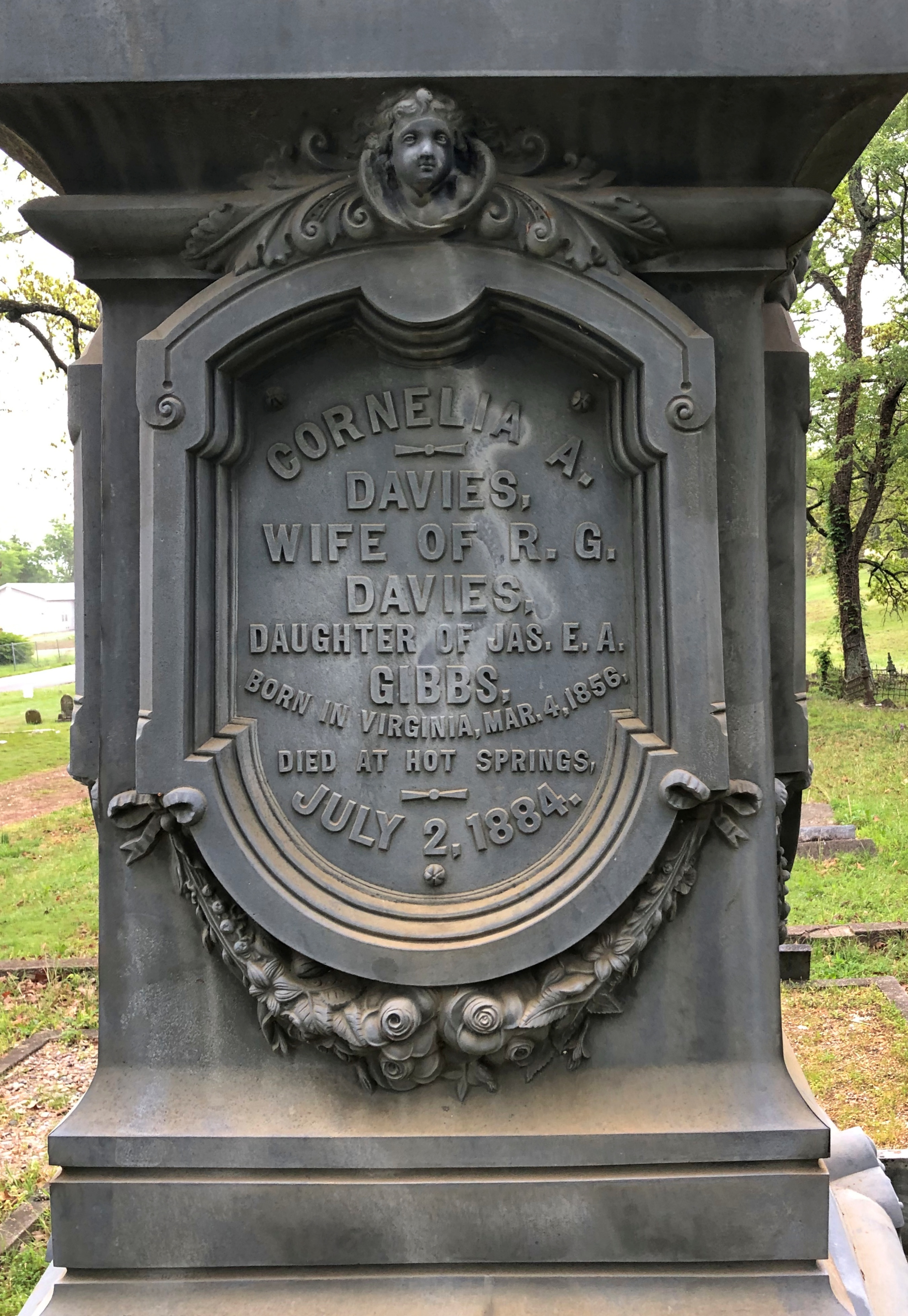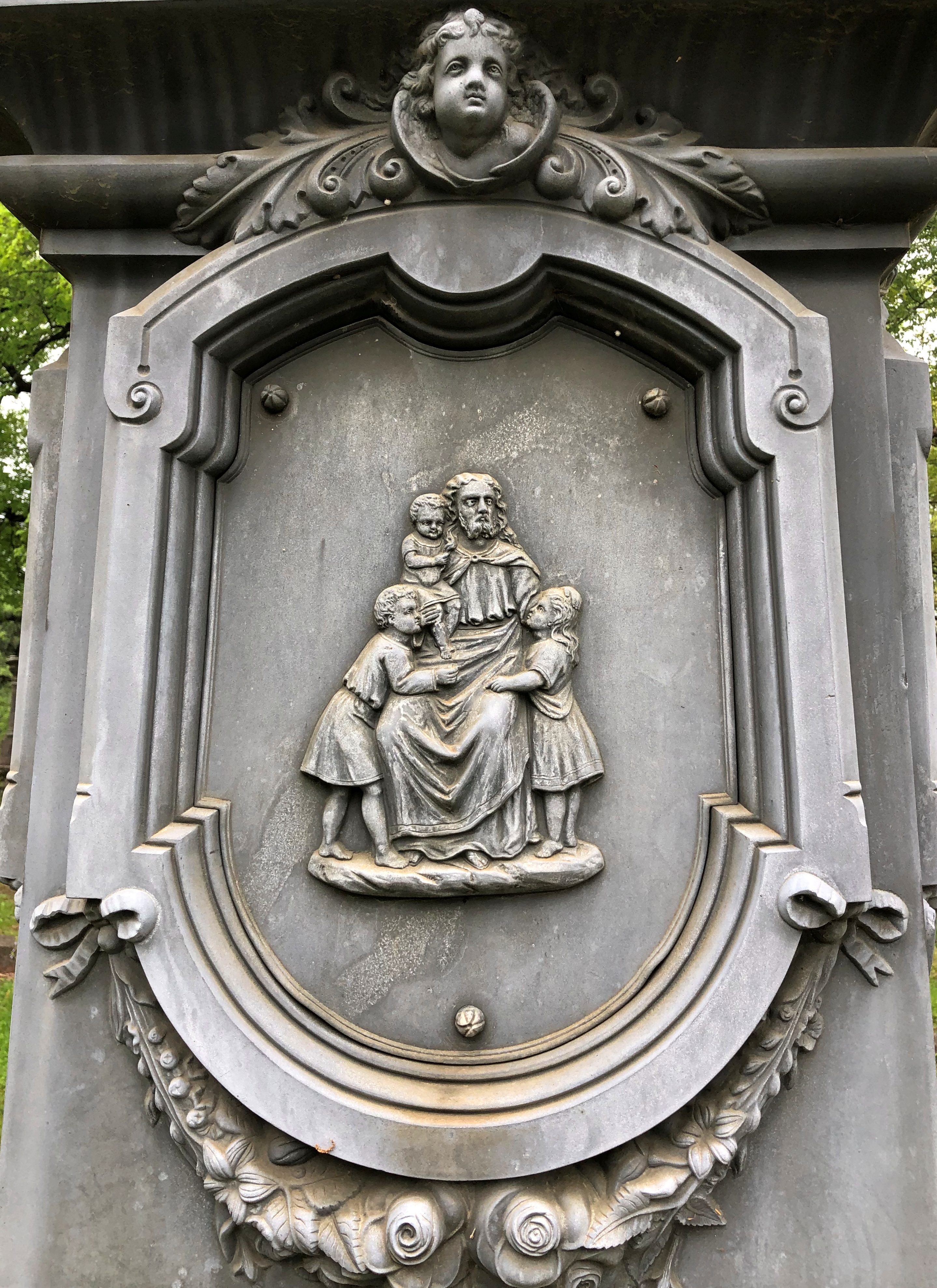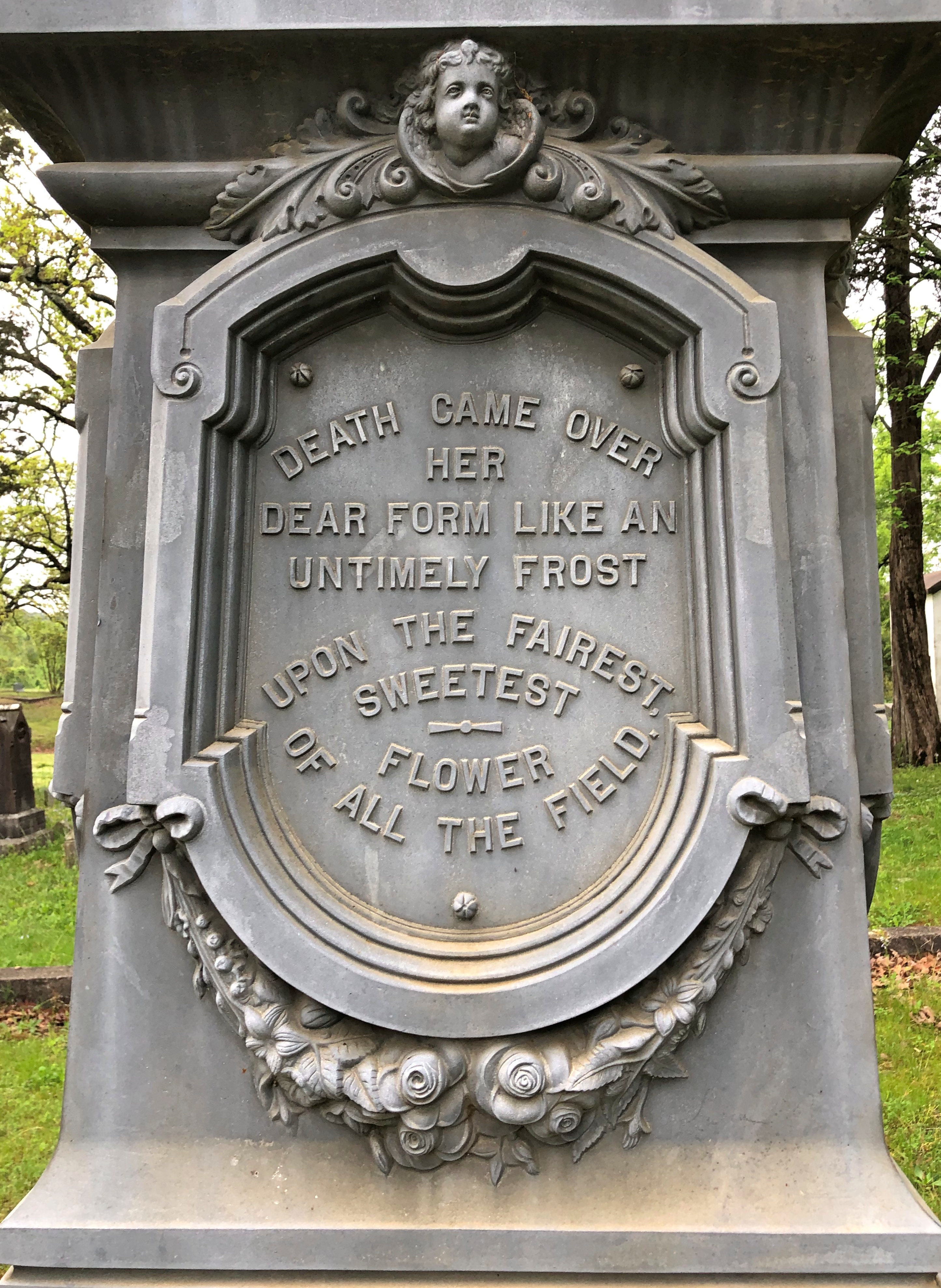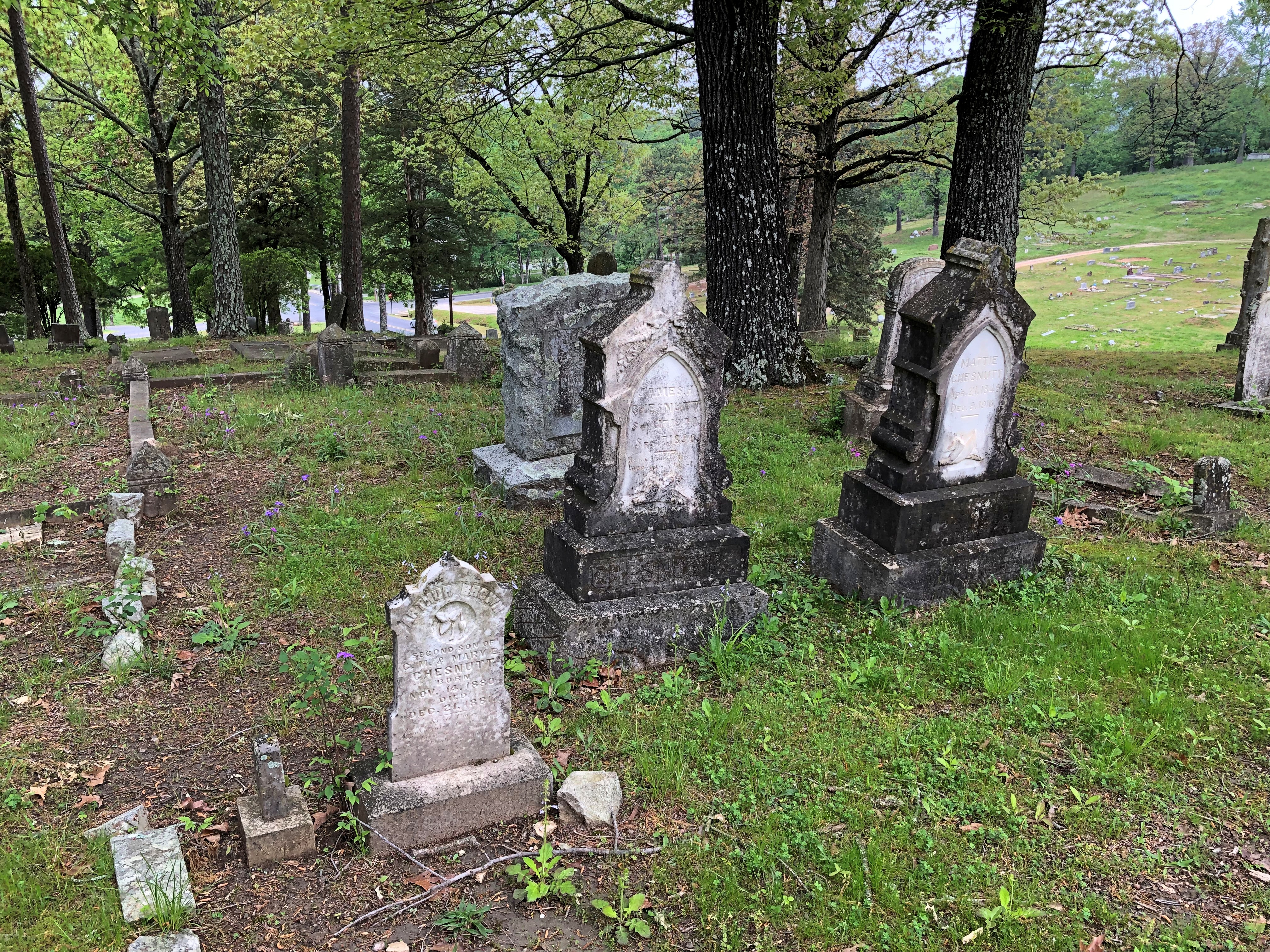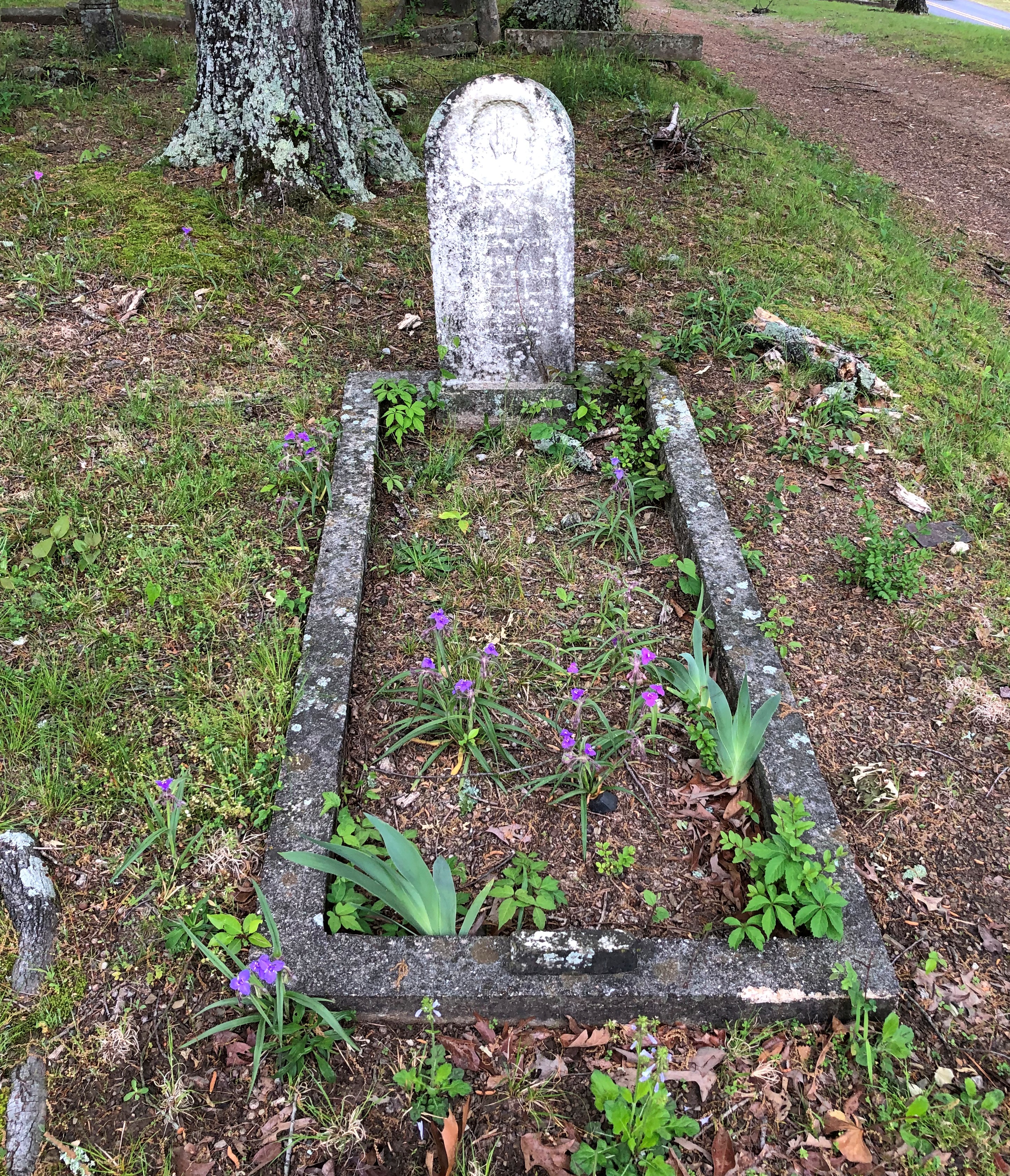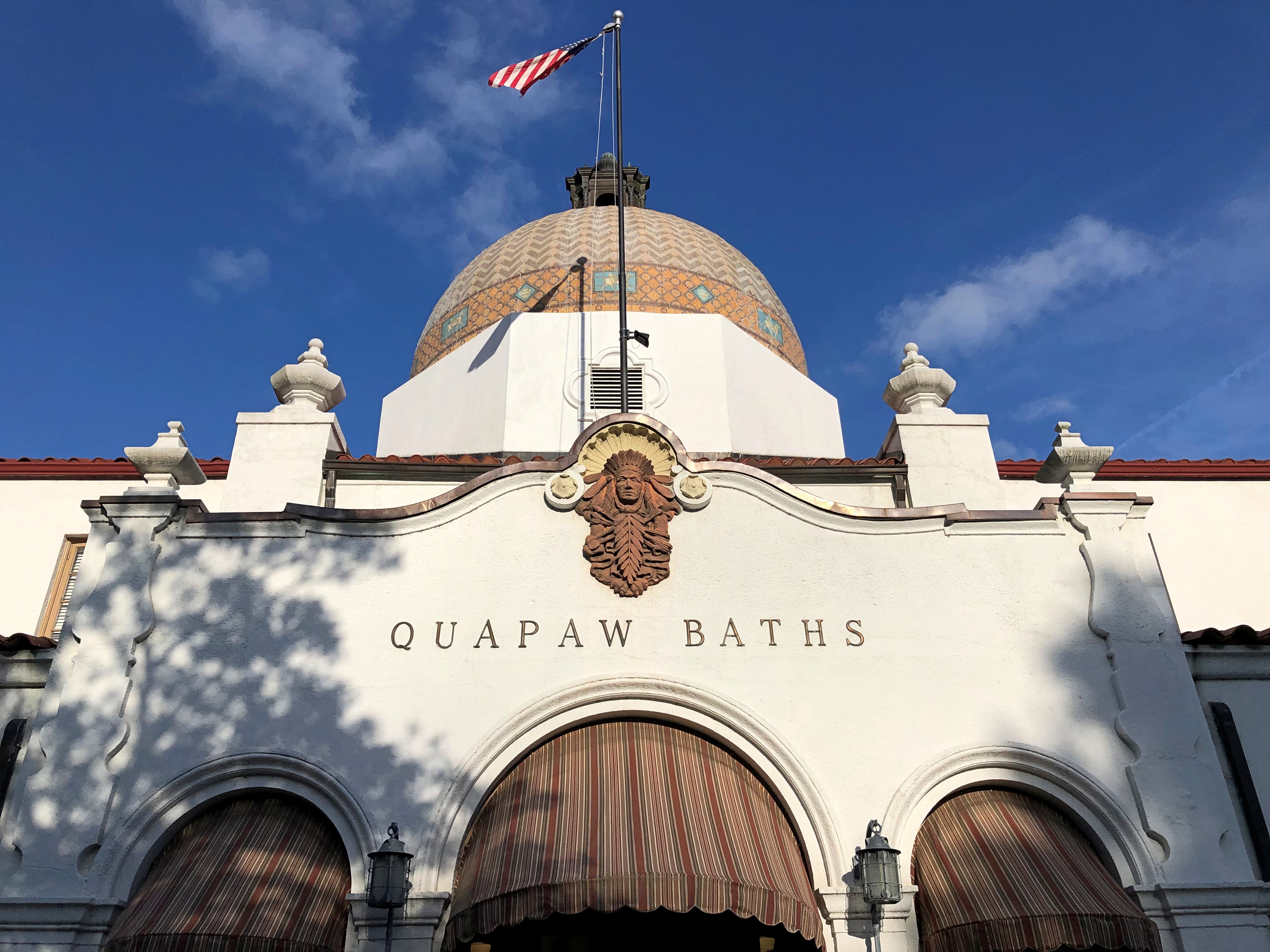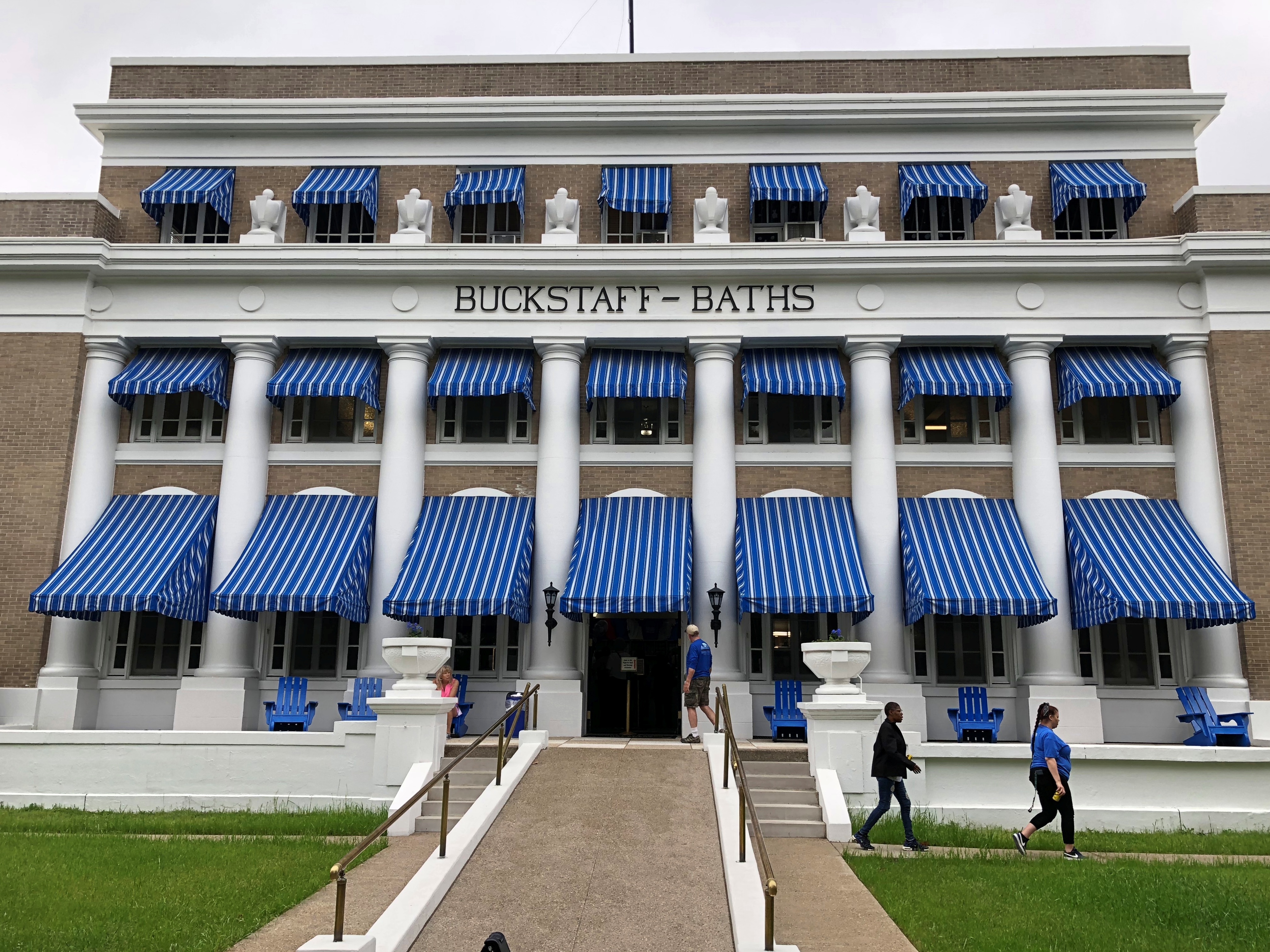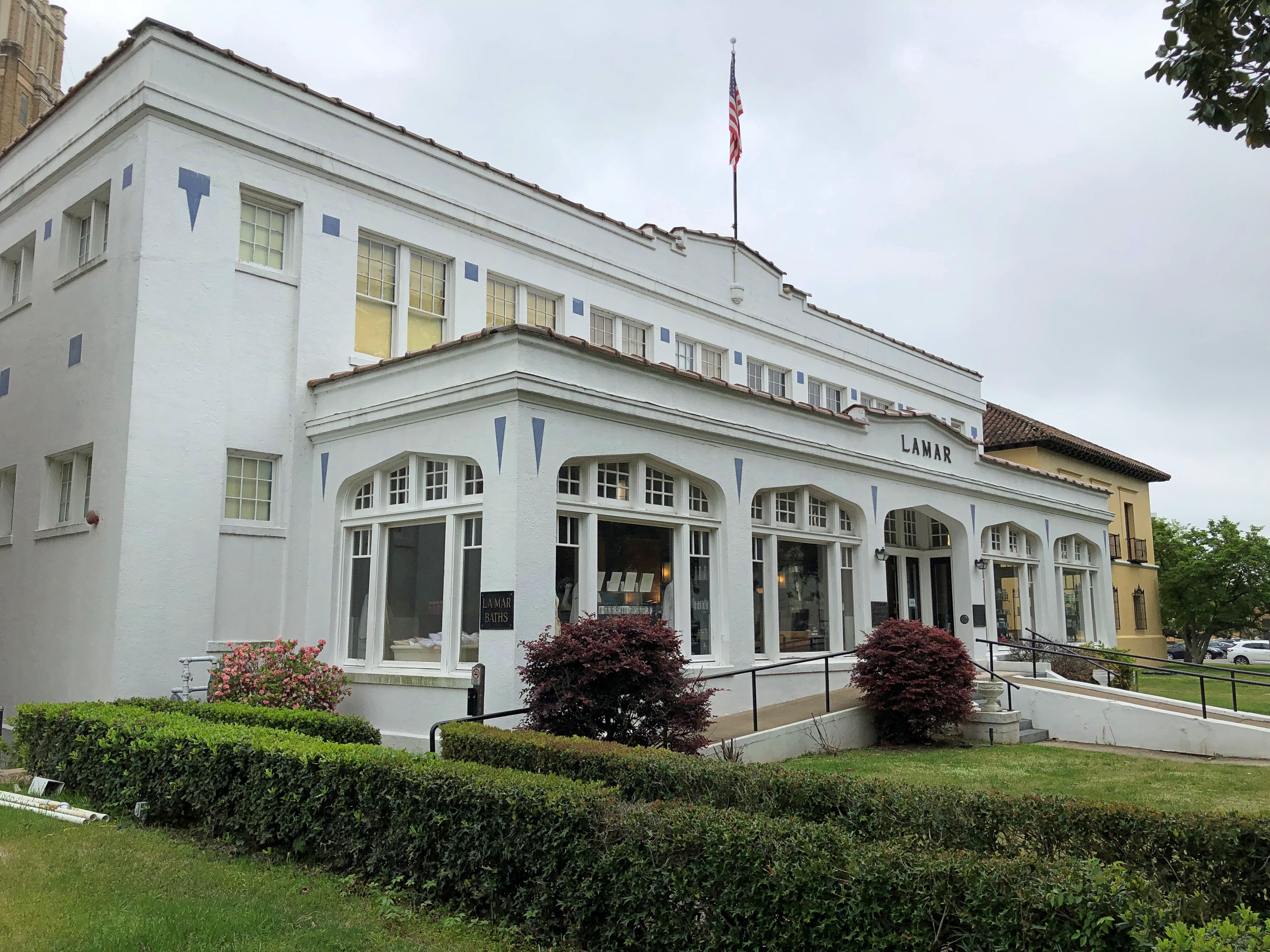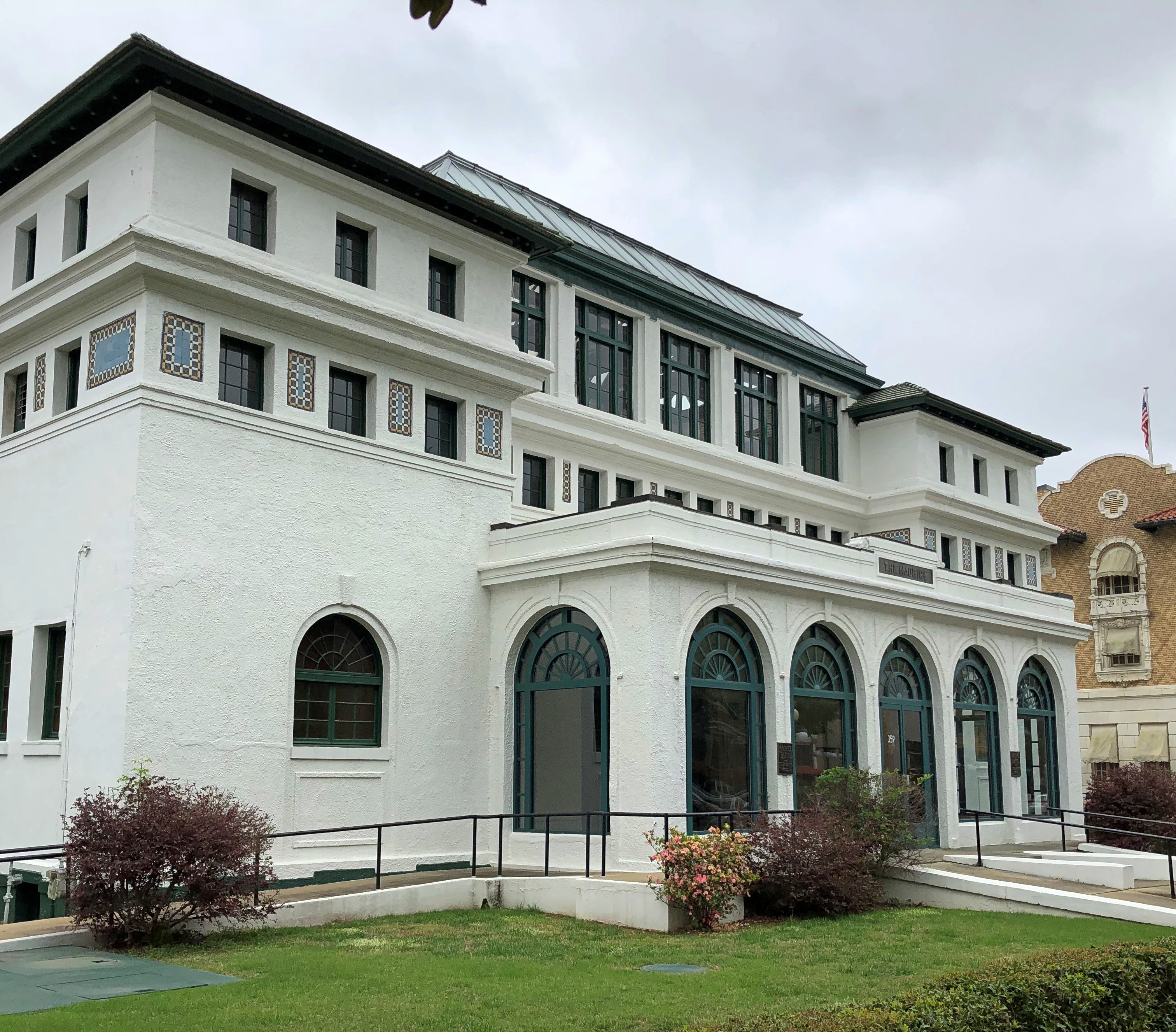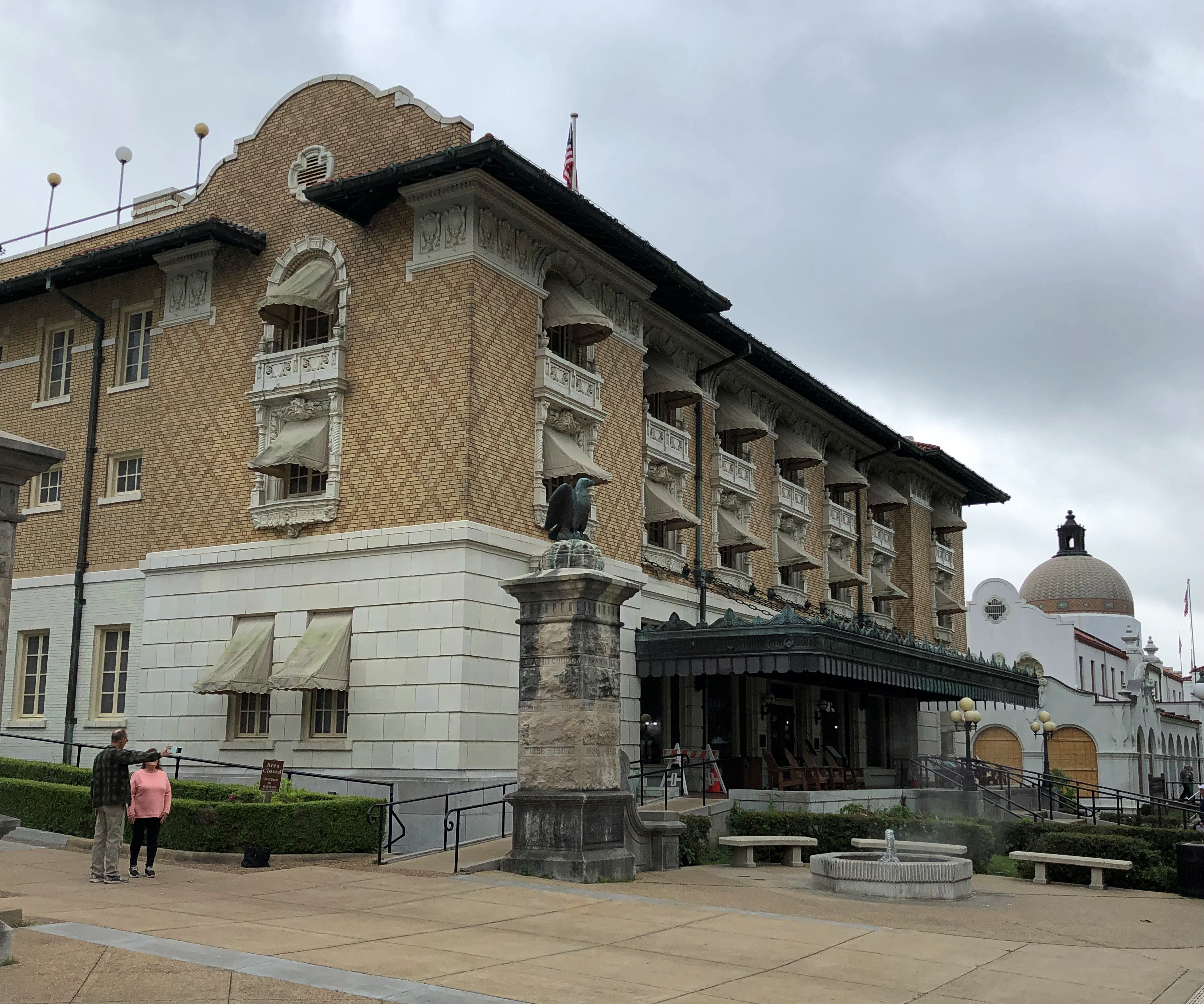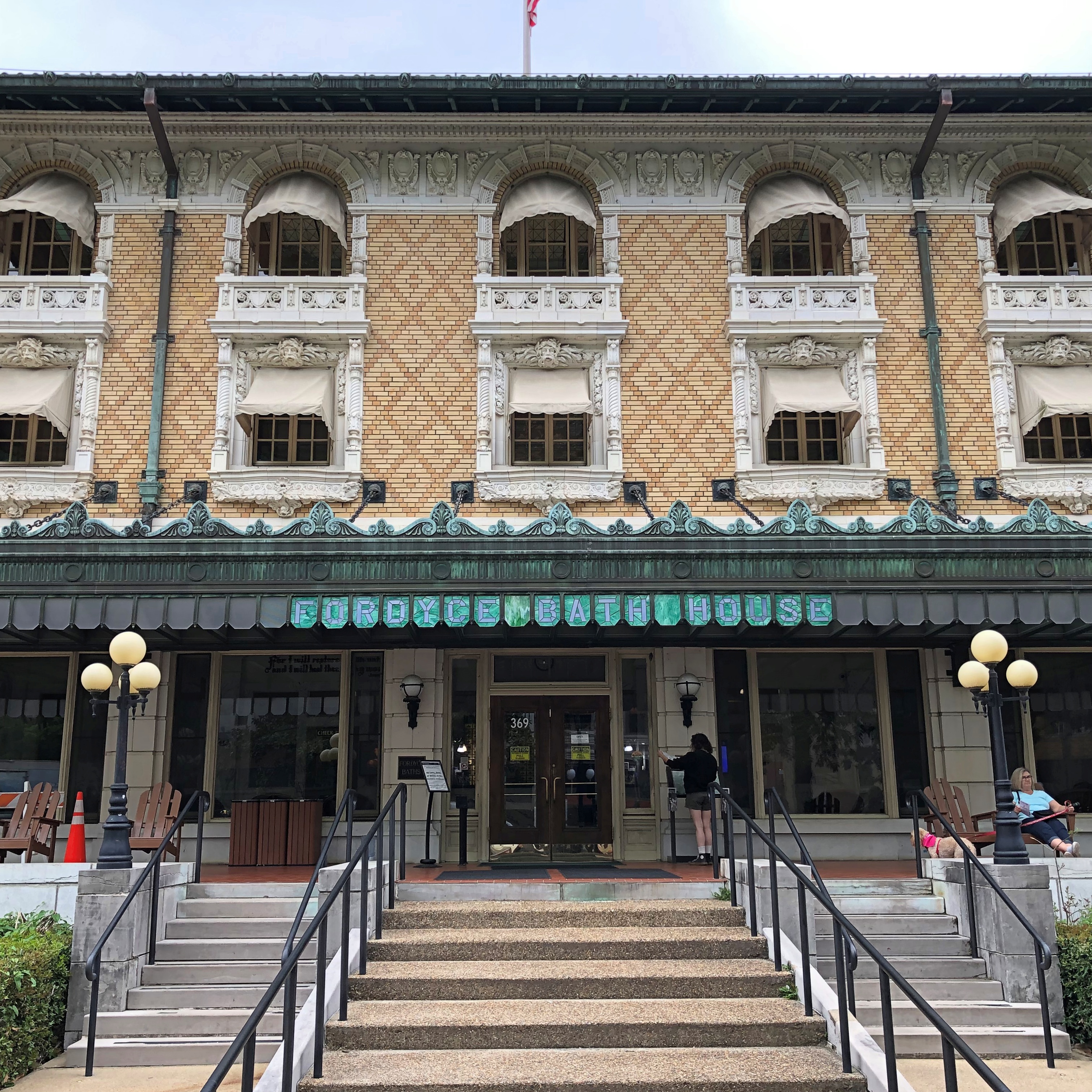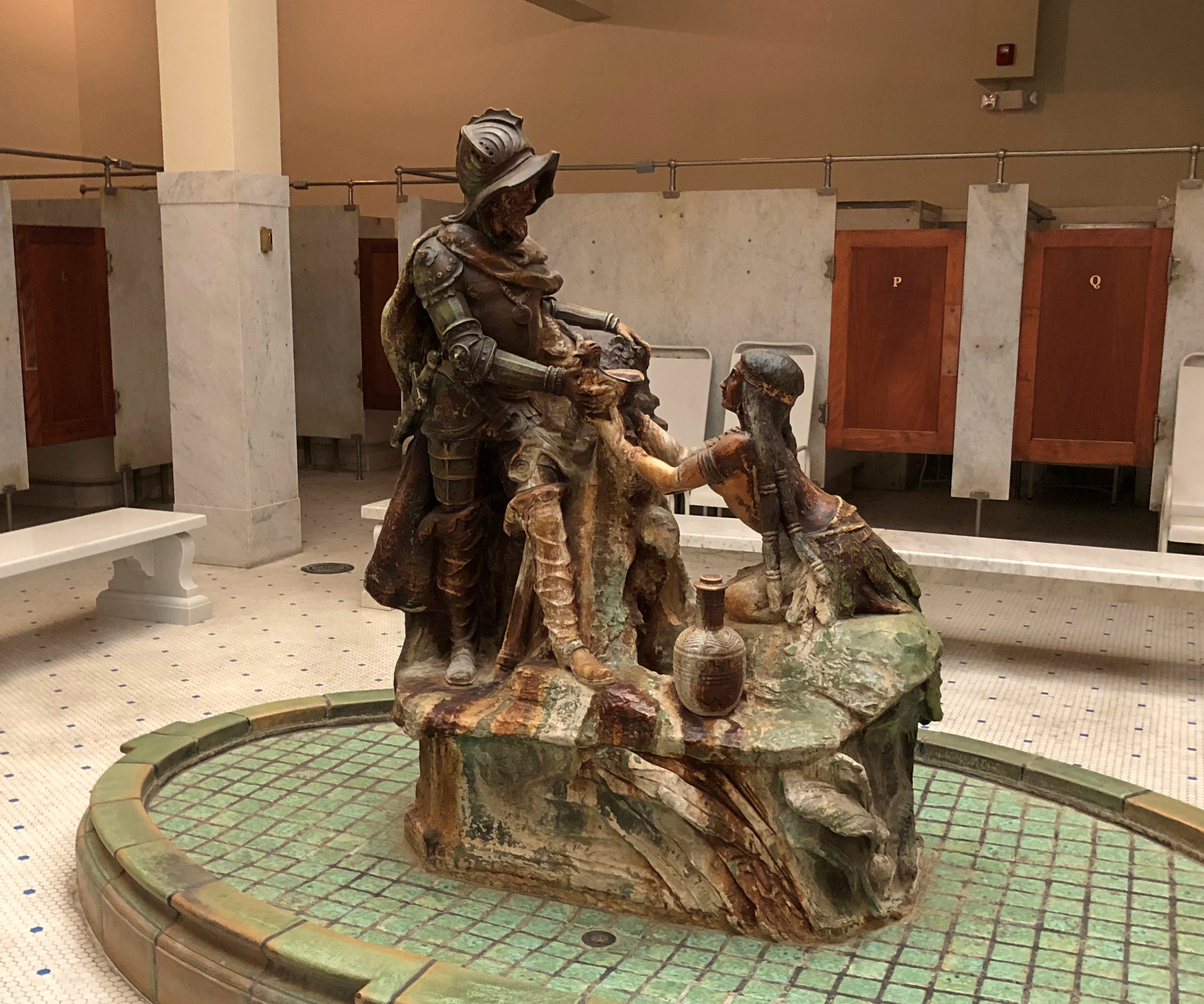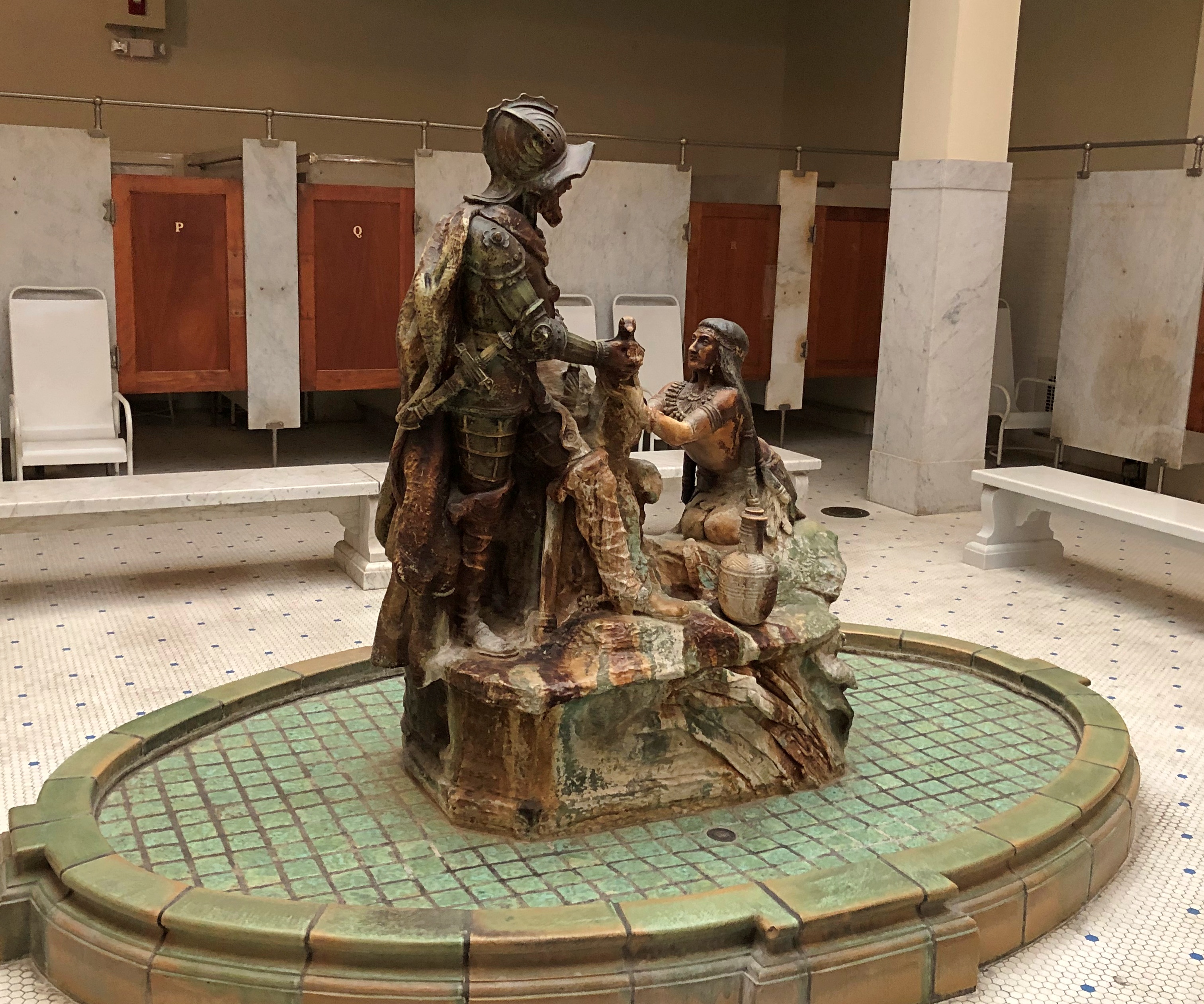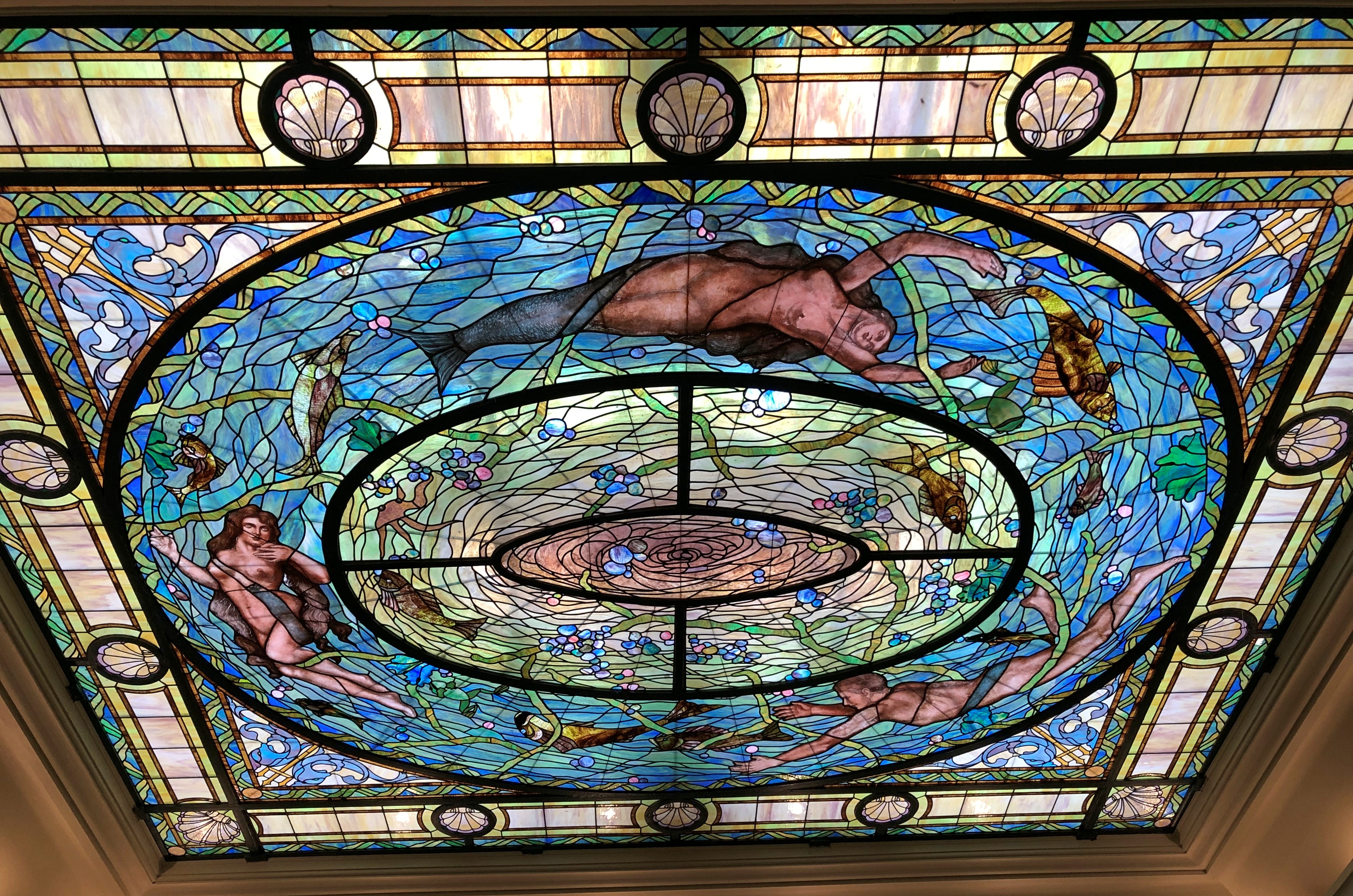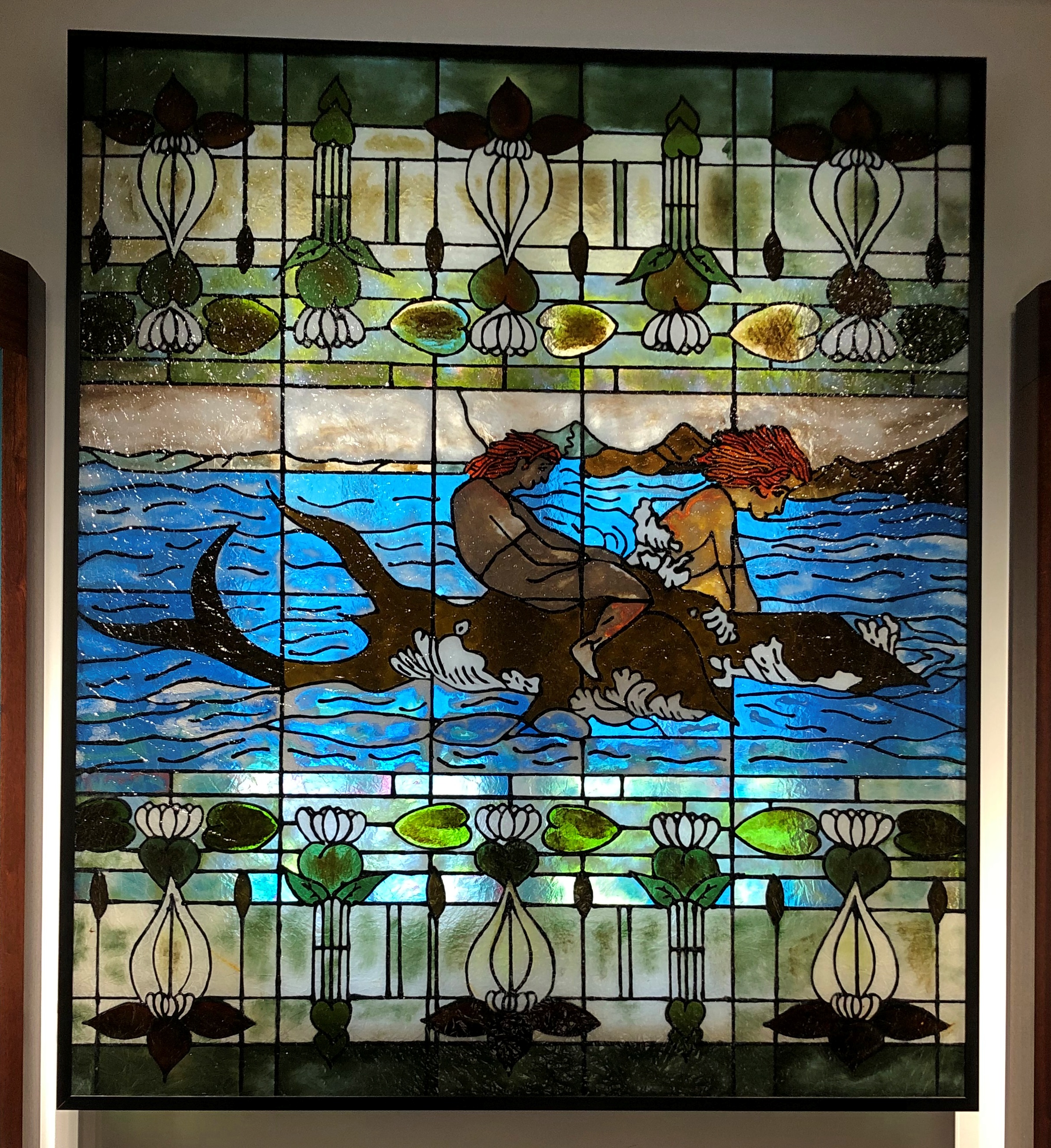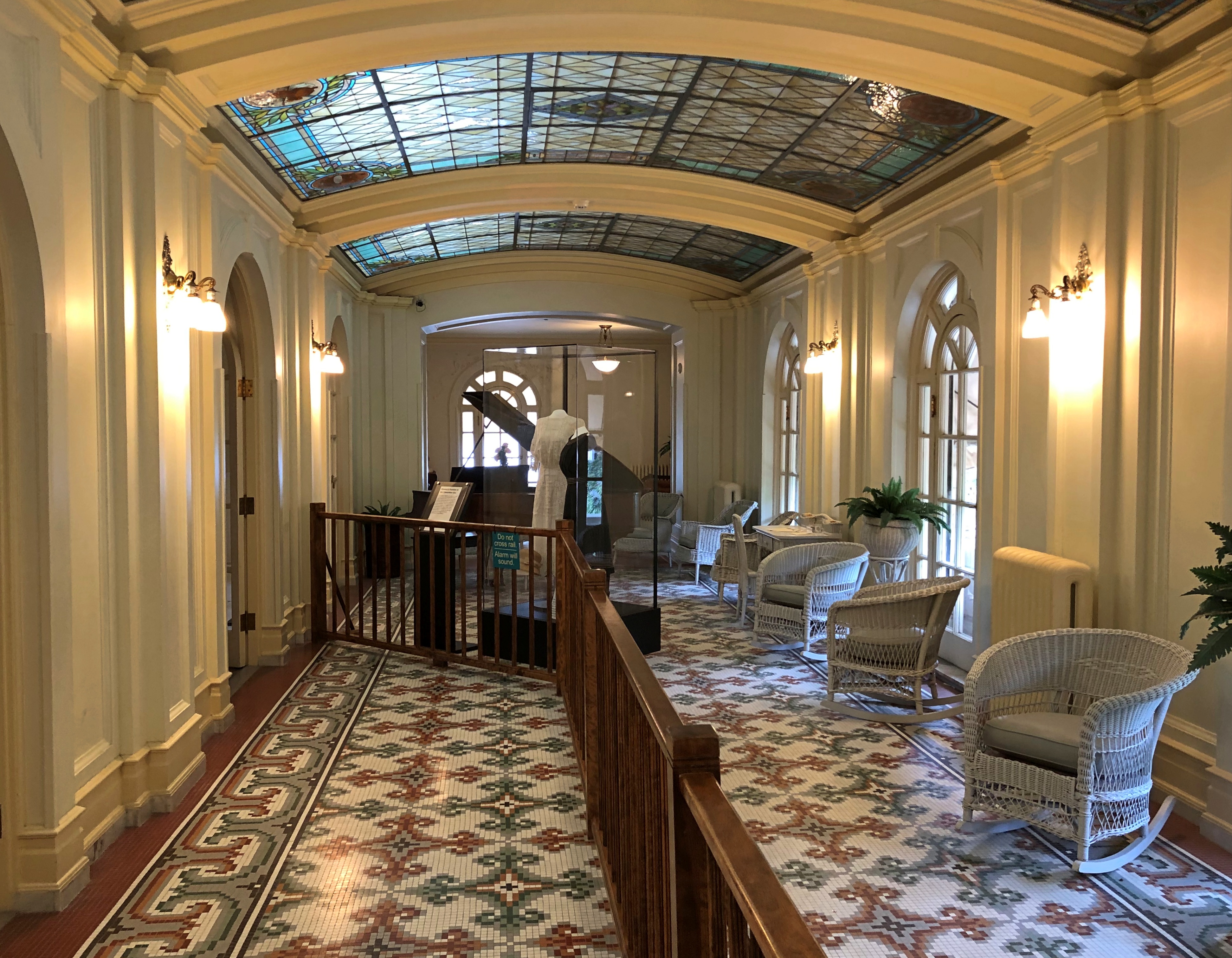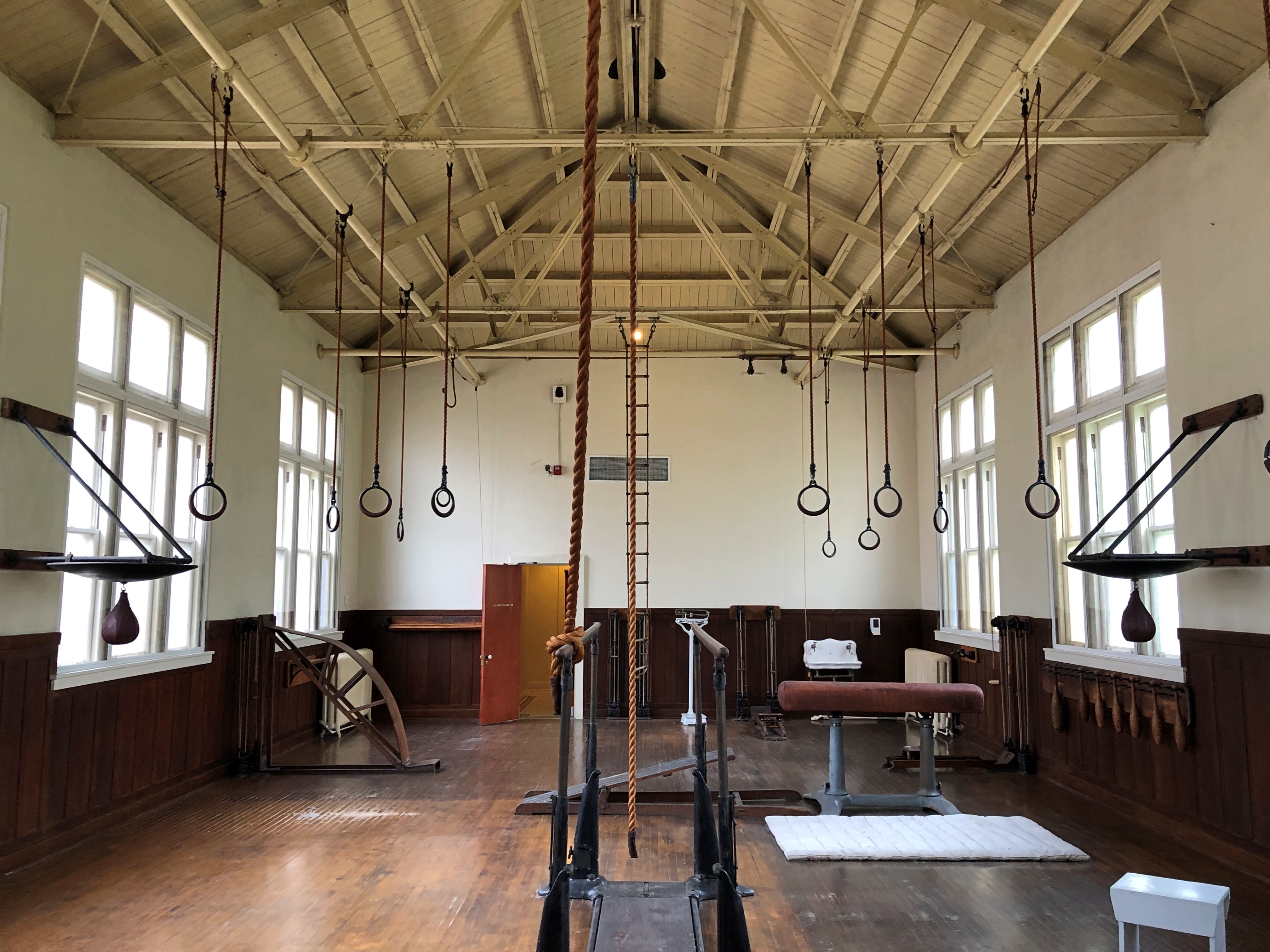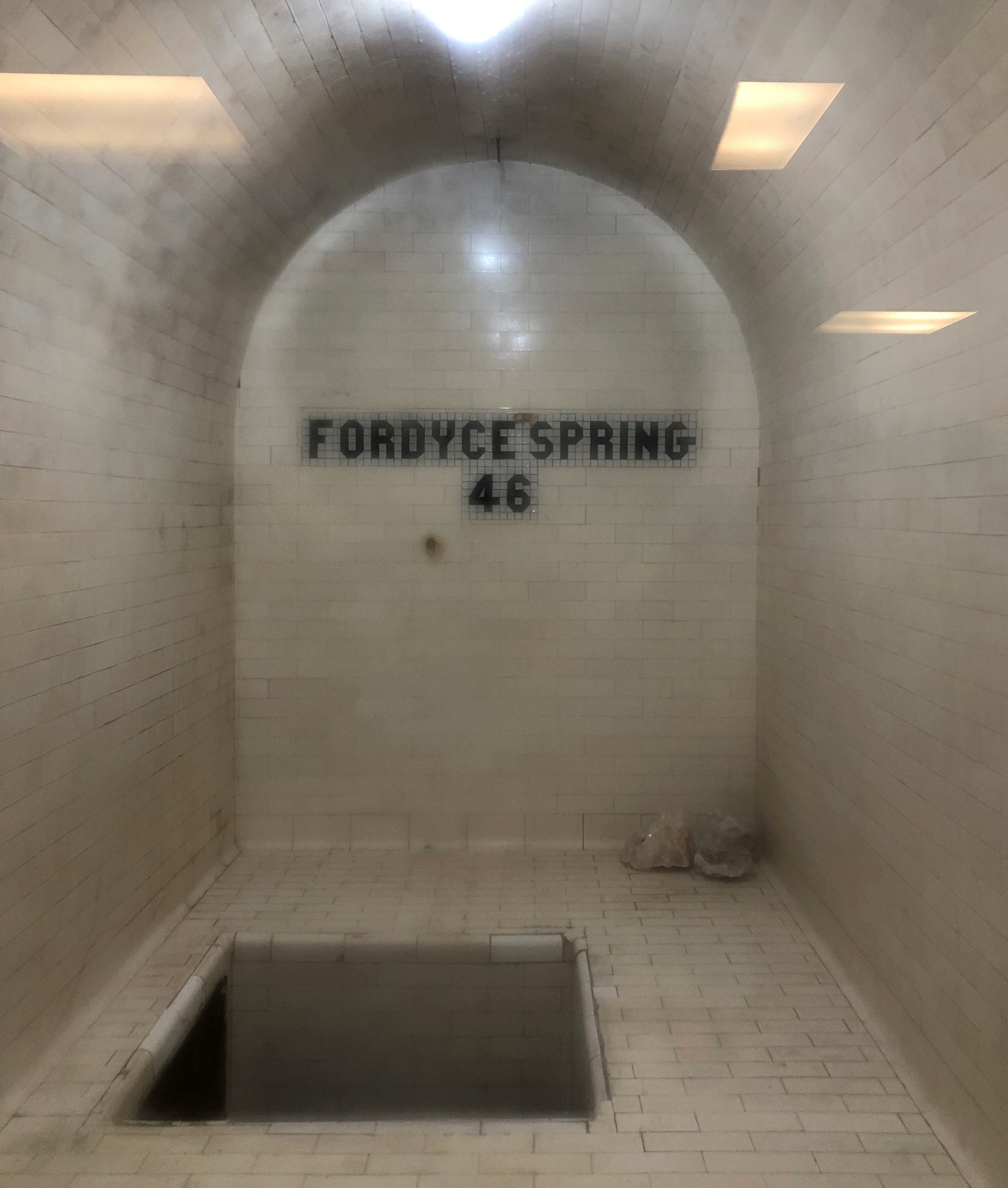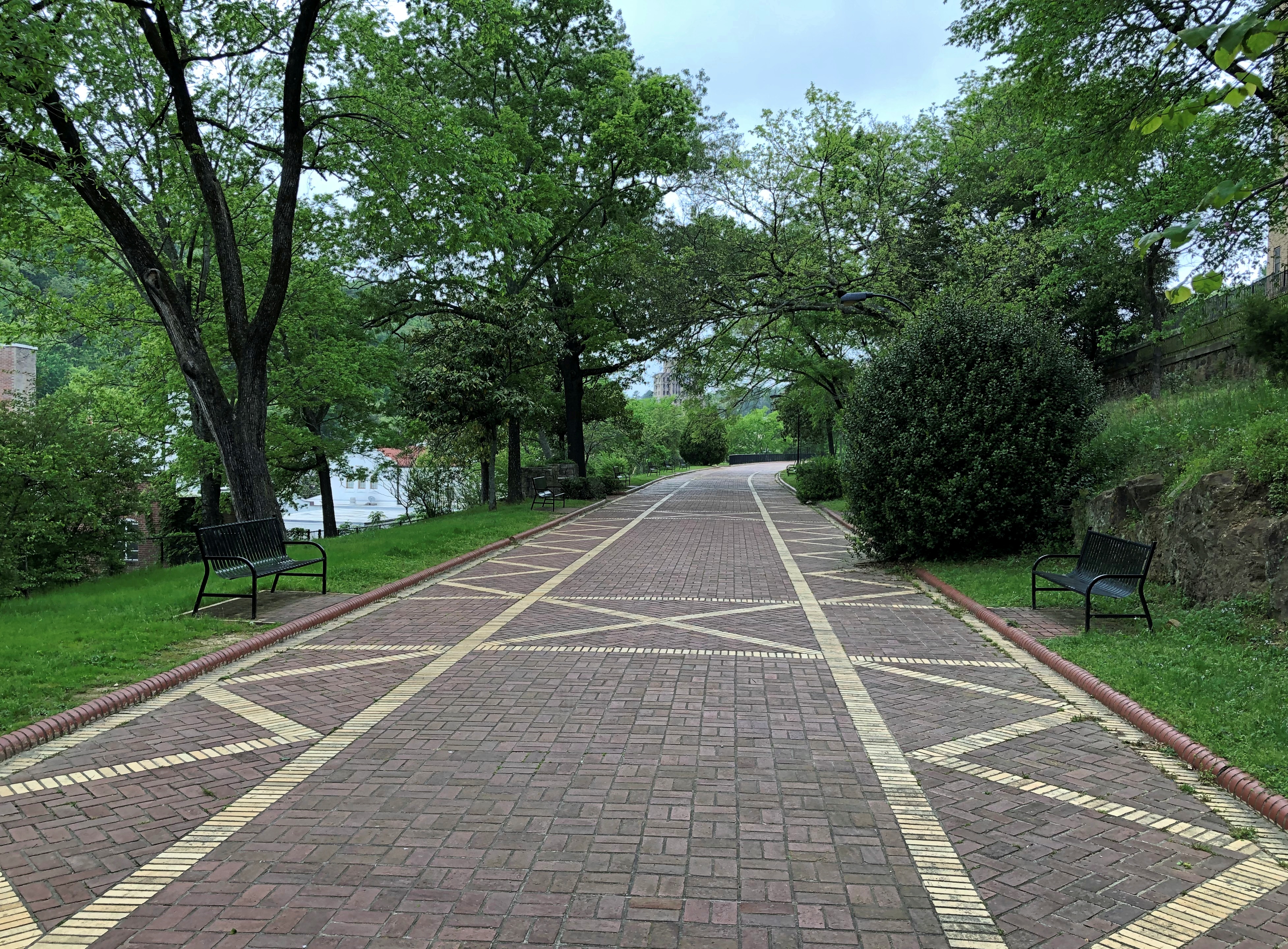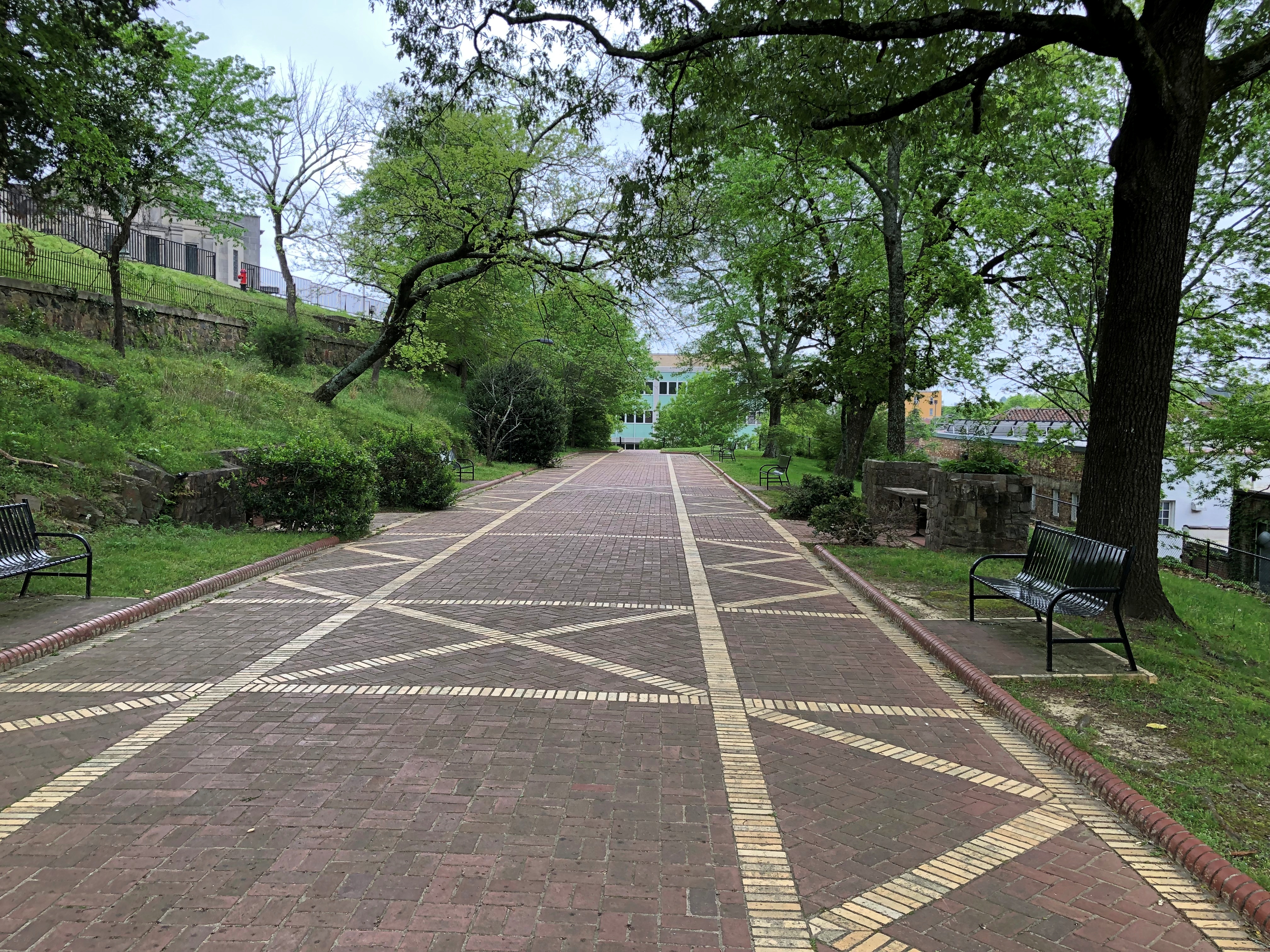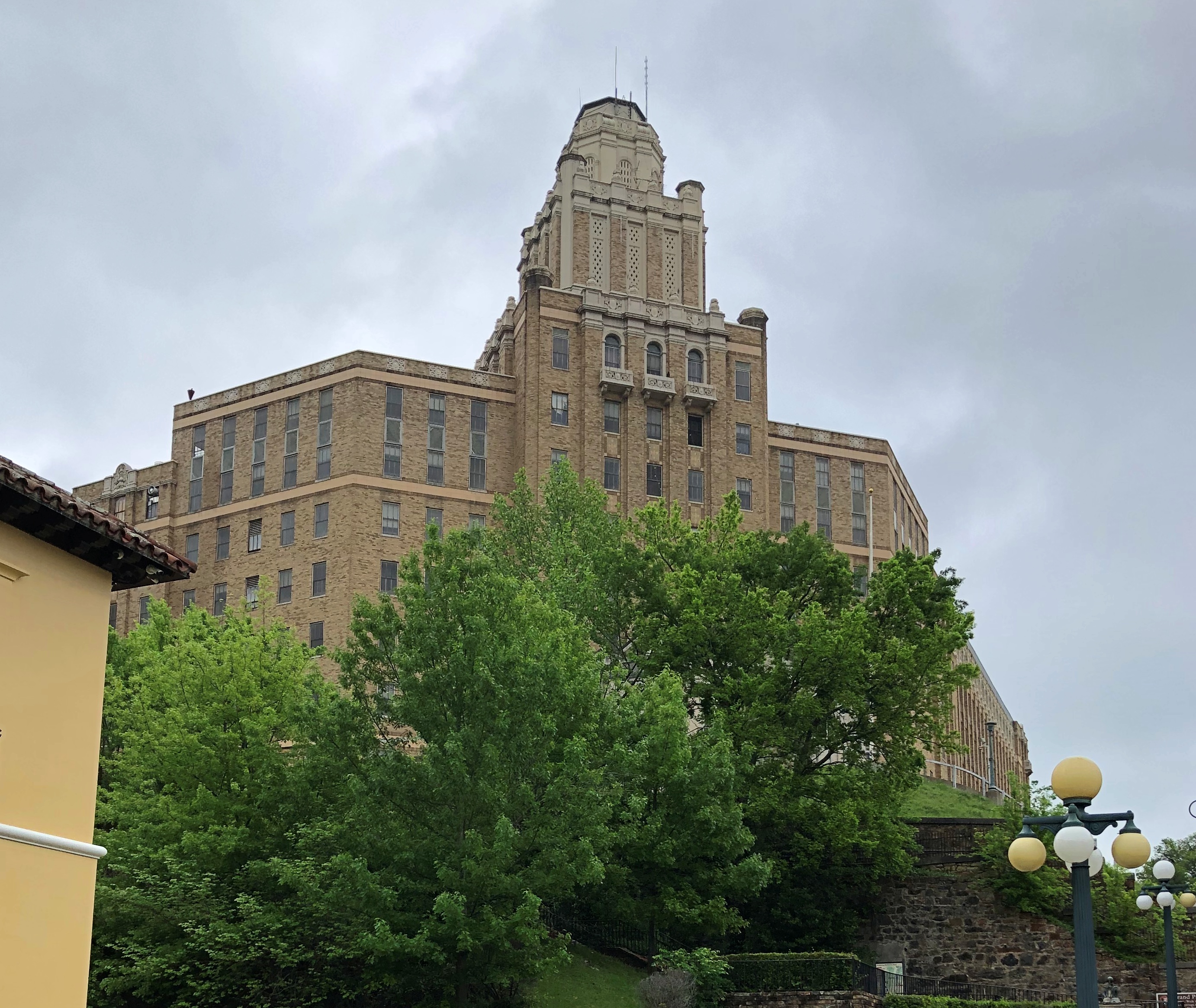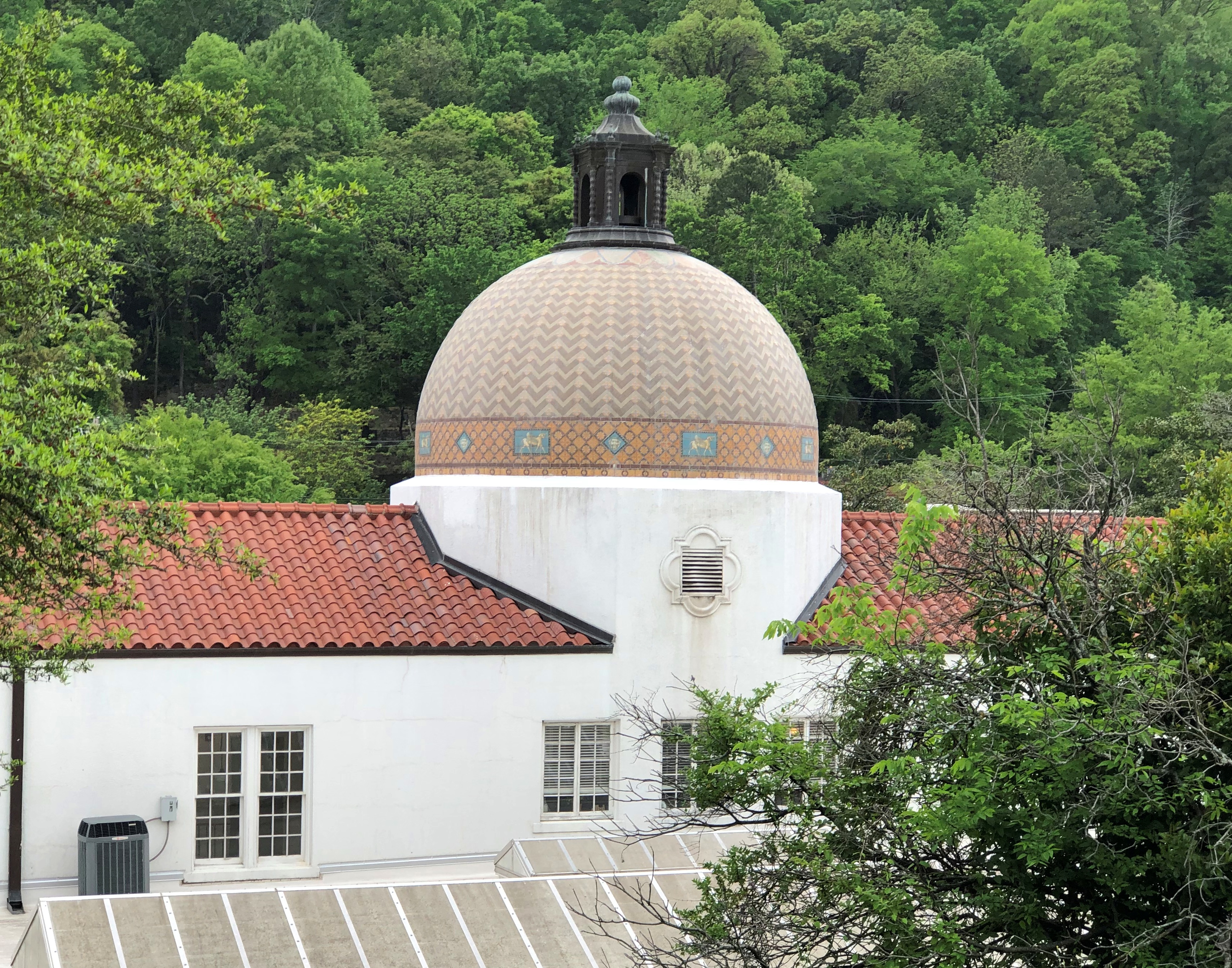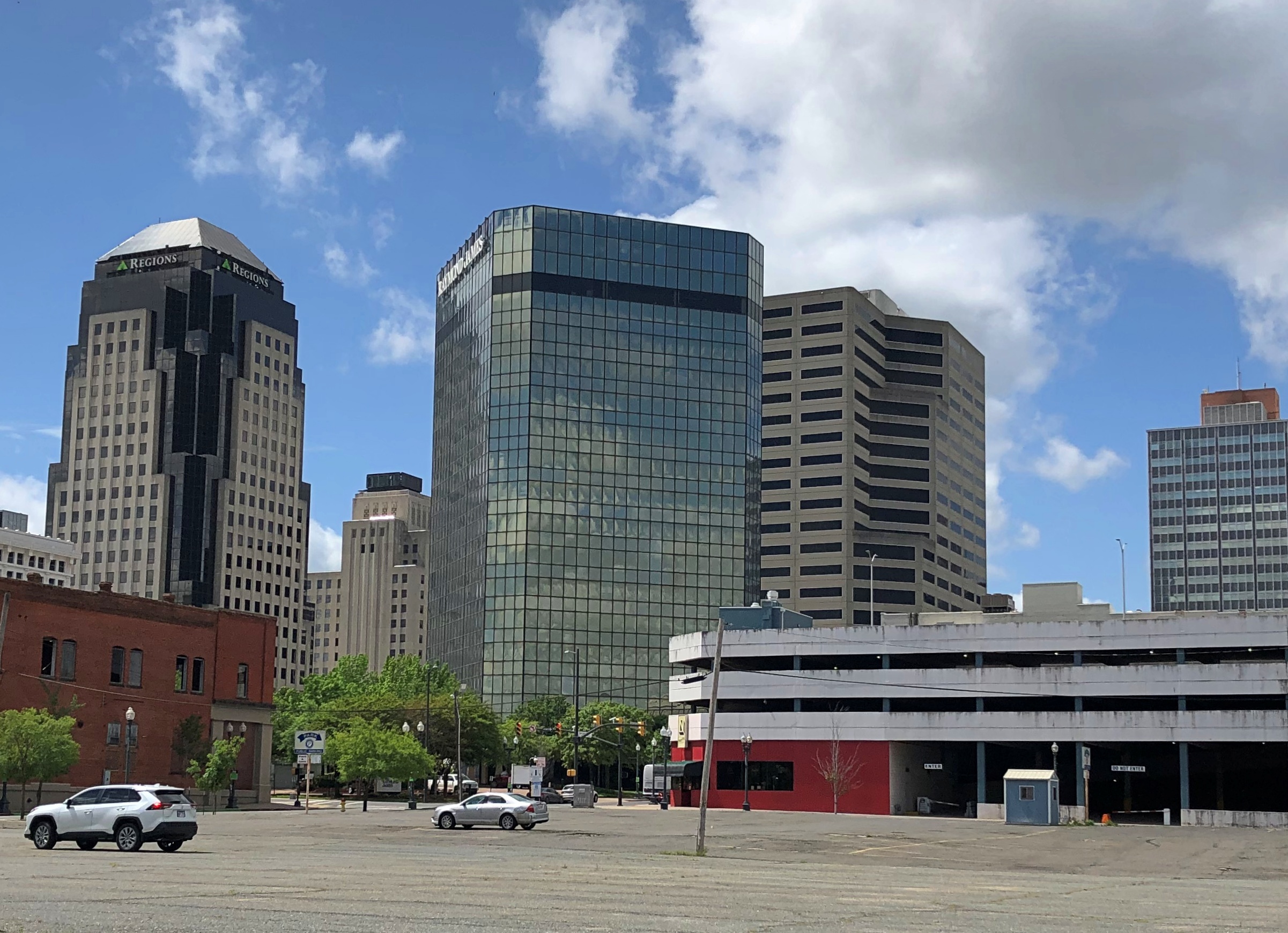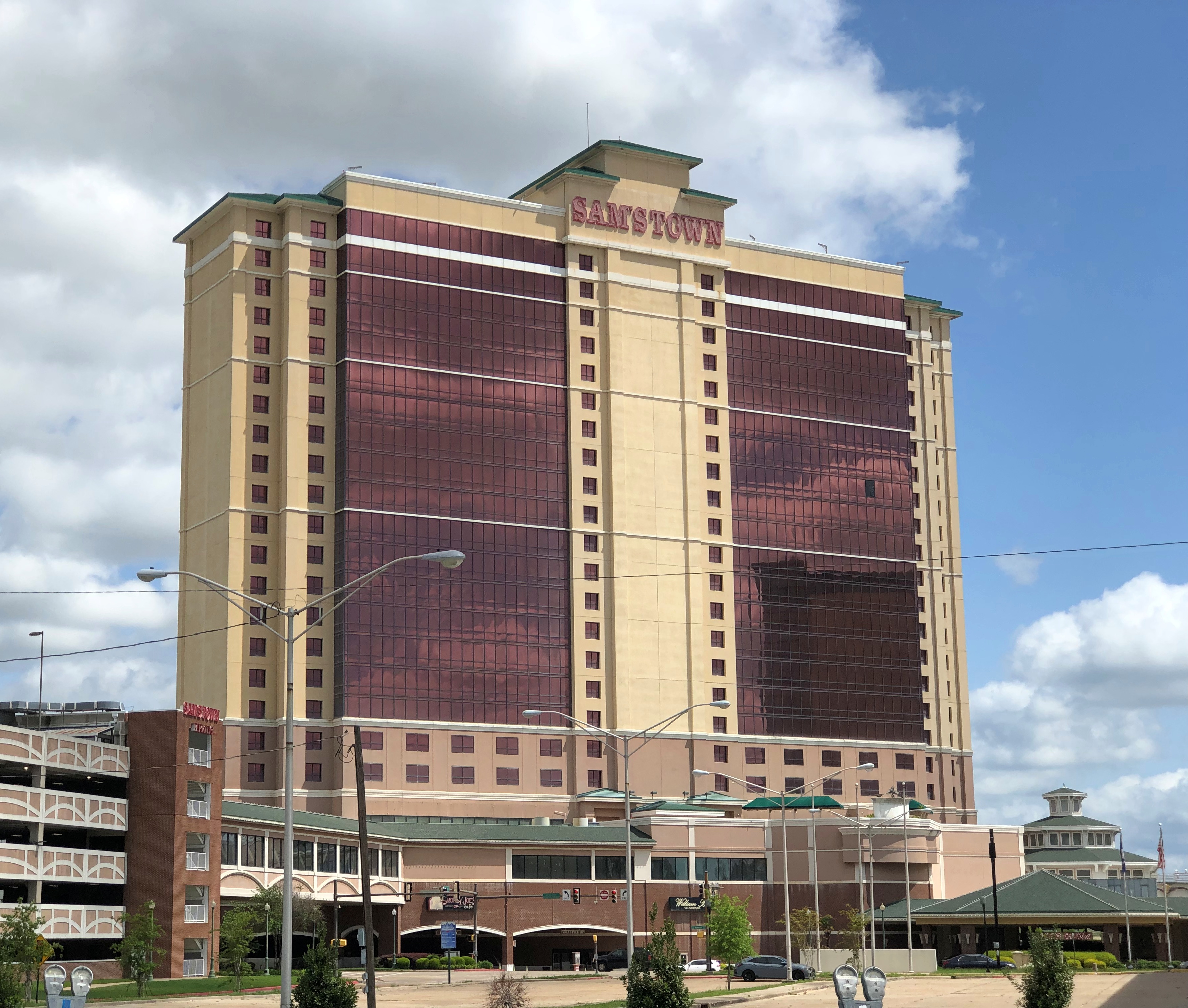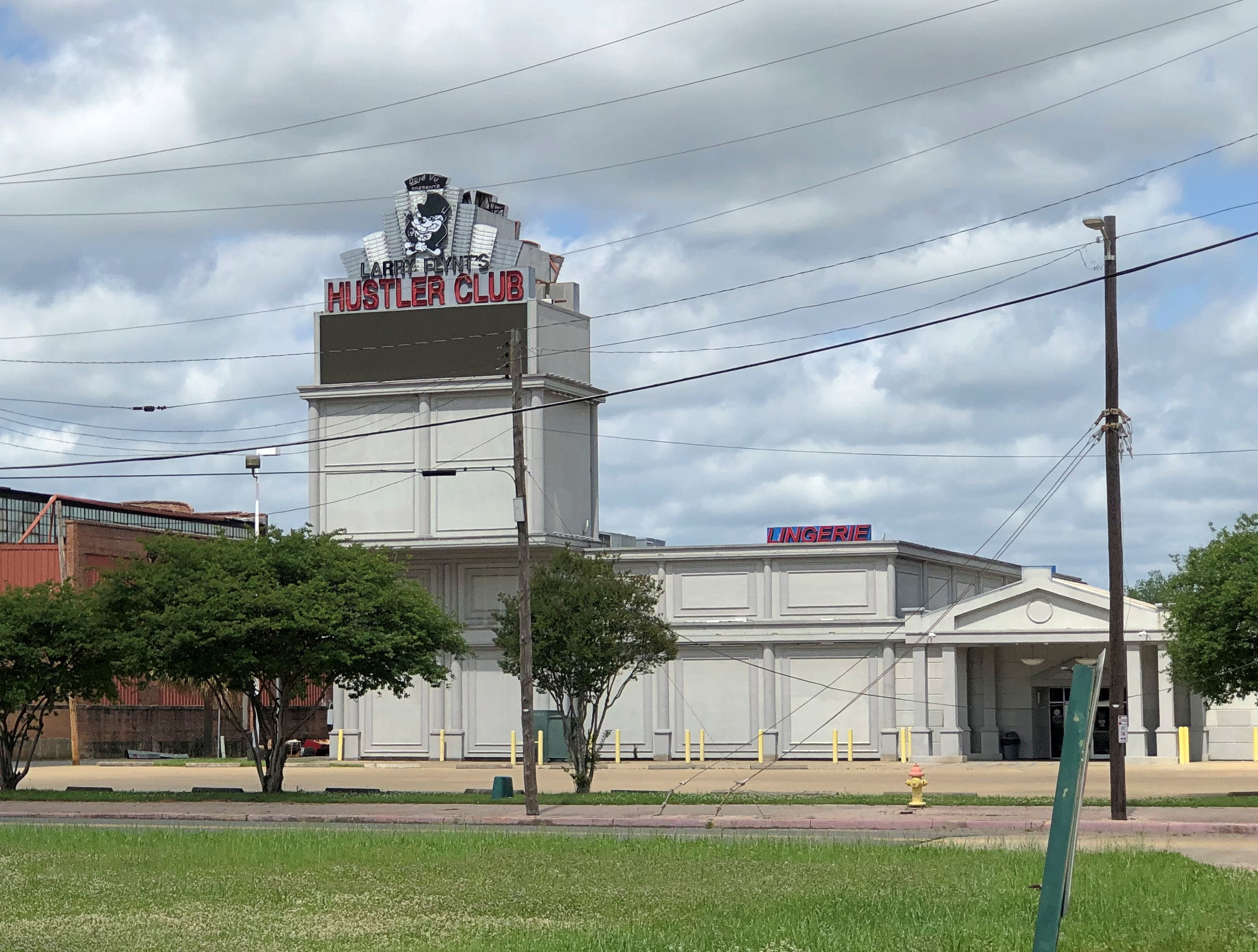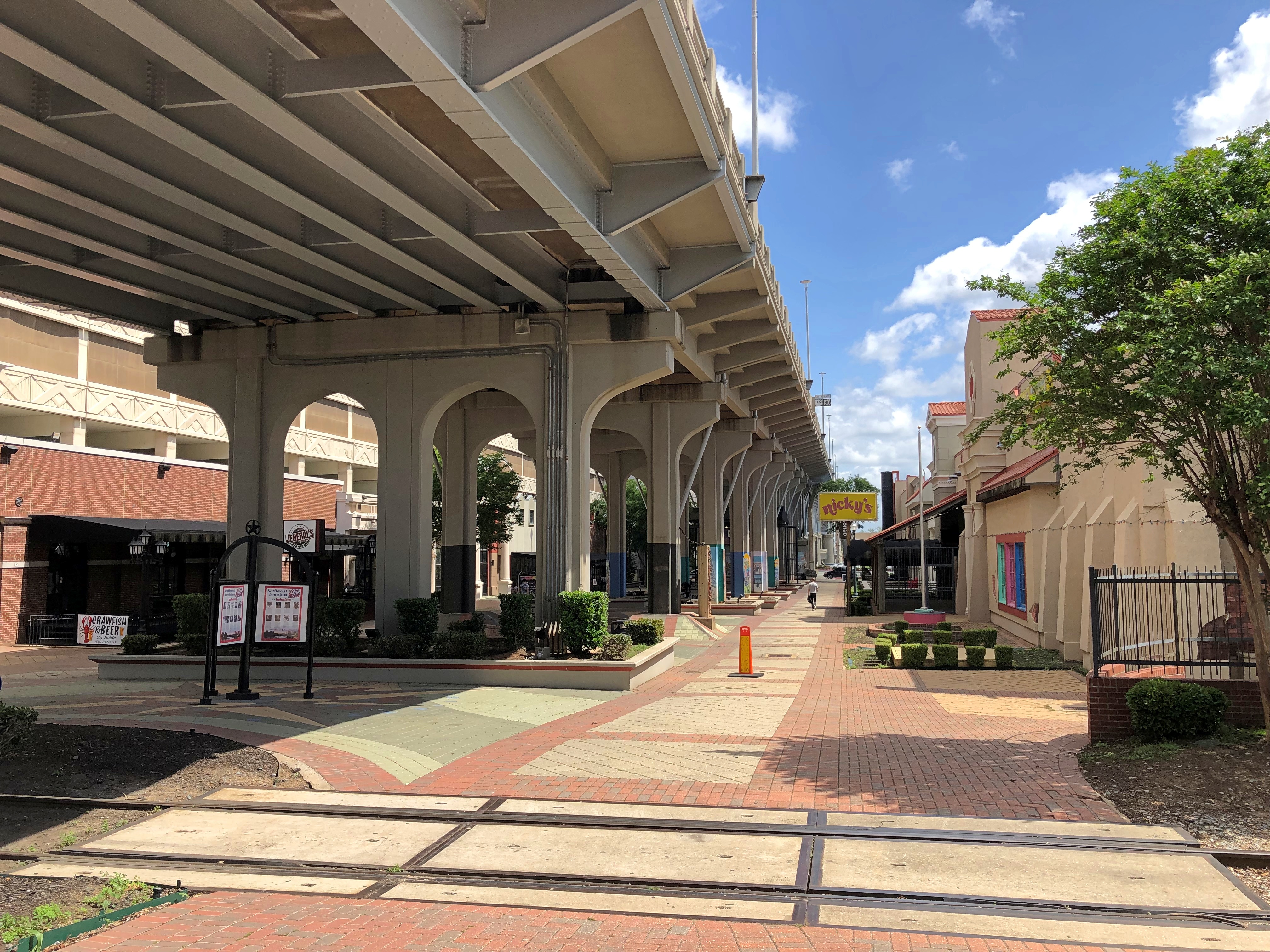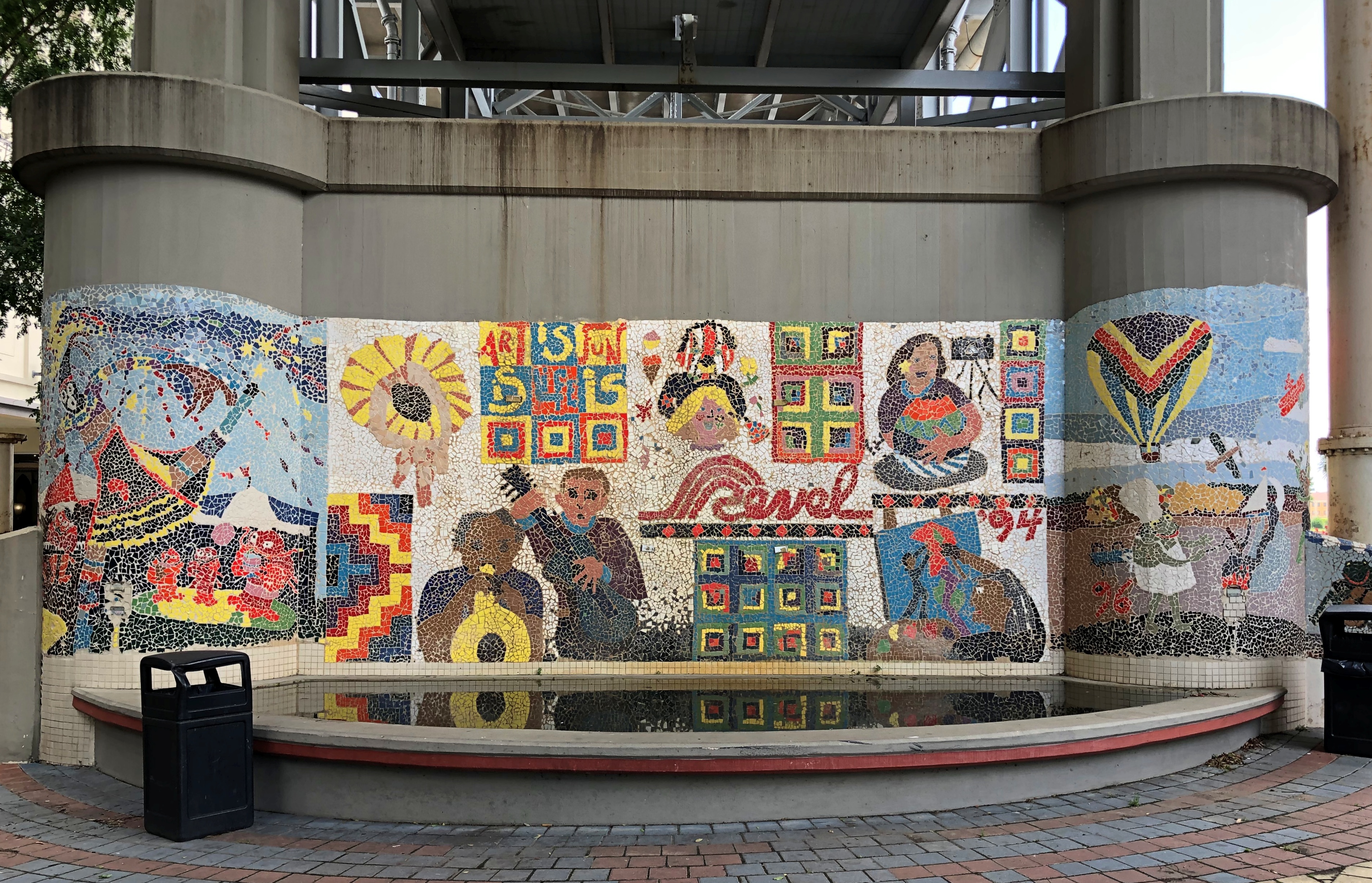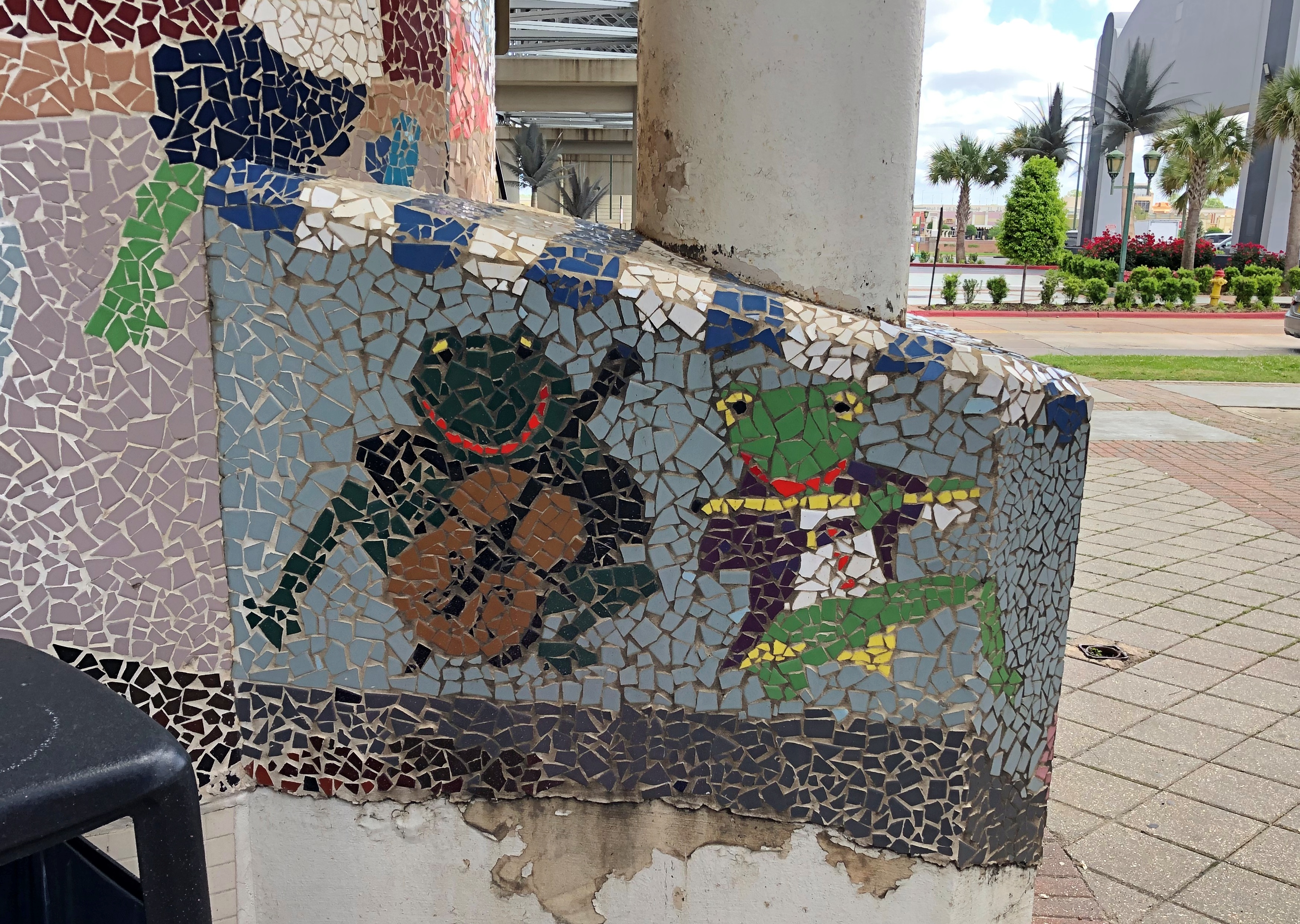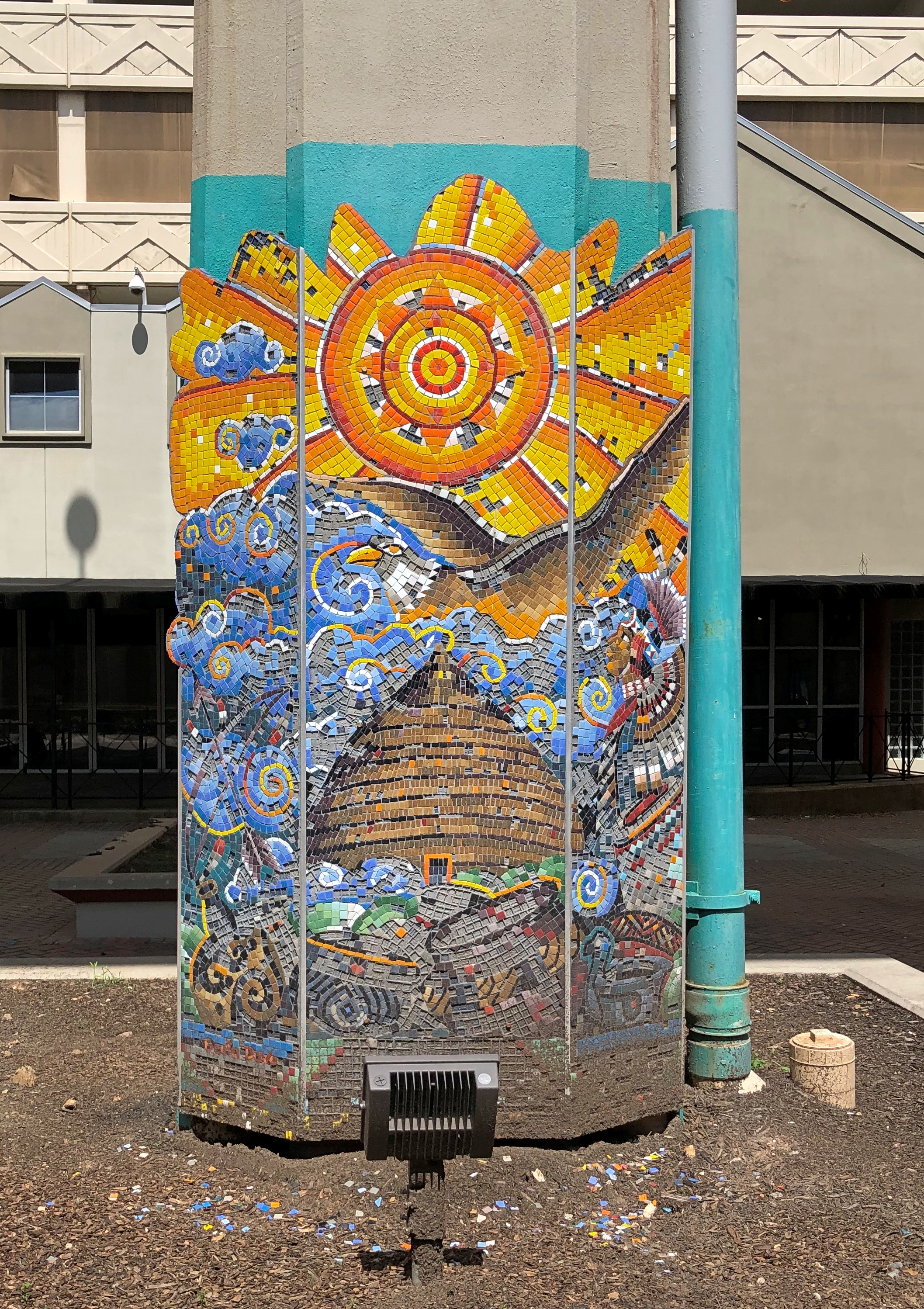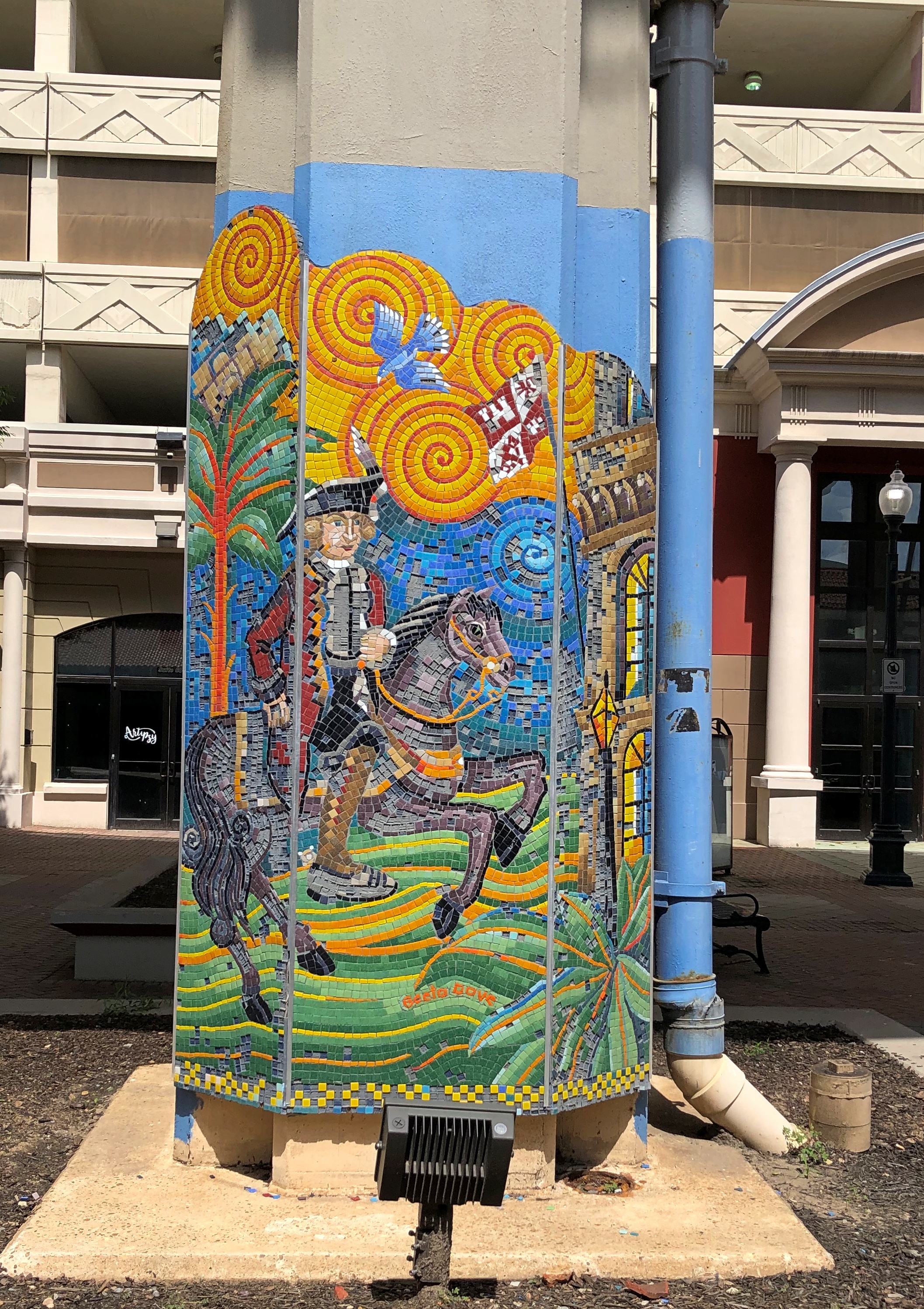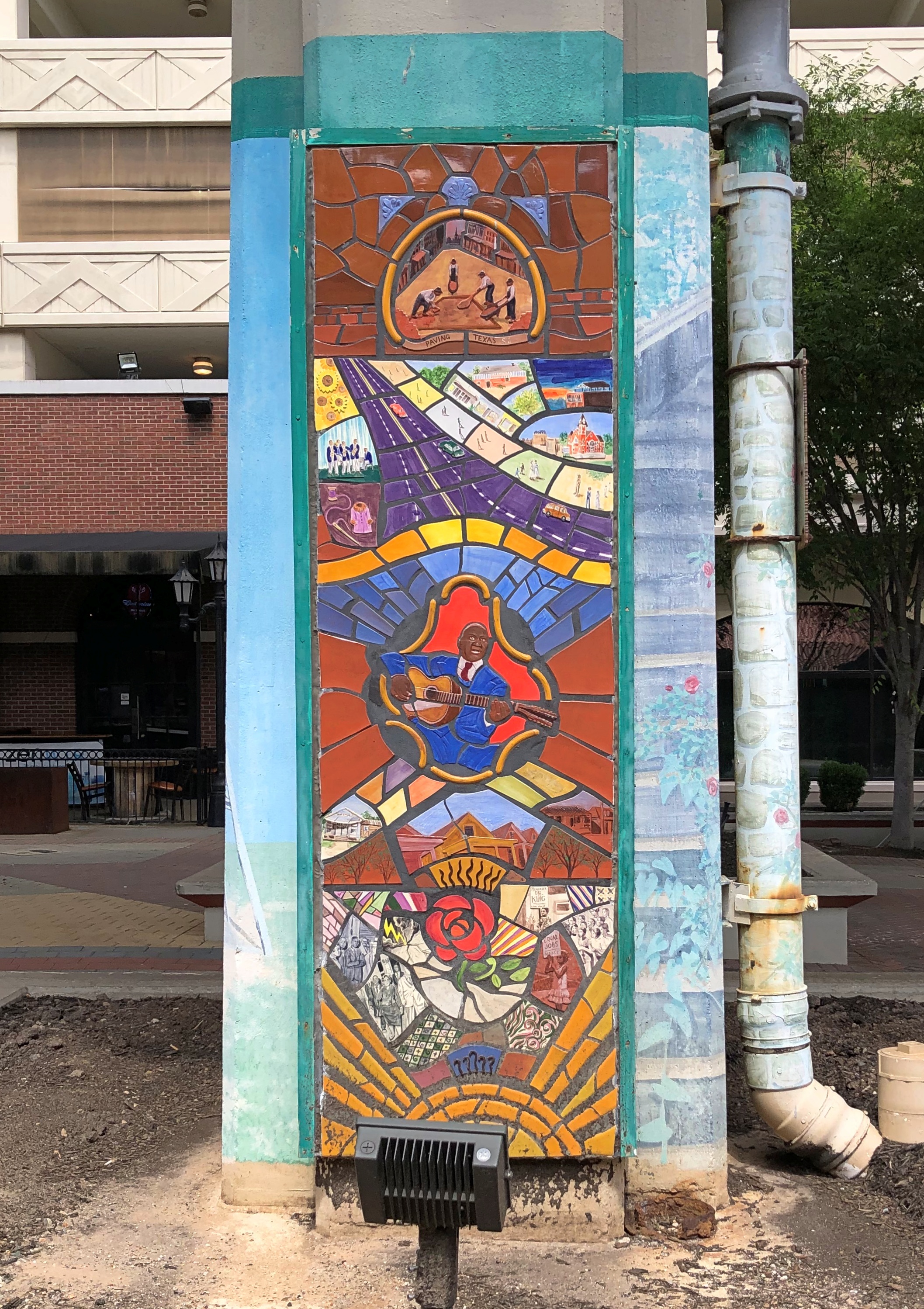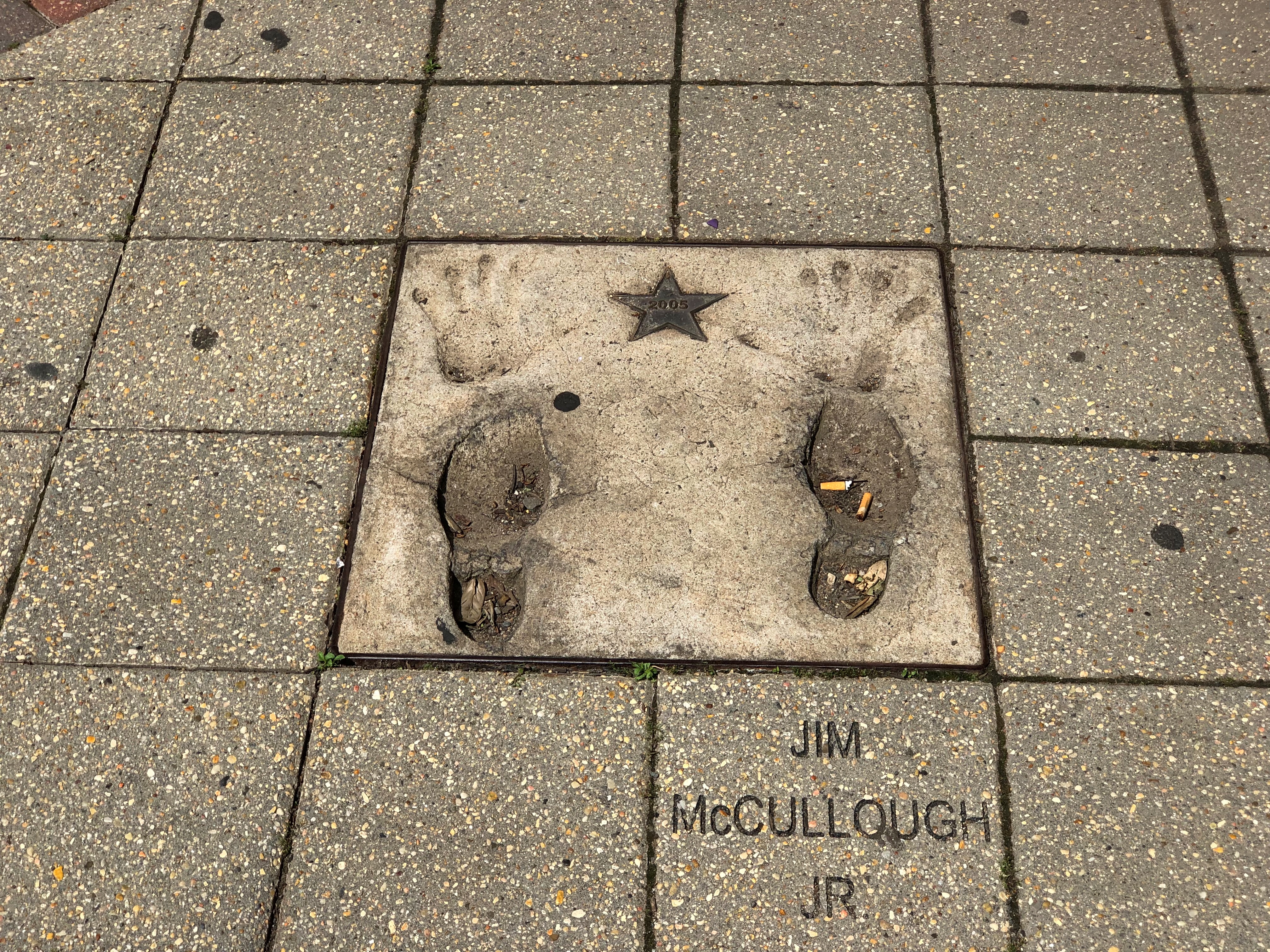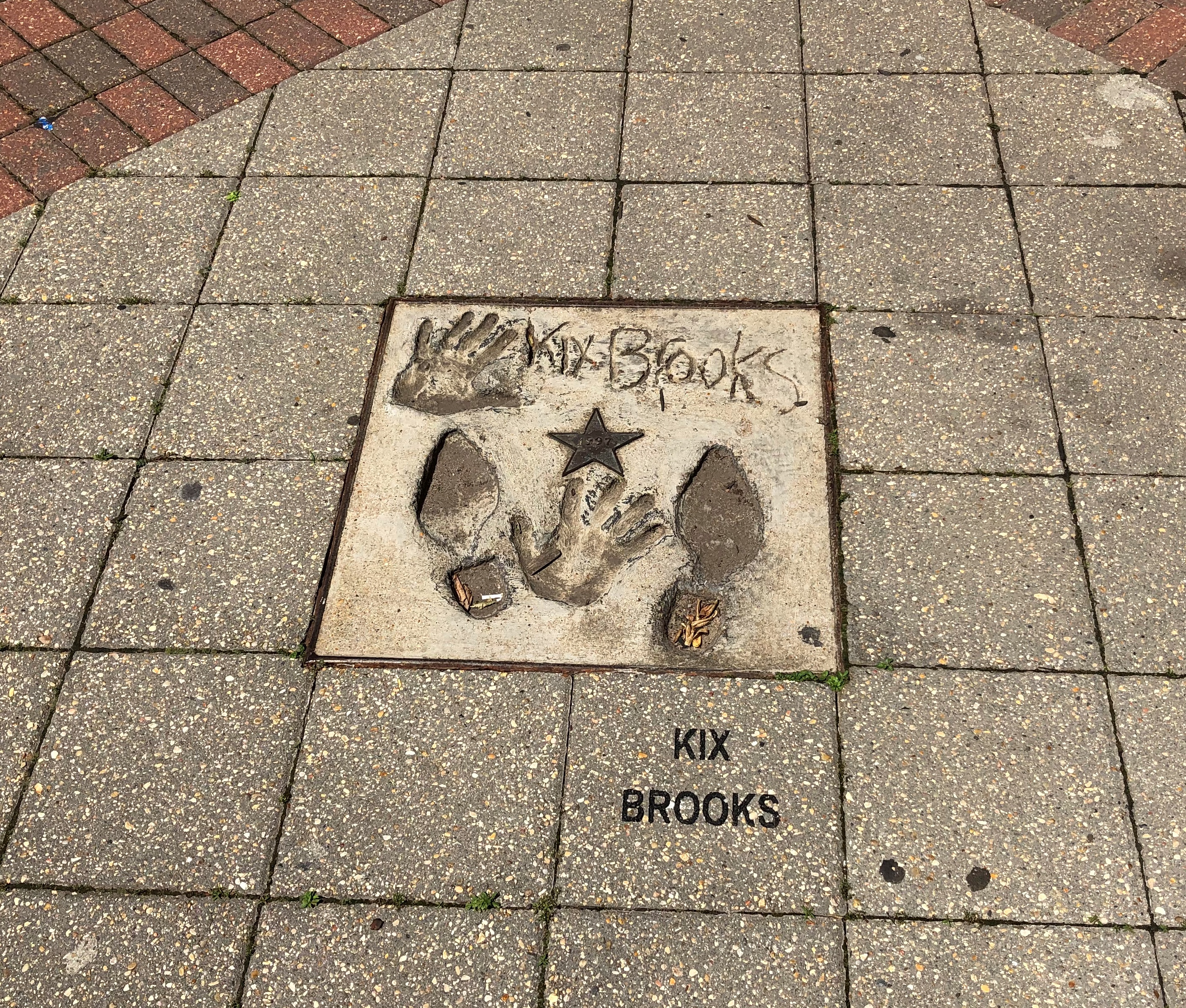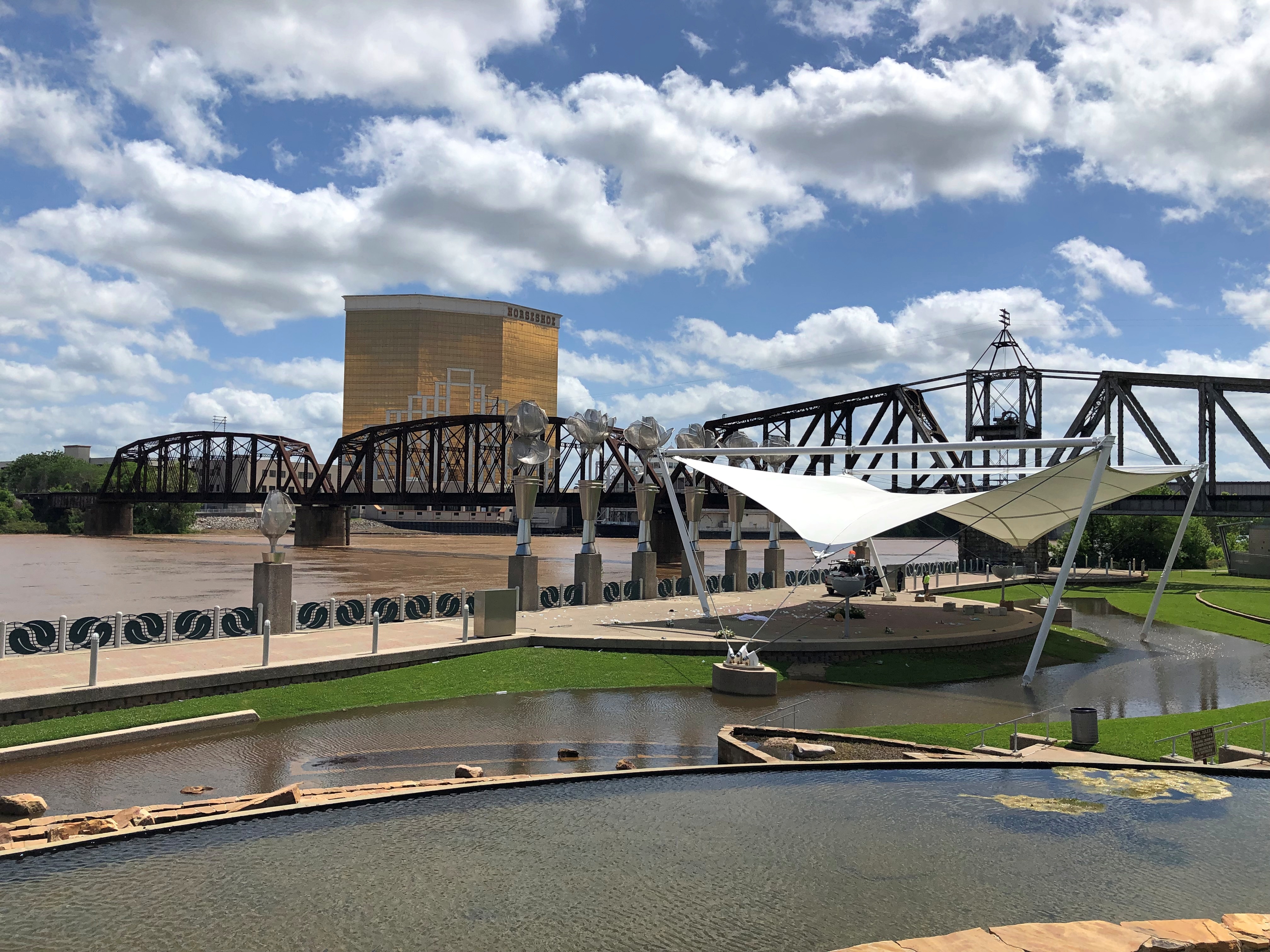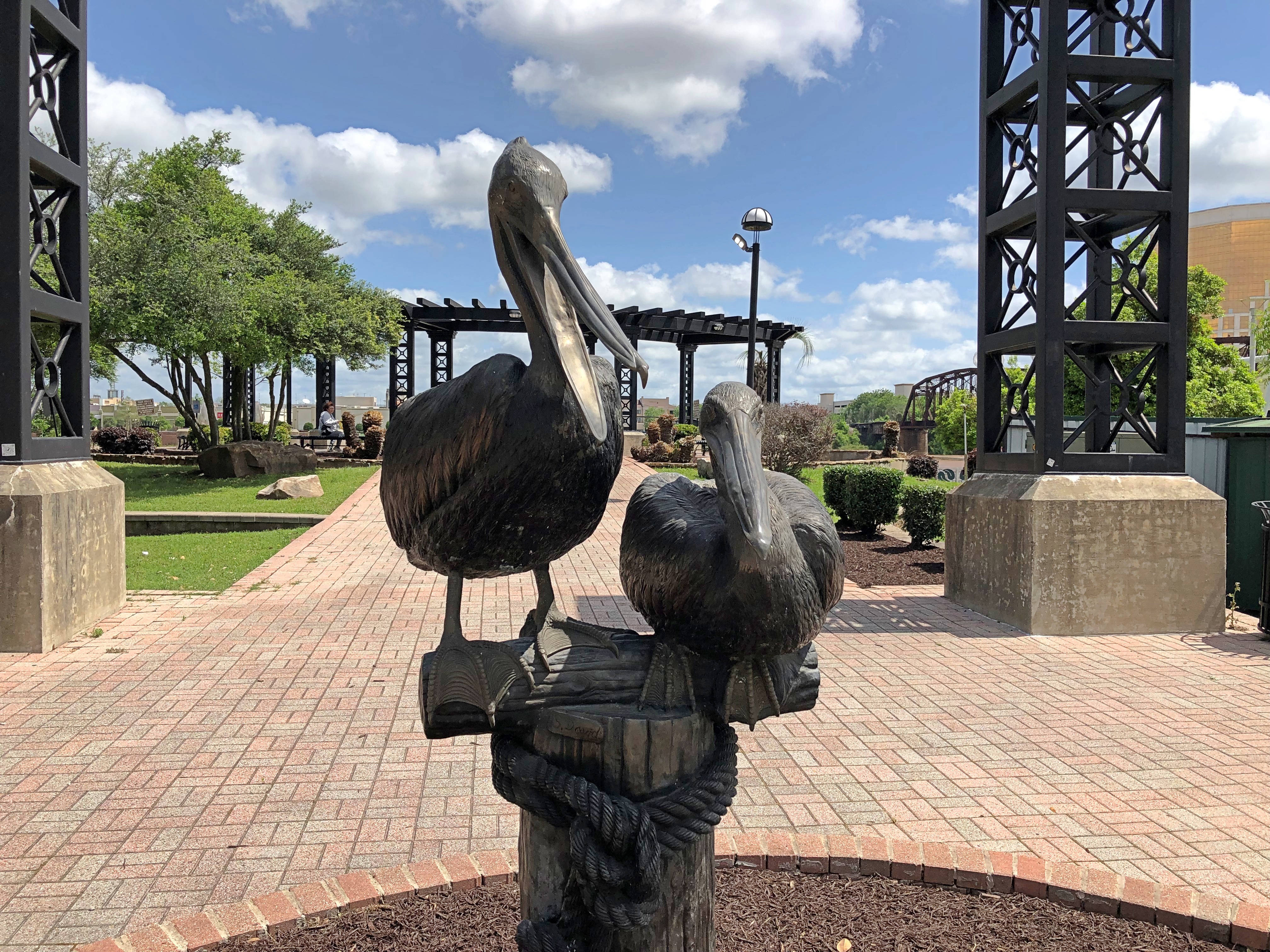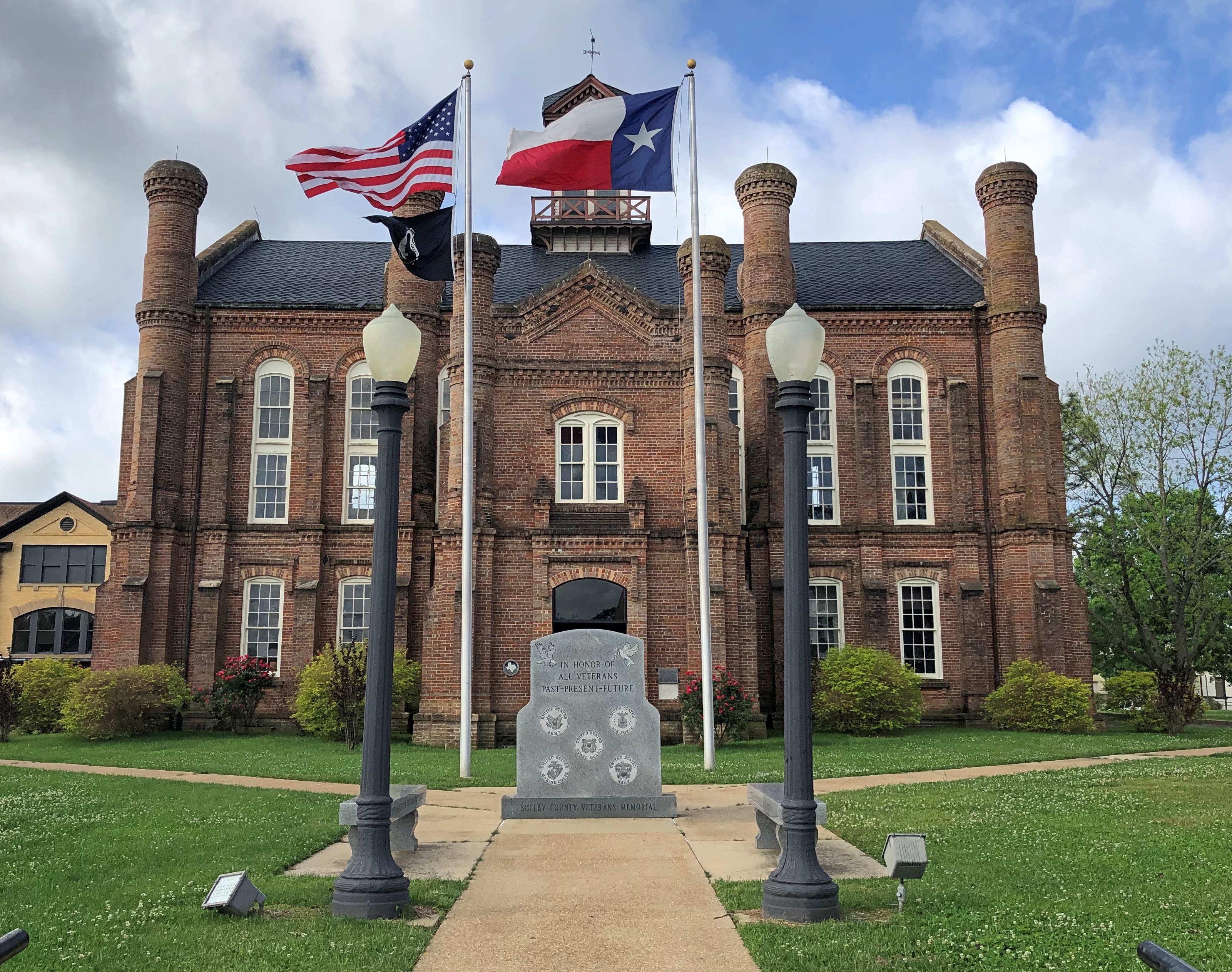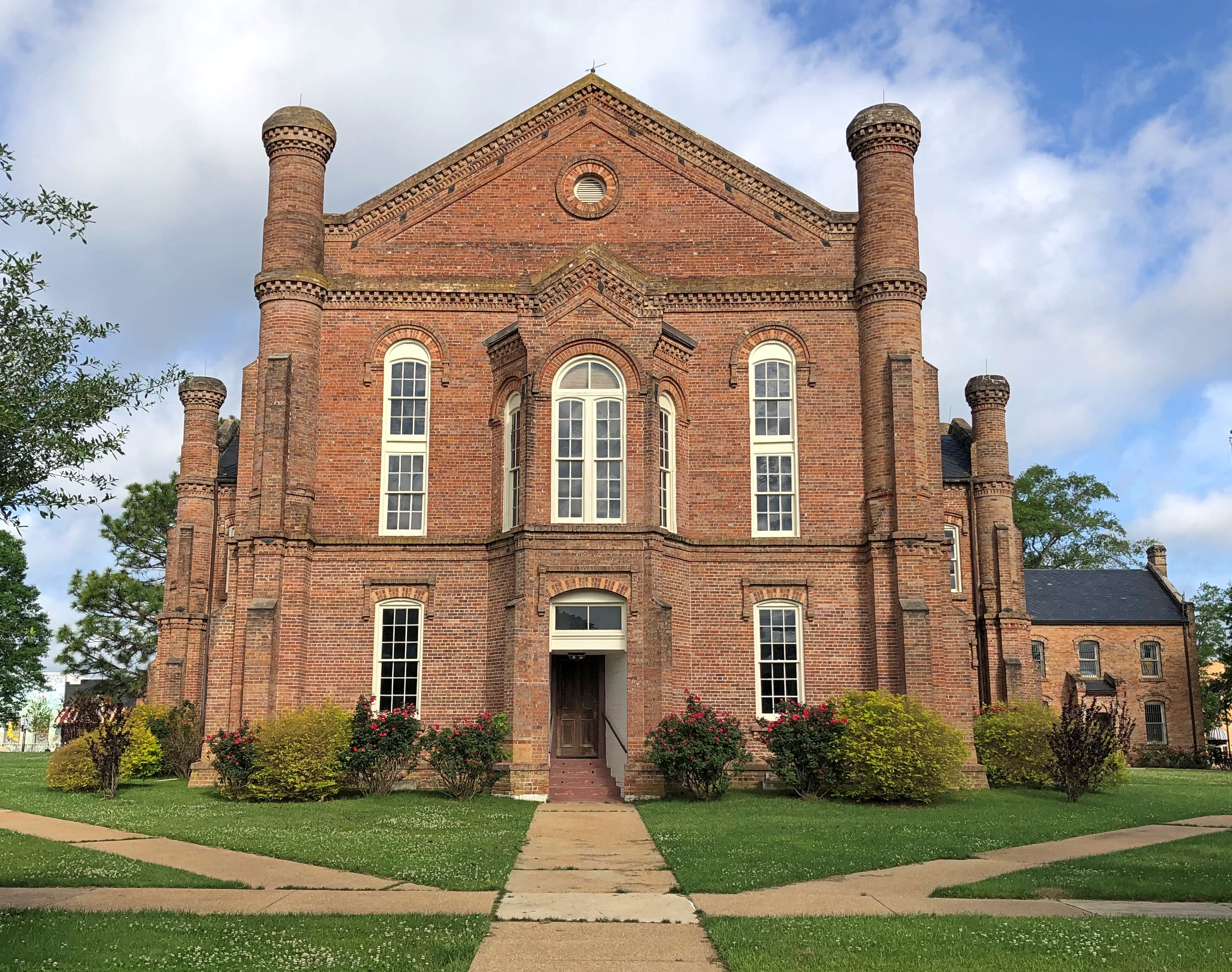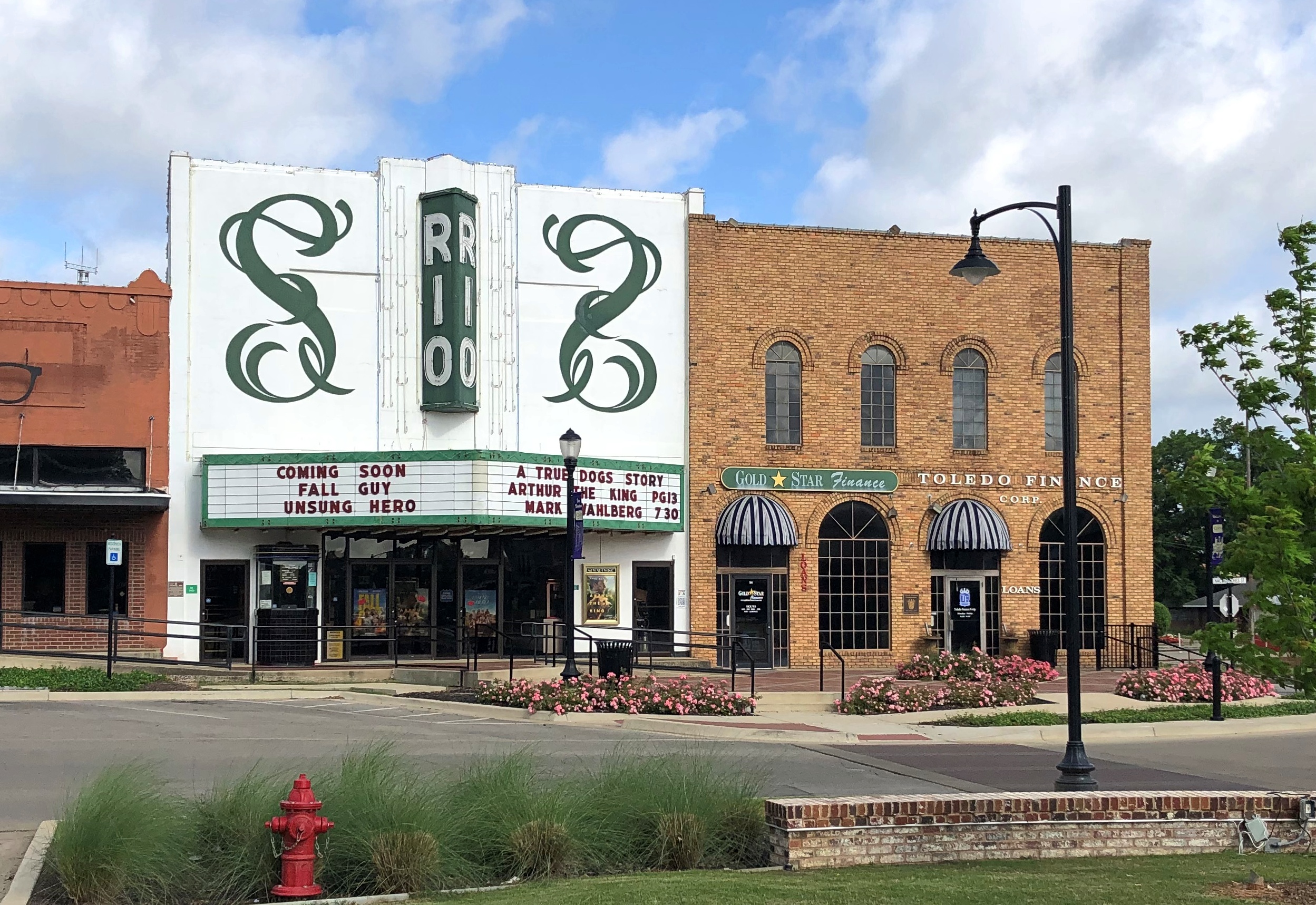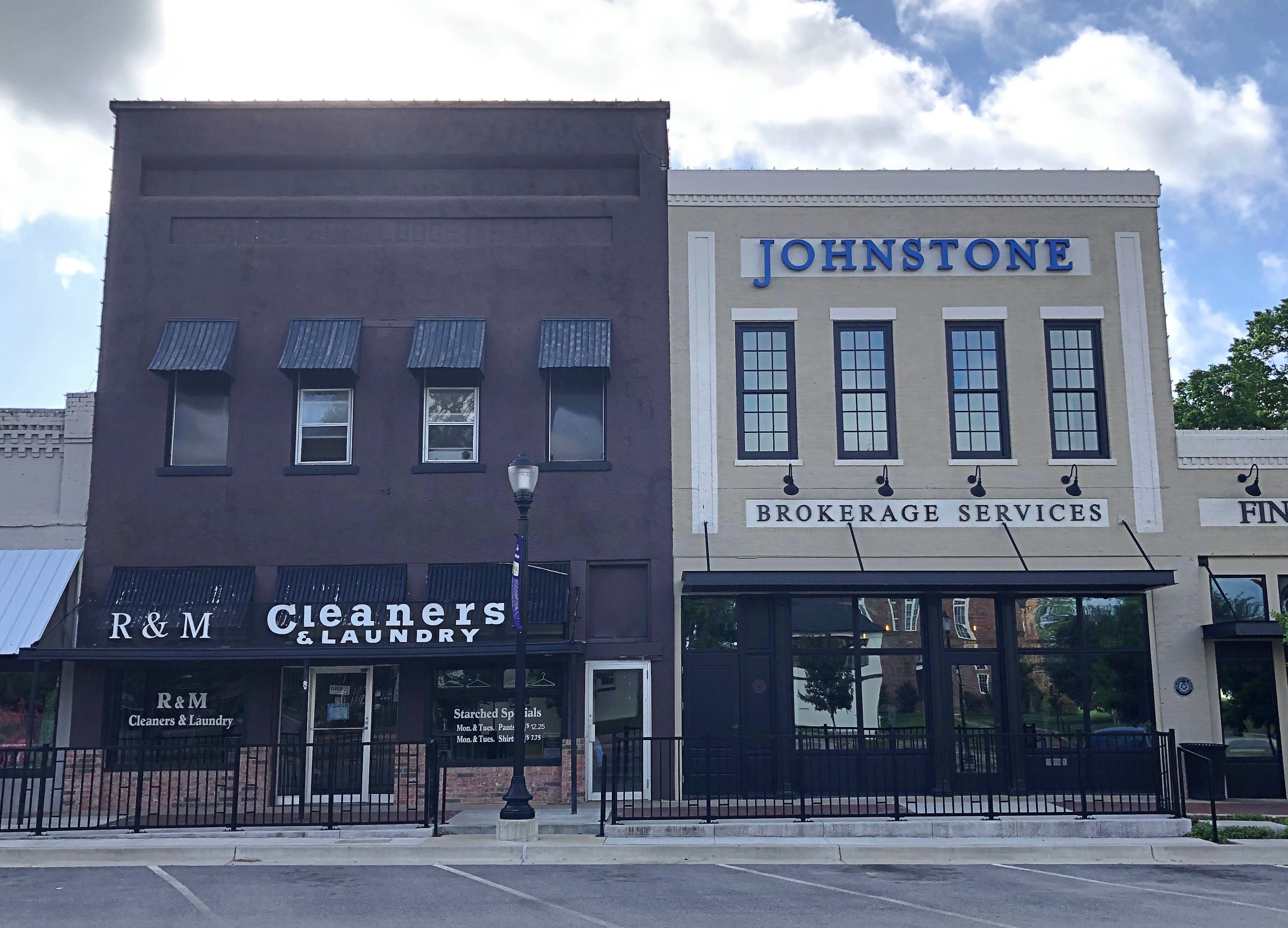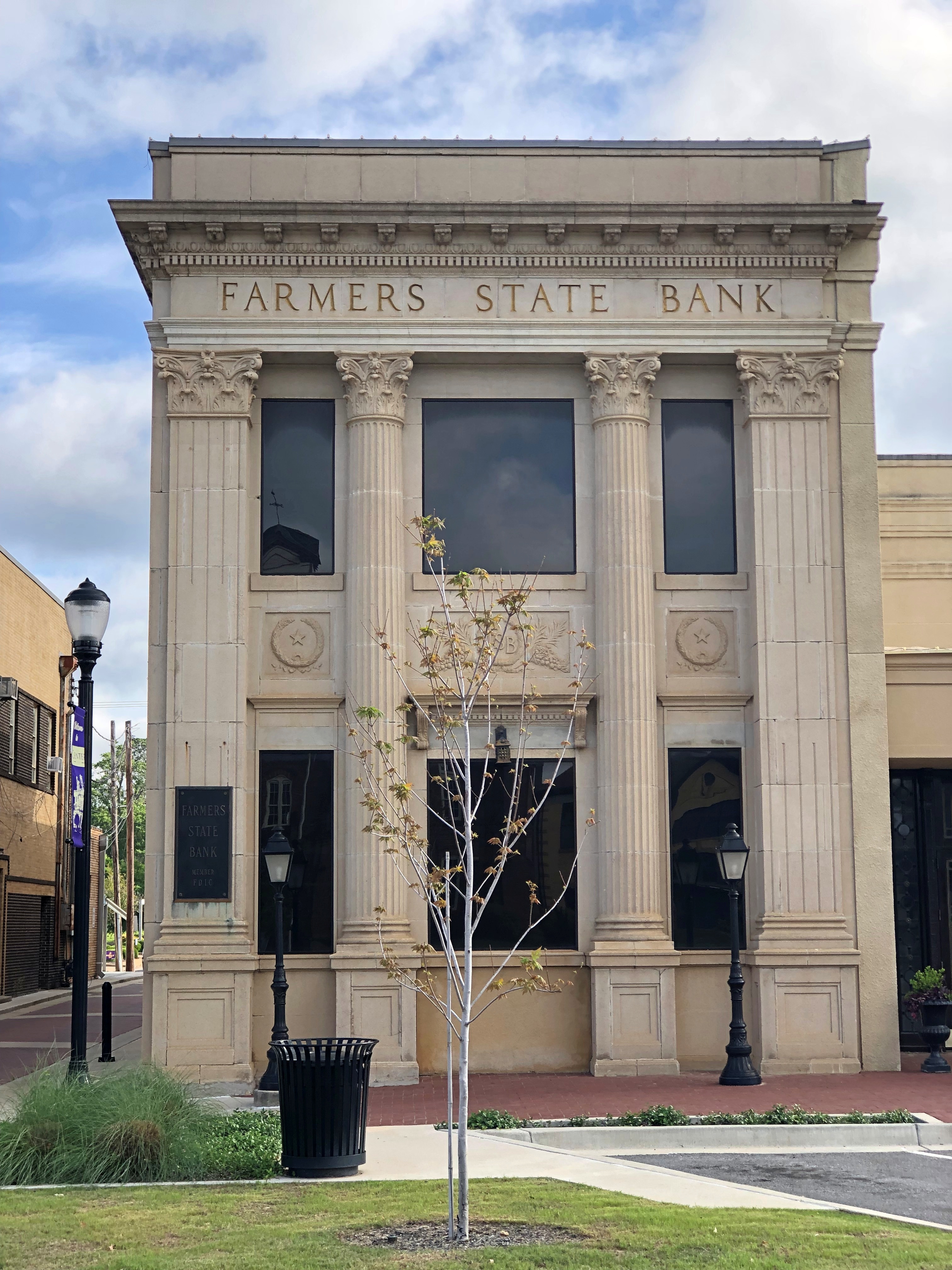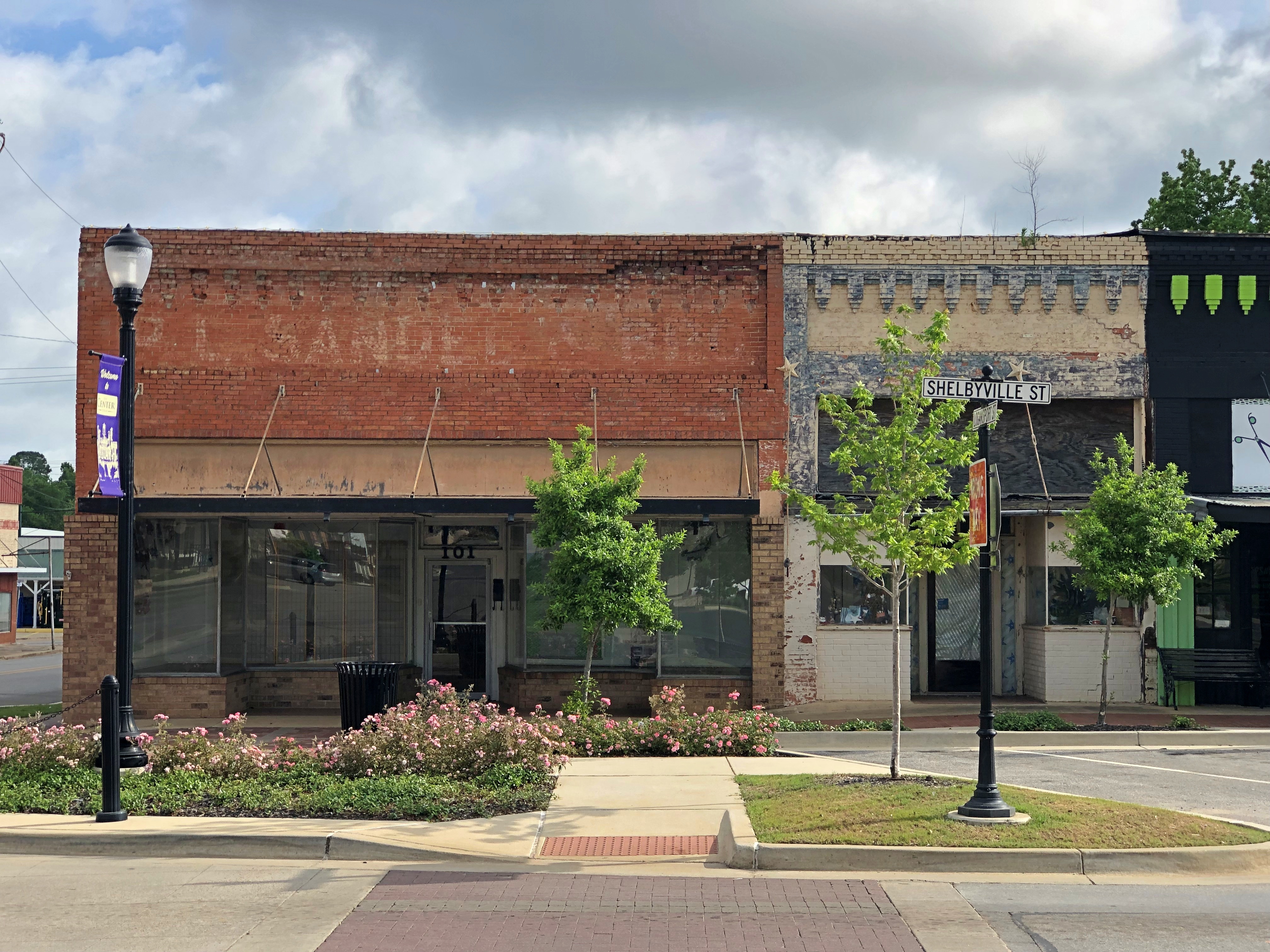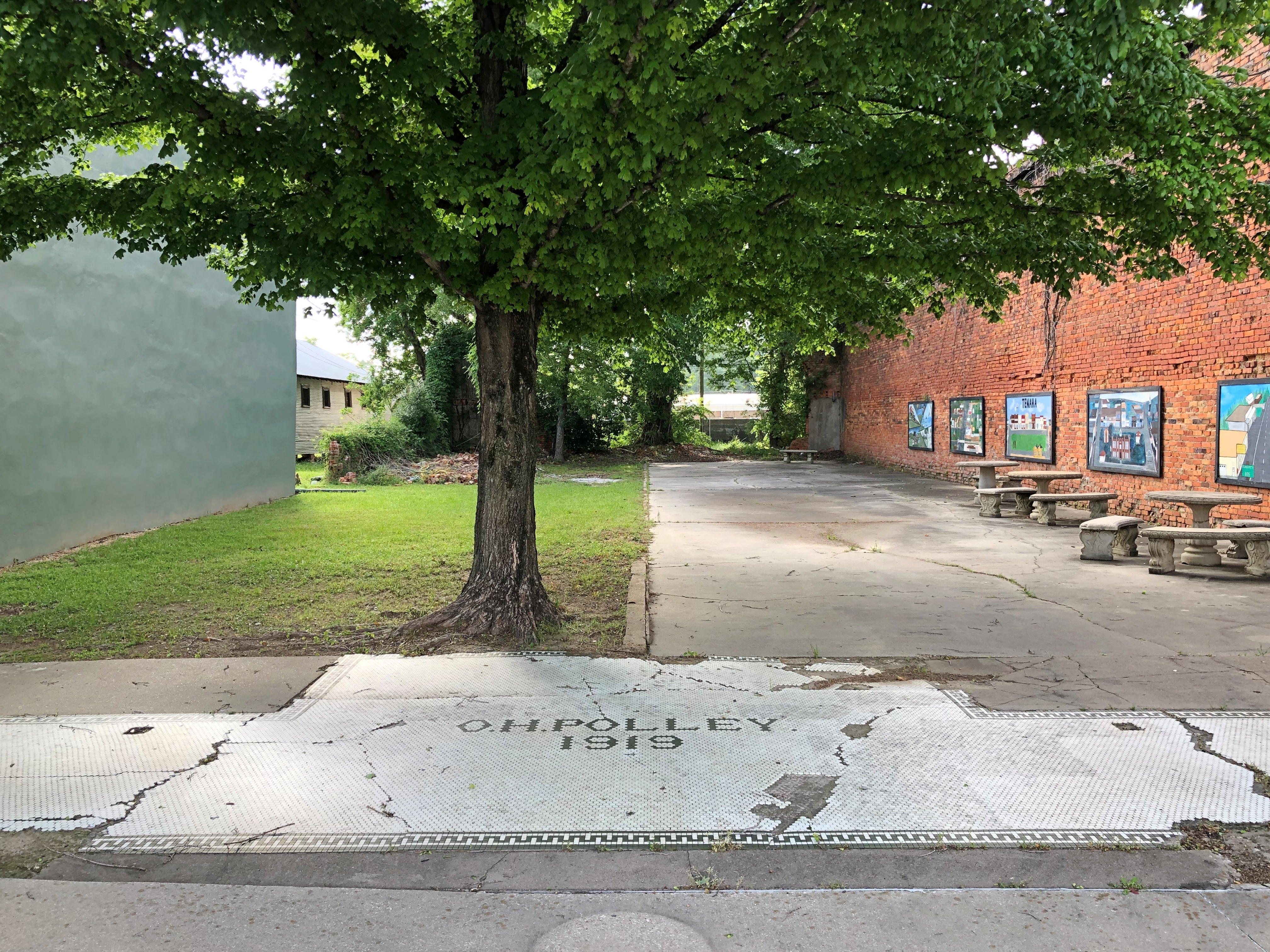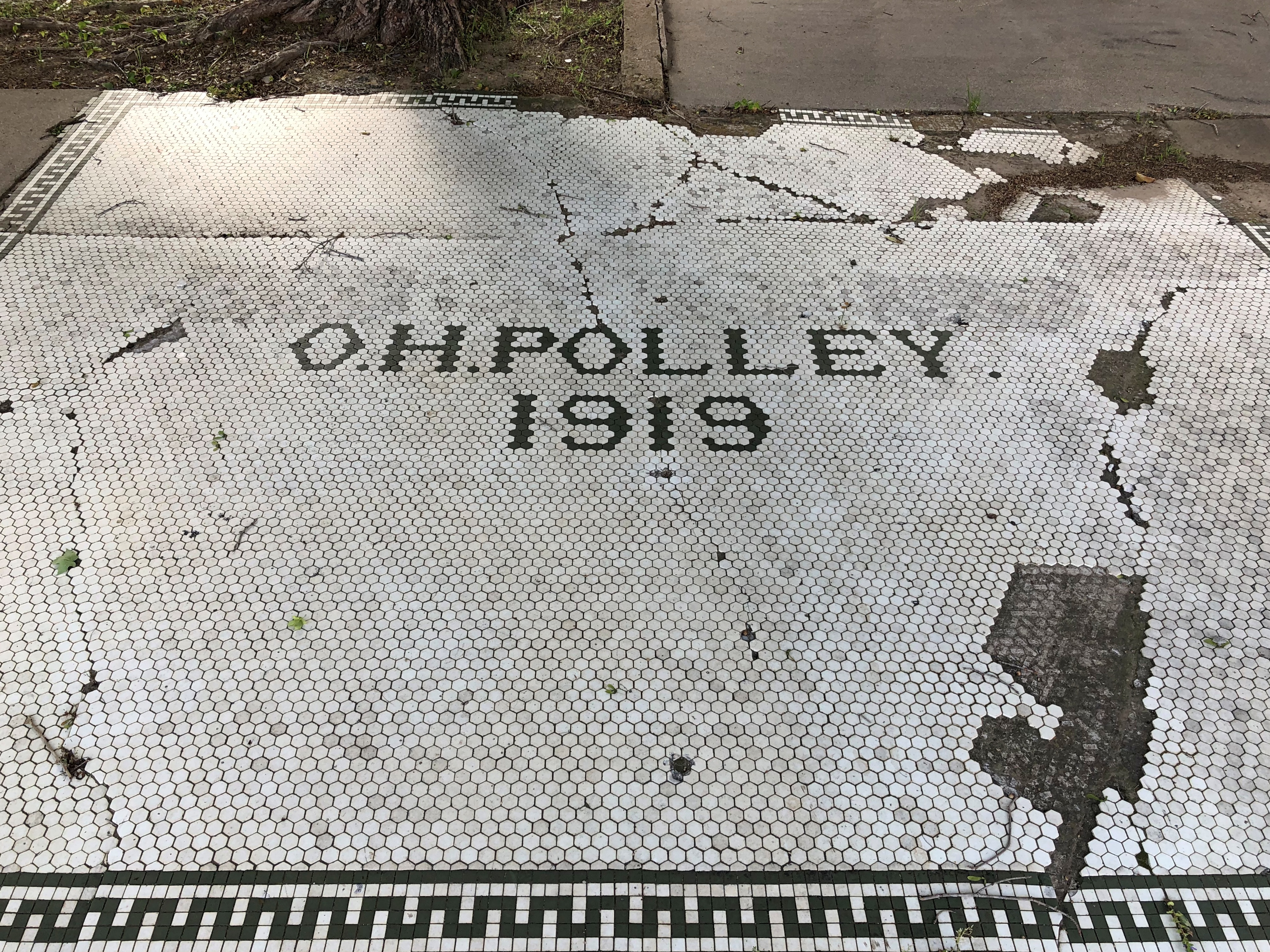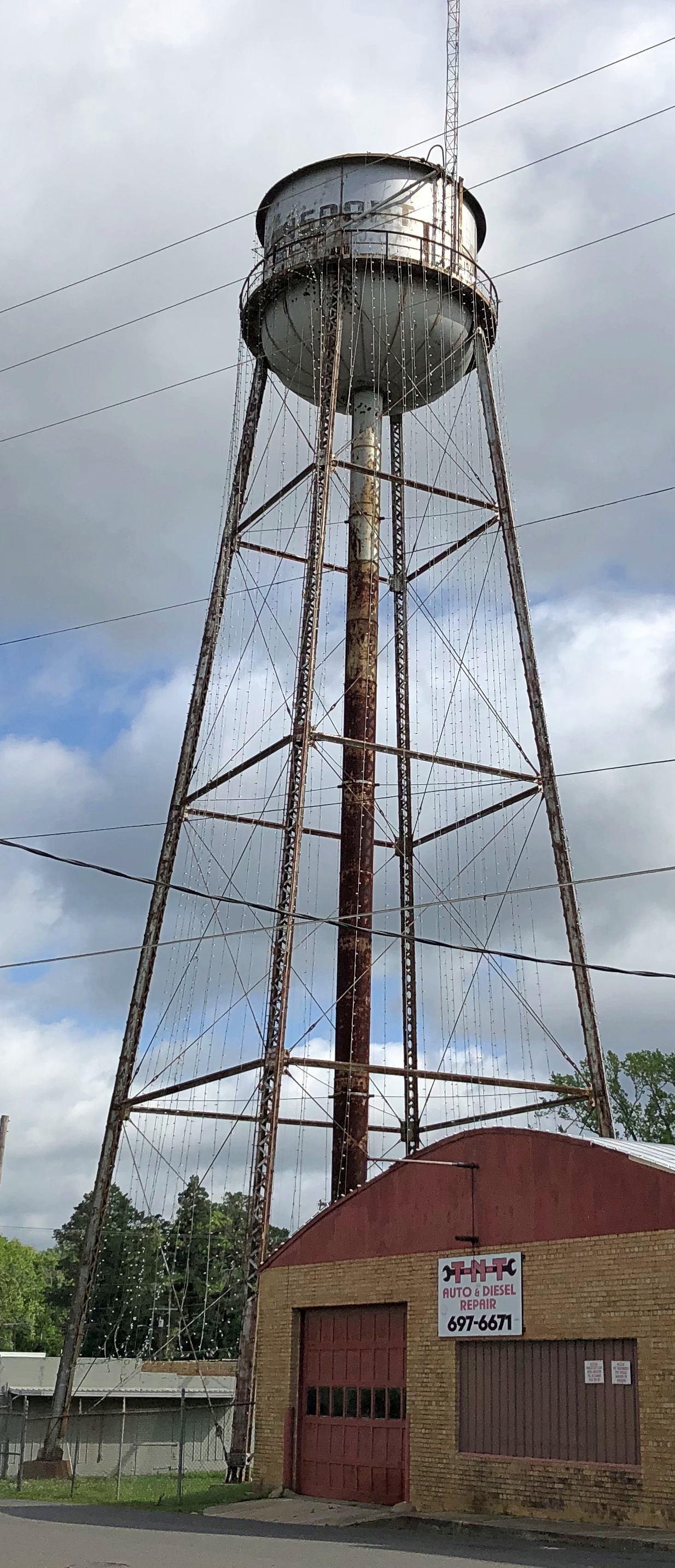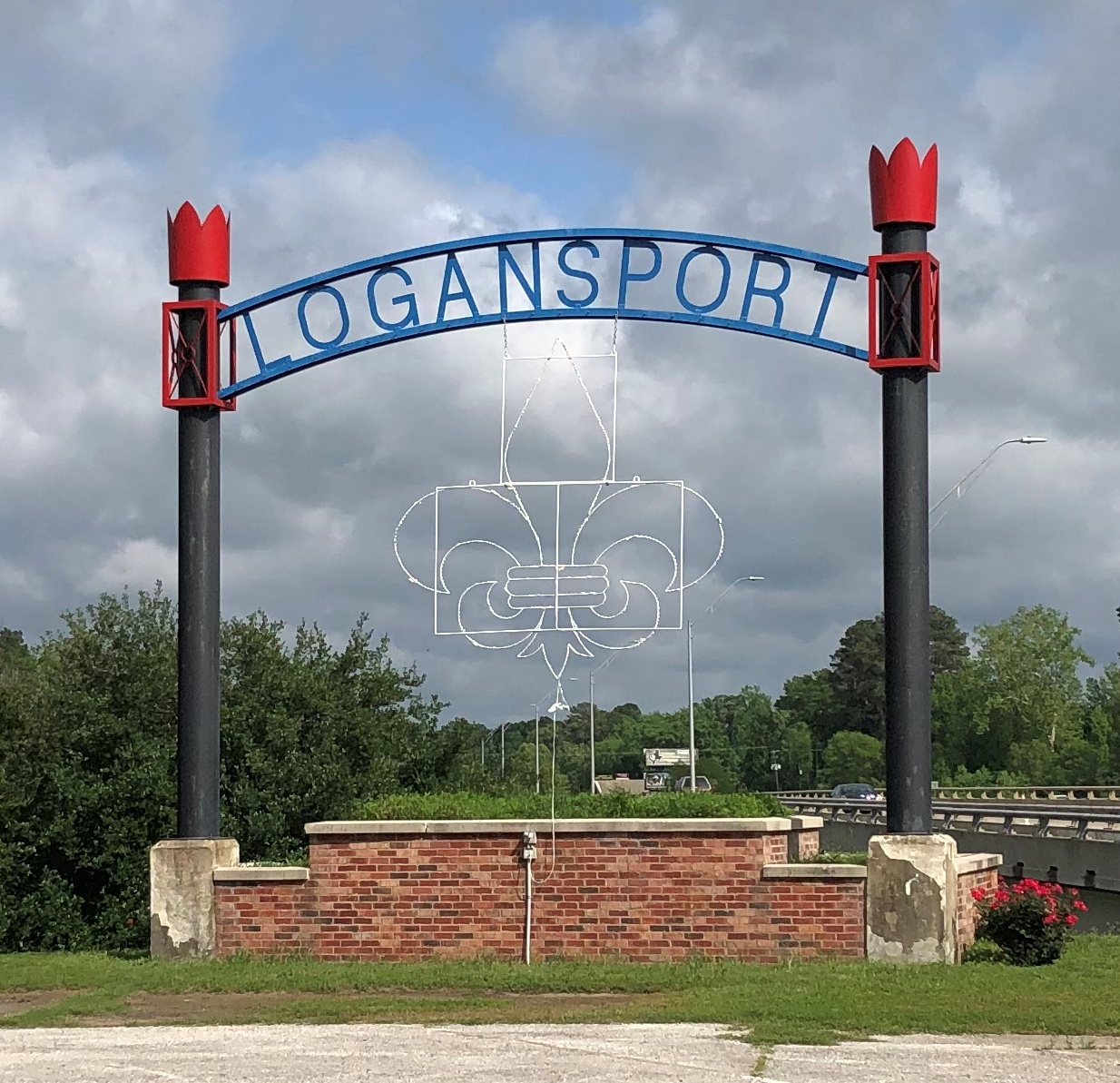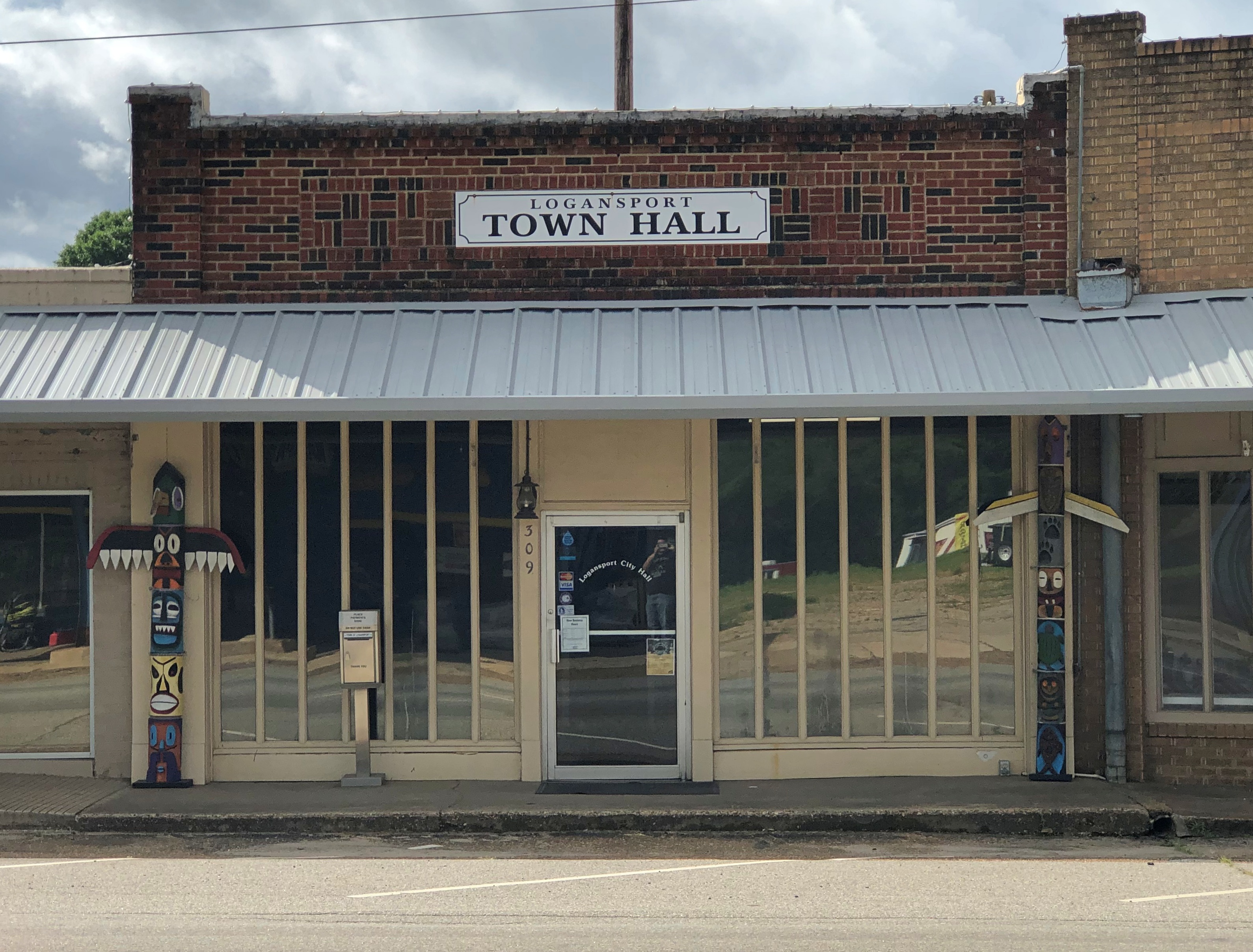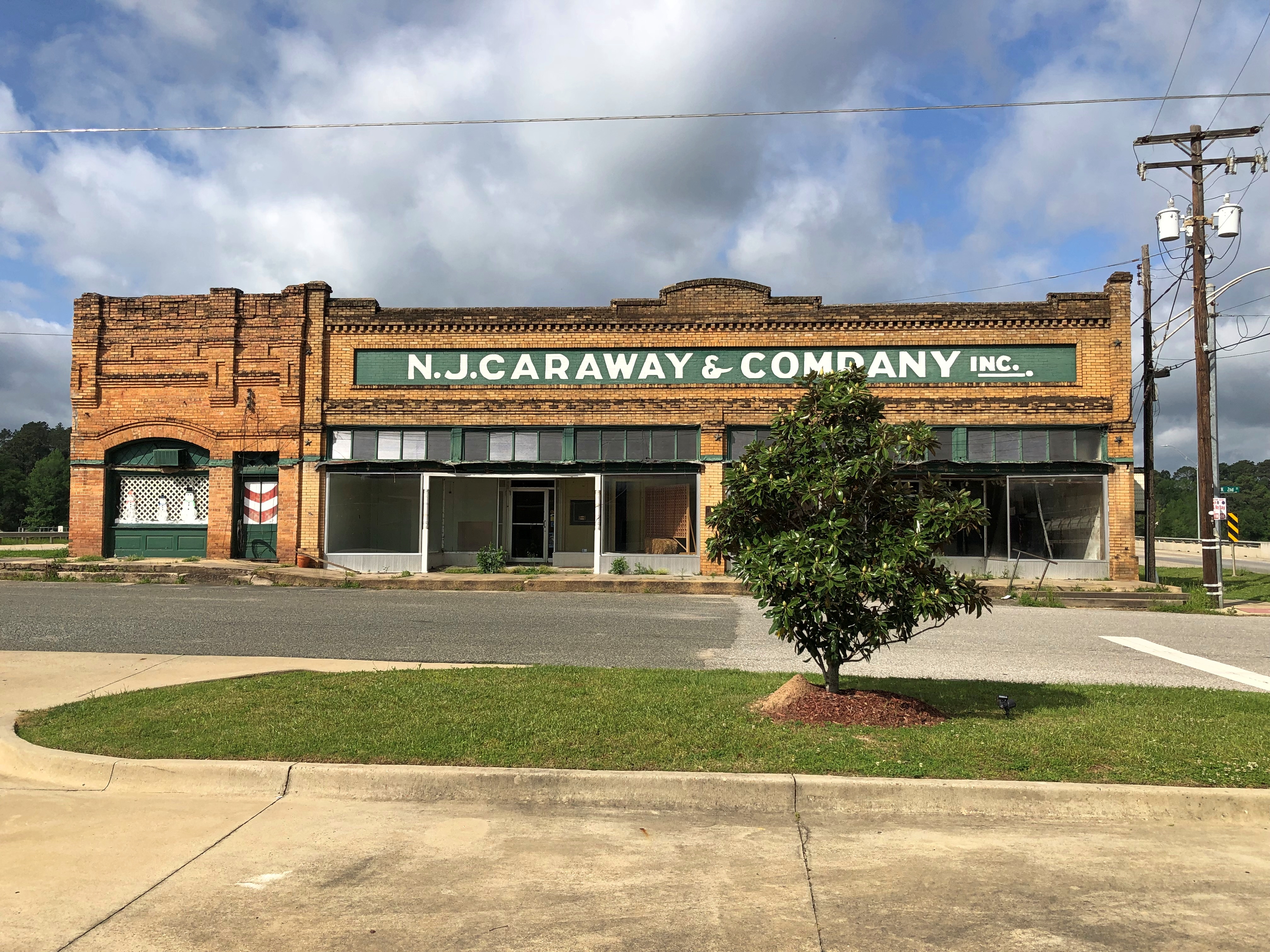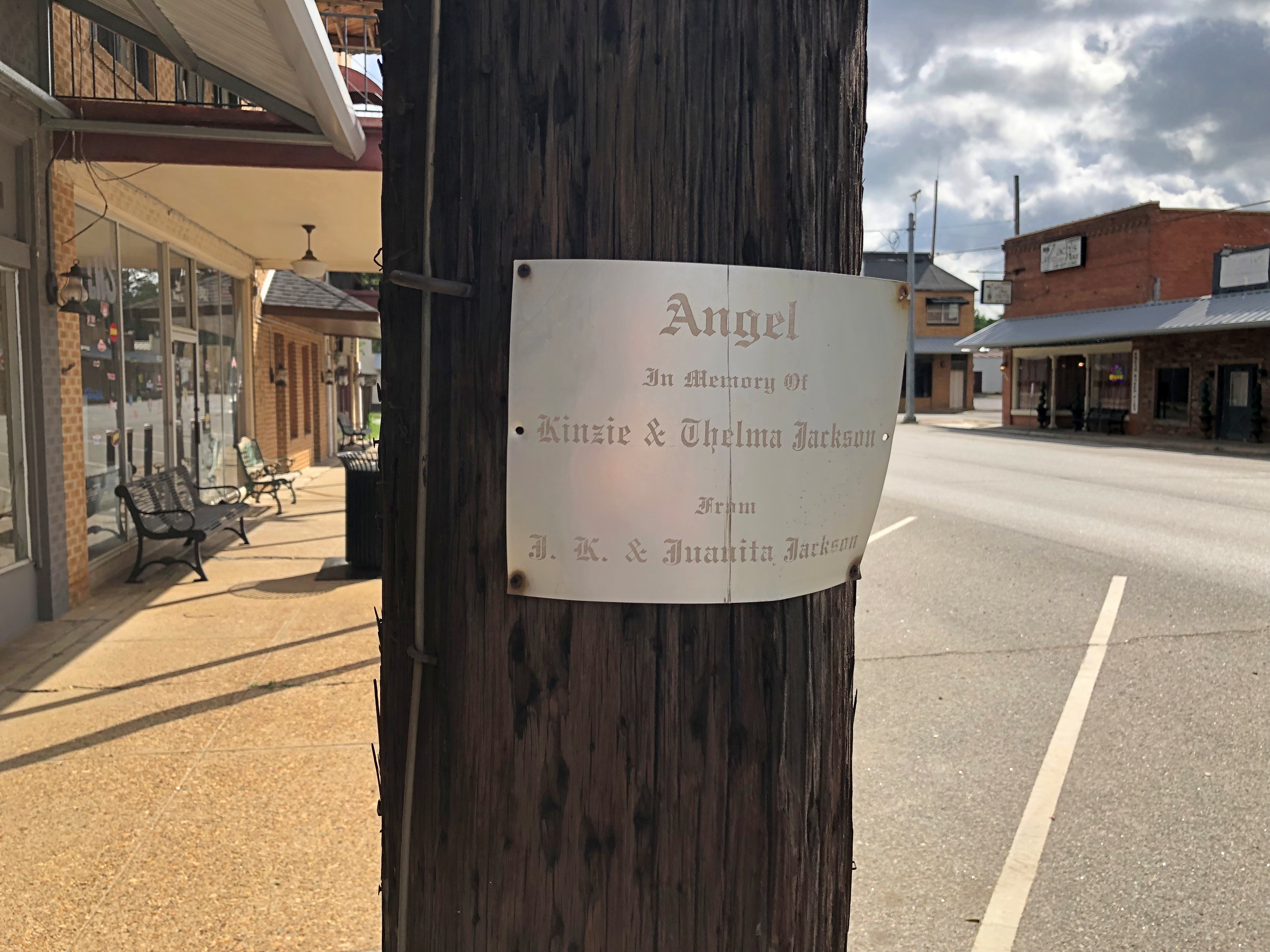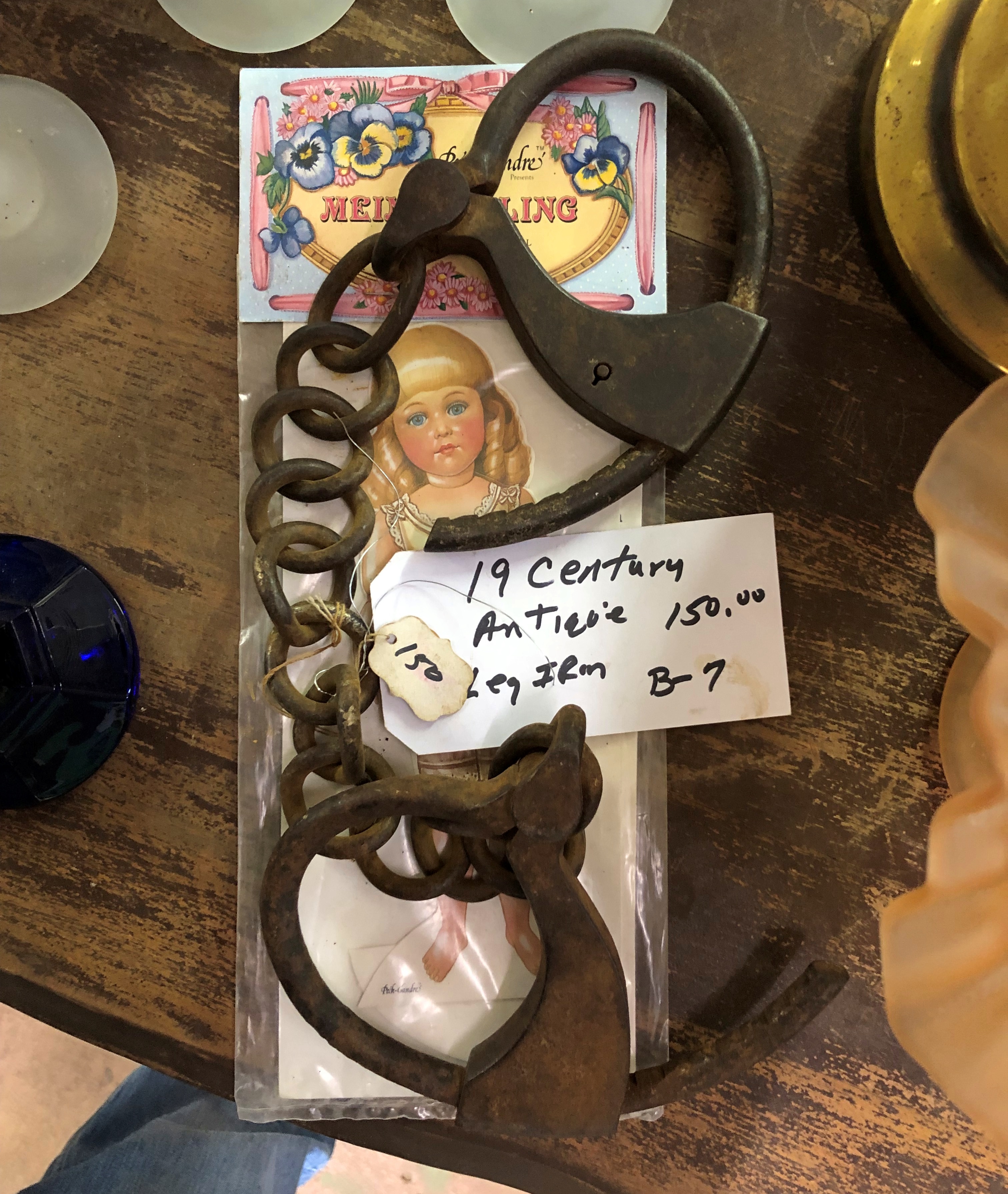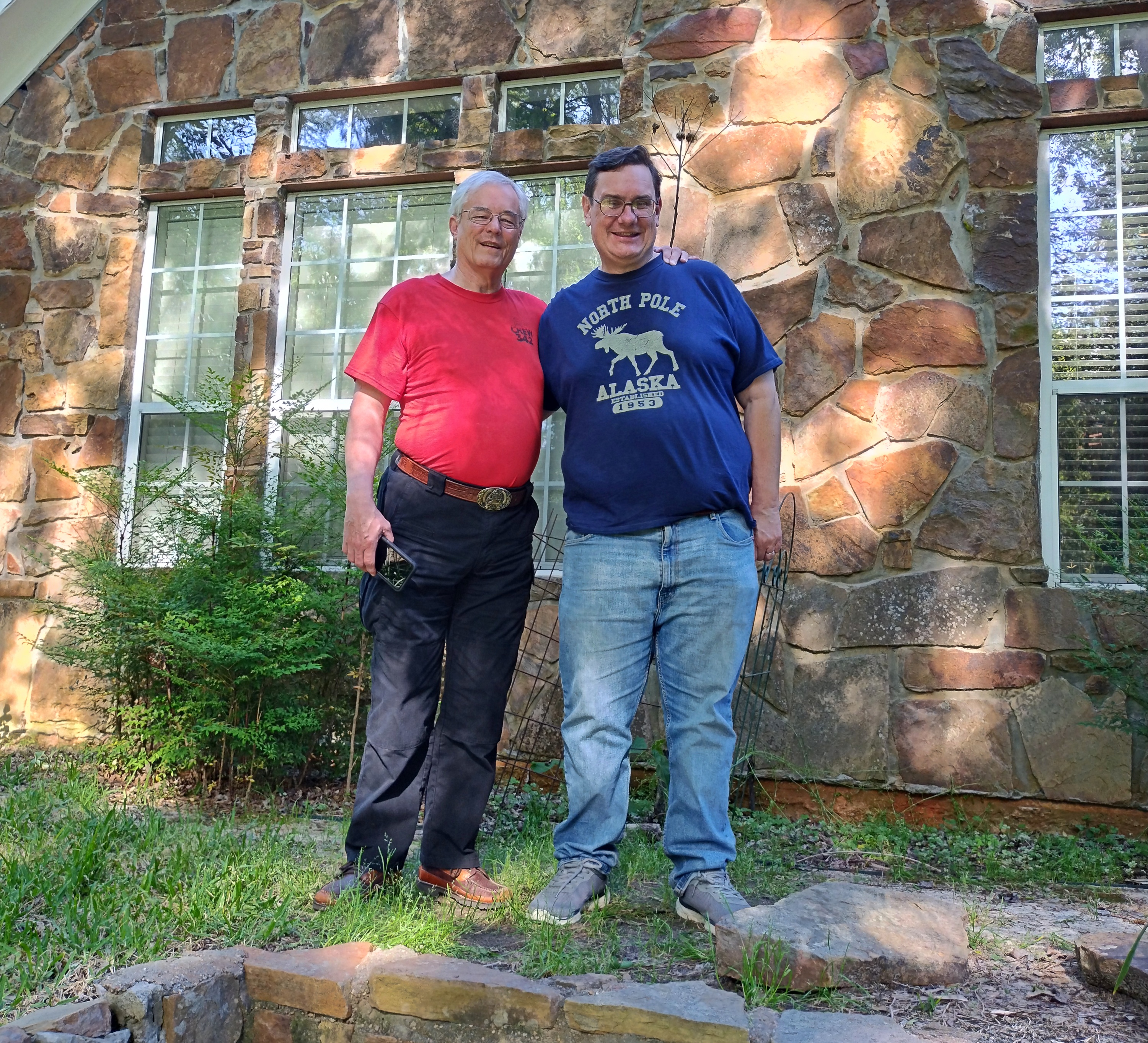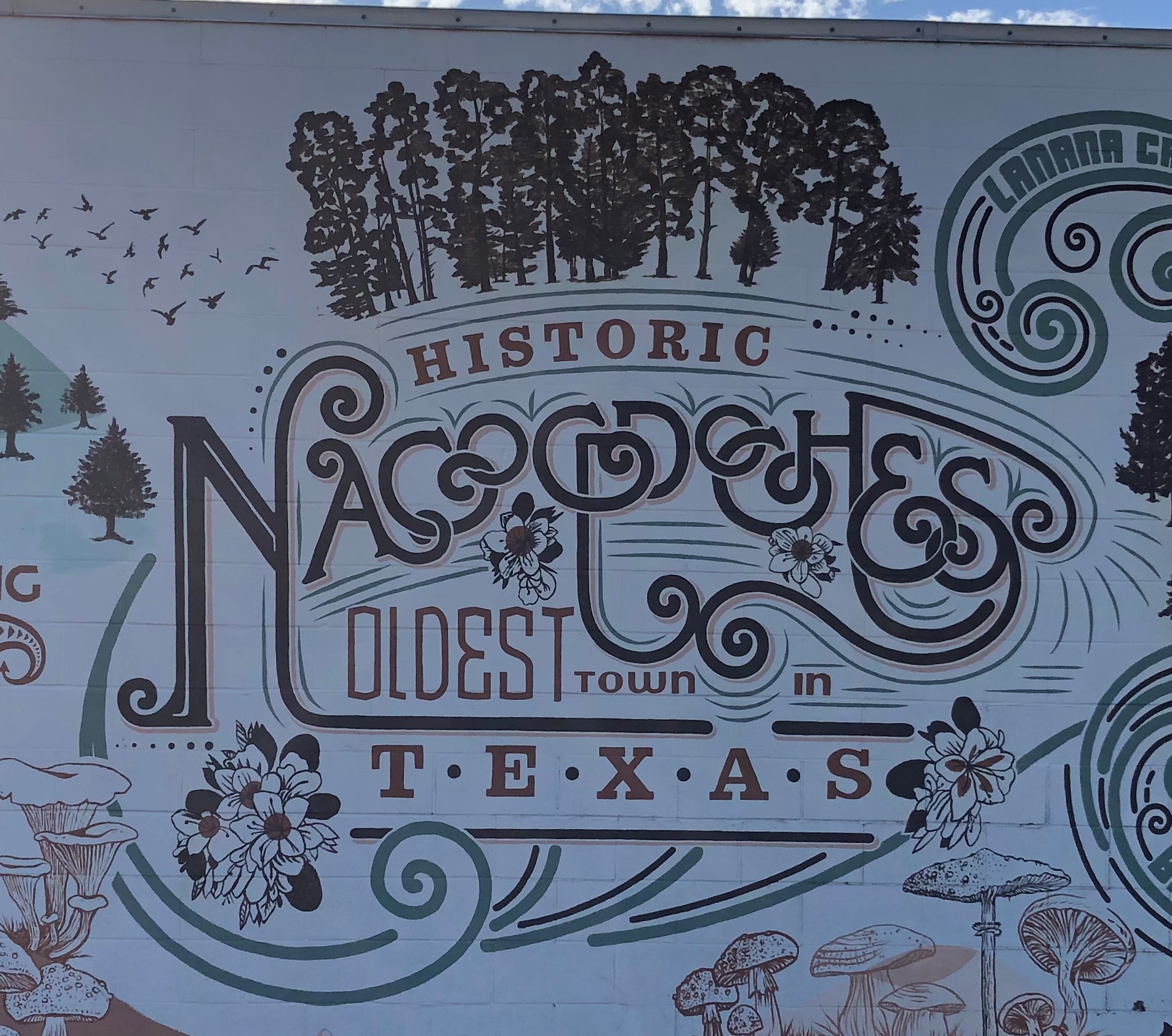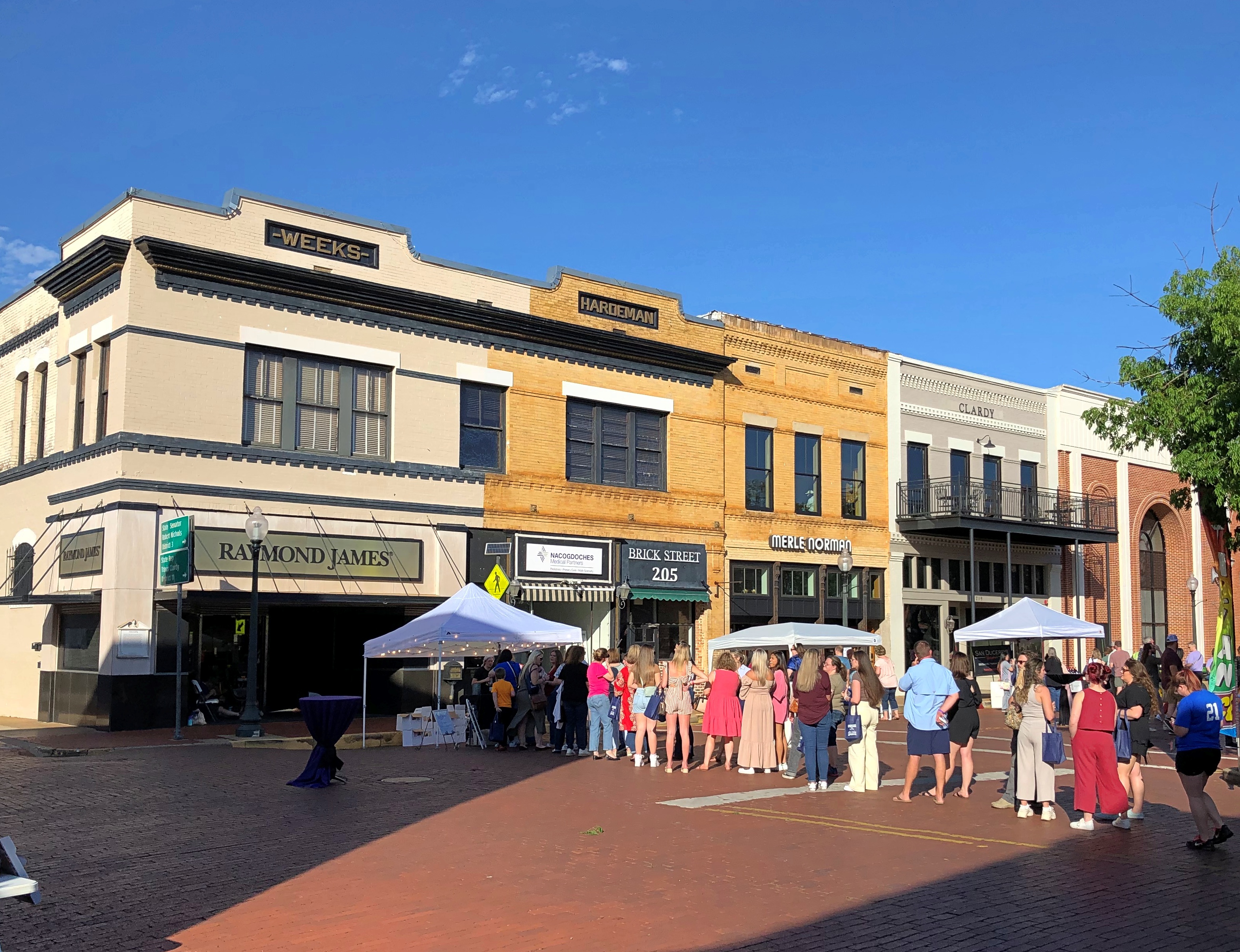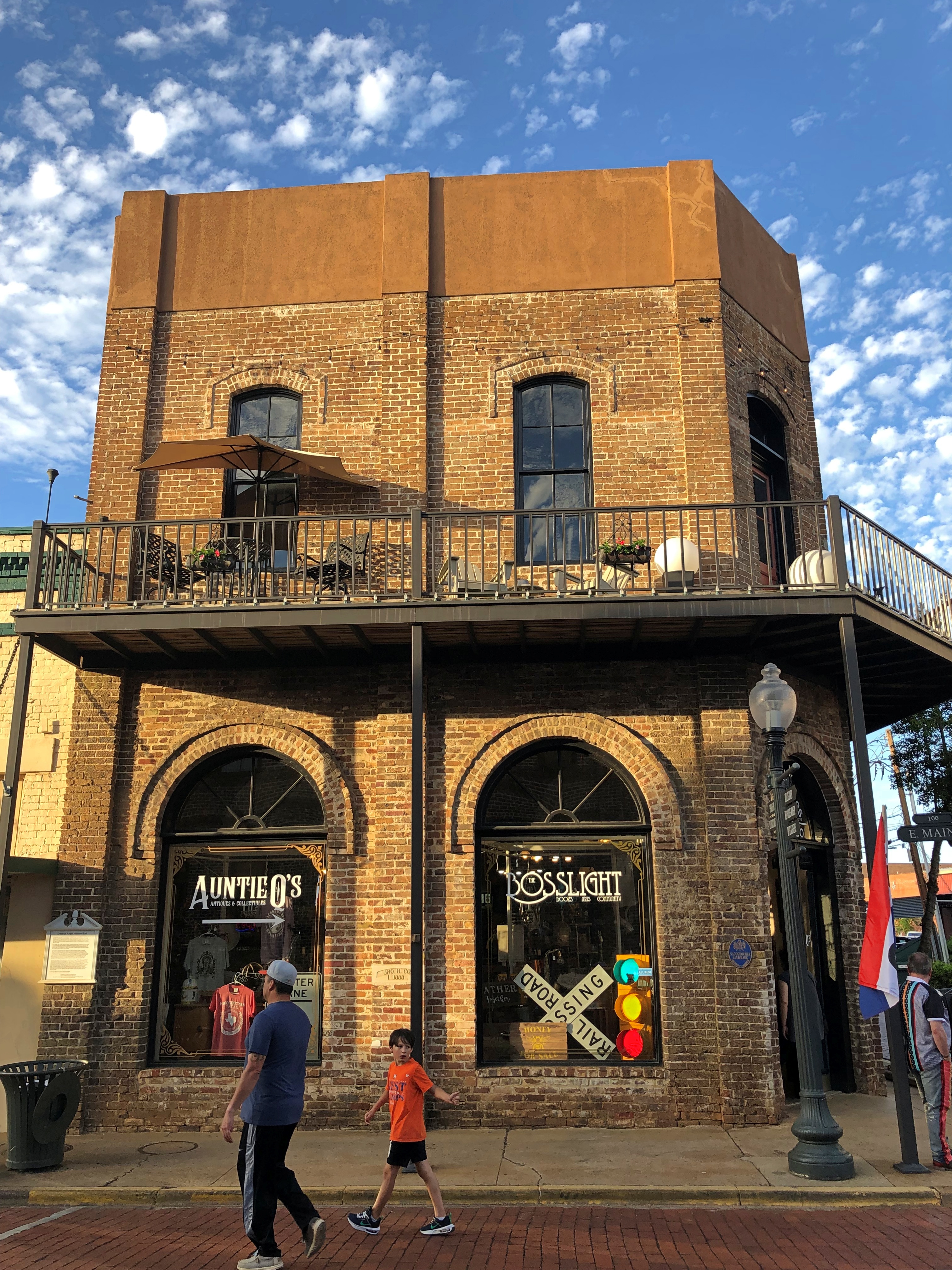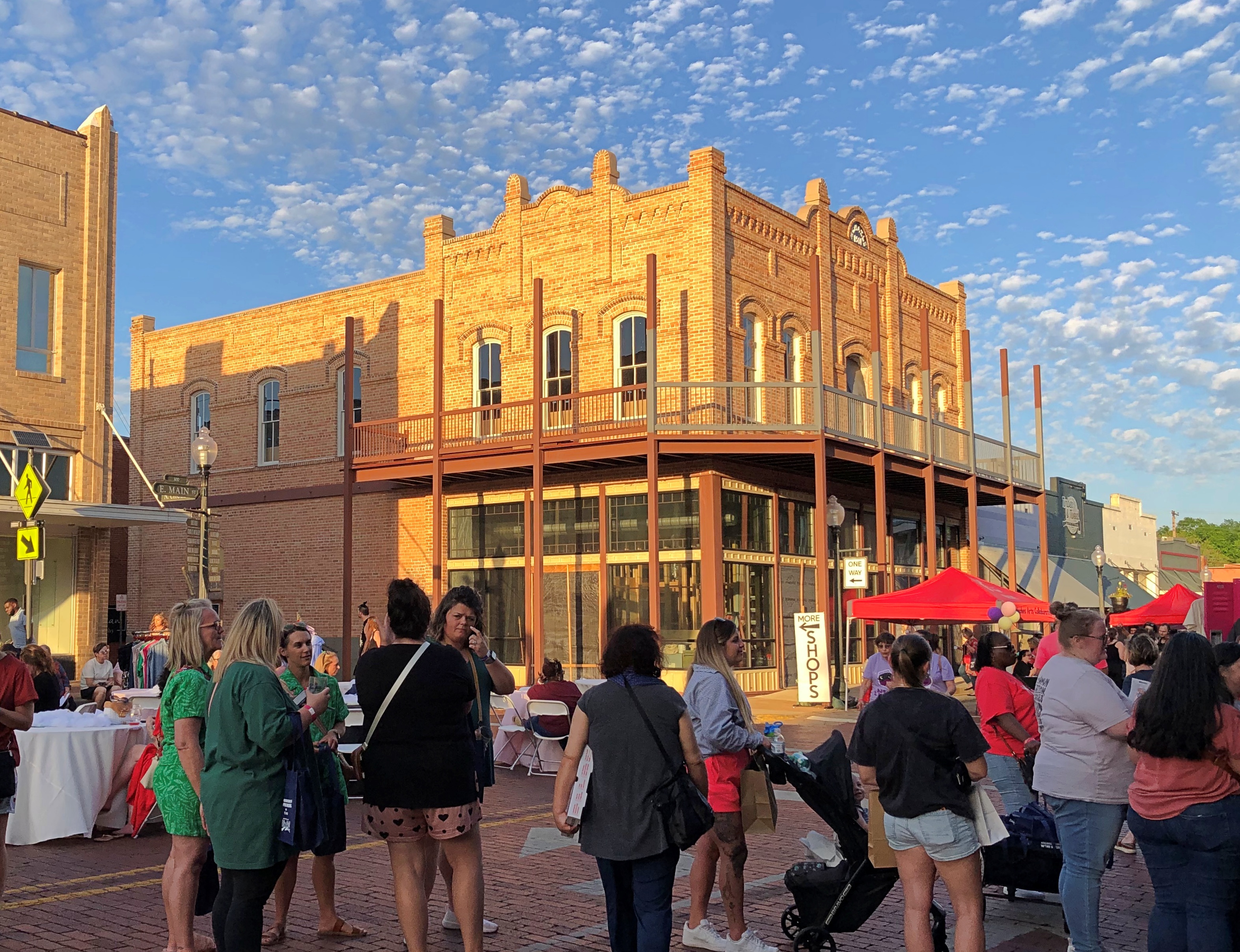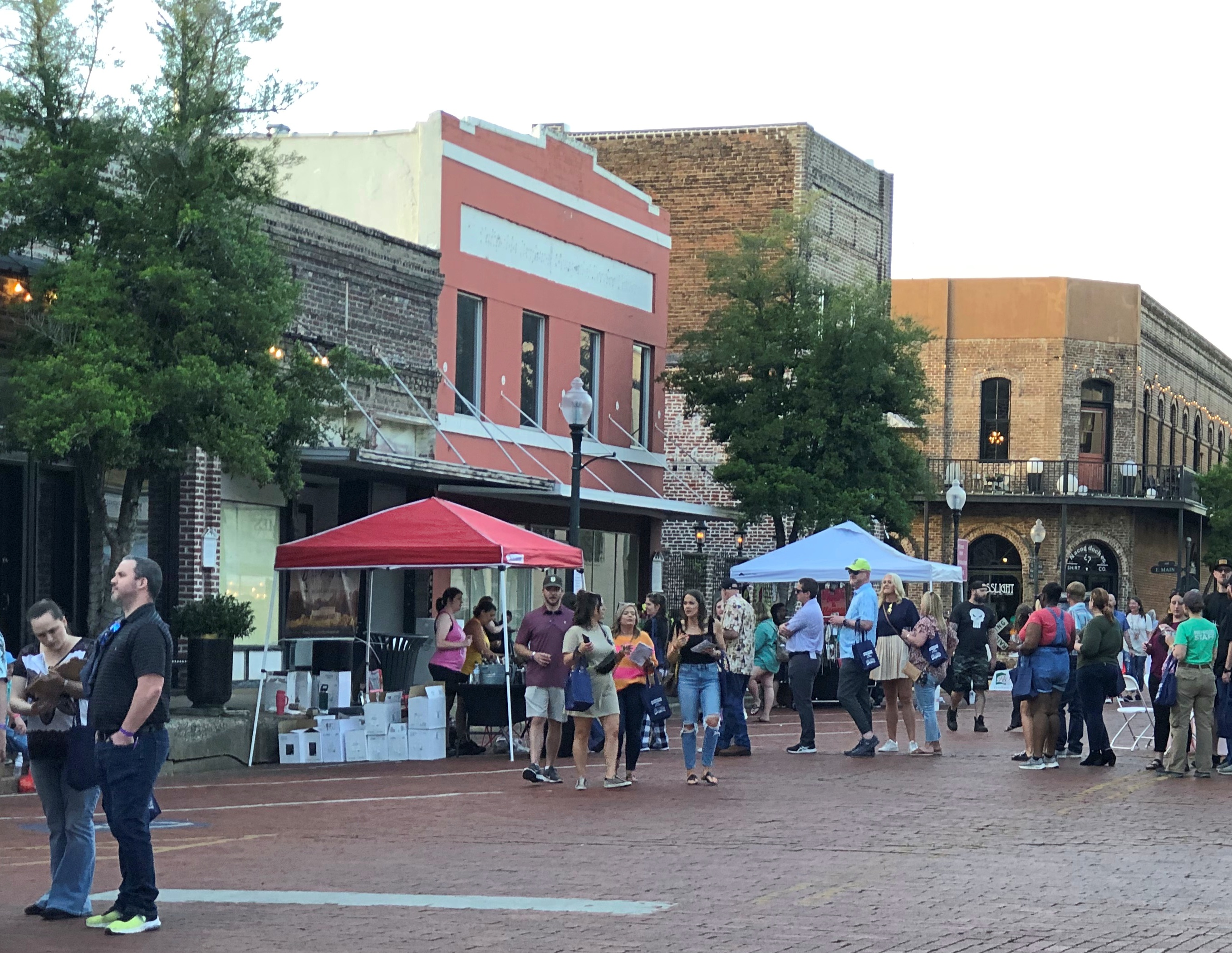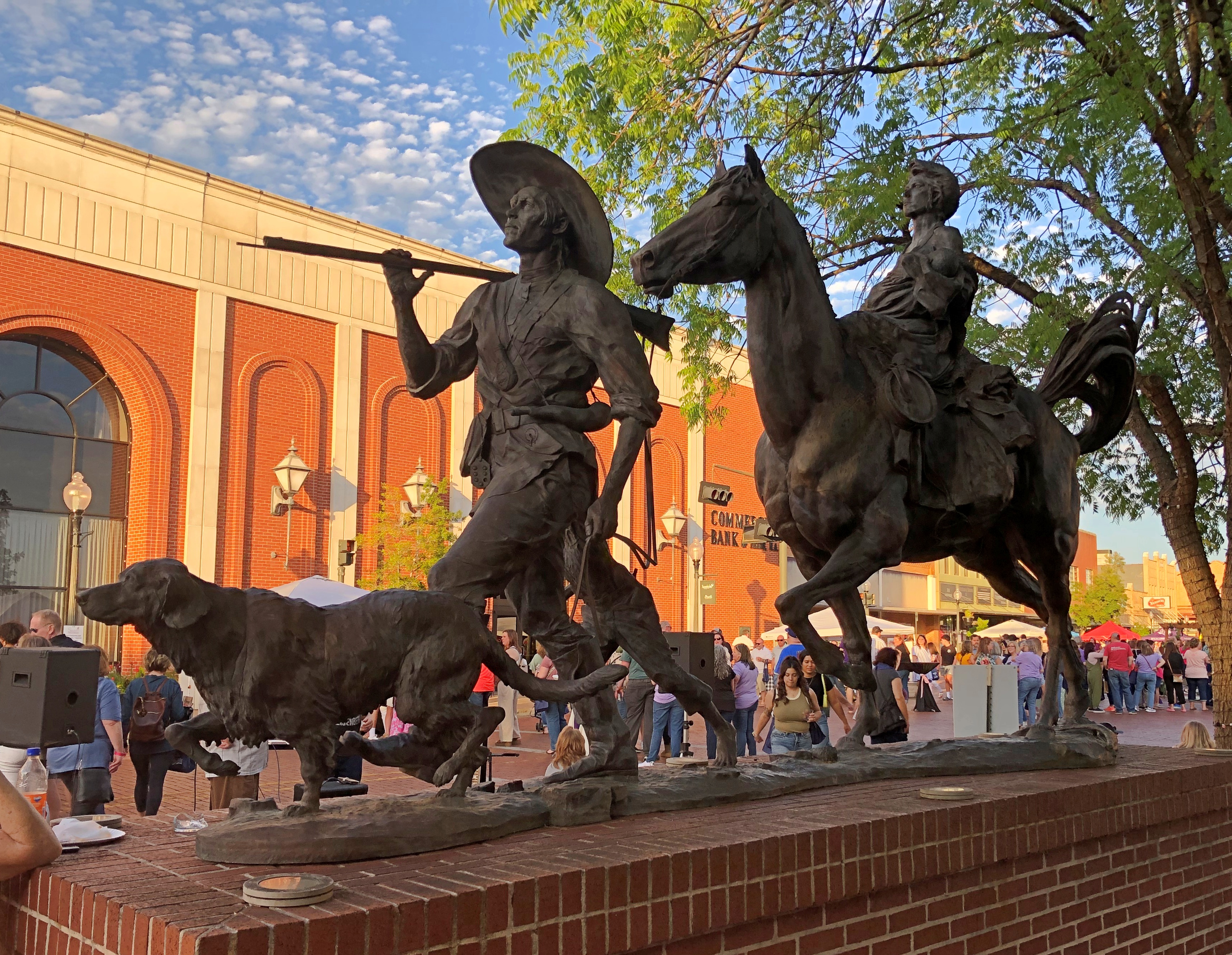We bought some roses to plant the other day and they turned out to be produced in Tyler, Texas. They were found at a major retailer here in Illinois, so that means the Tyler rose industry isn’t completely gone. I already knew that from reading about it, but it was good to see the fact confirmed in the form of stems and thorns.
My idea of a good driving road.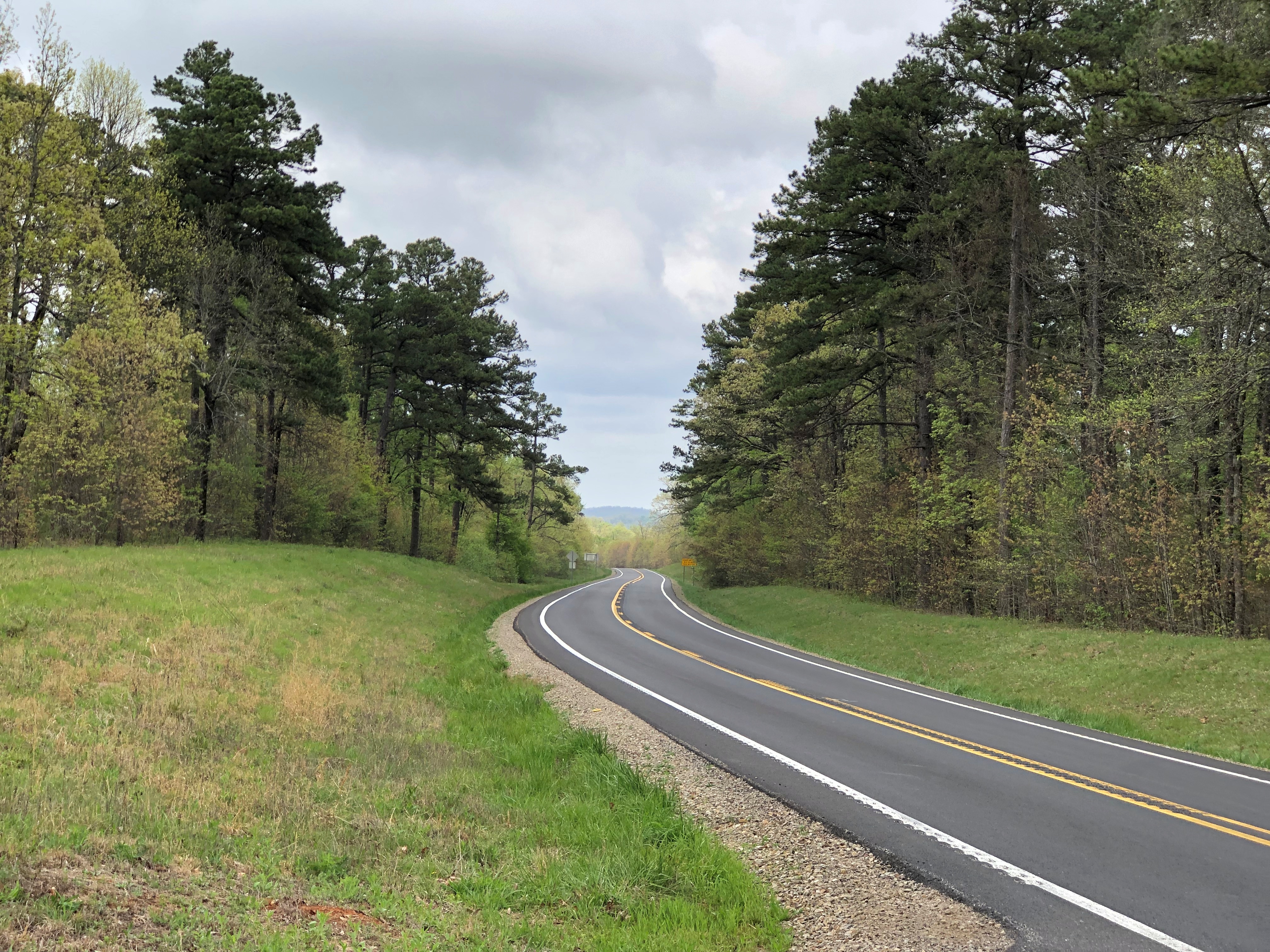
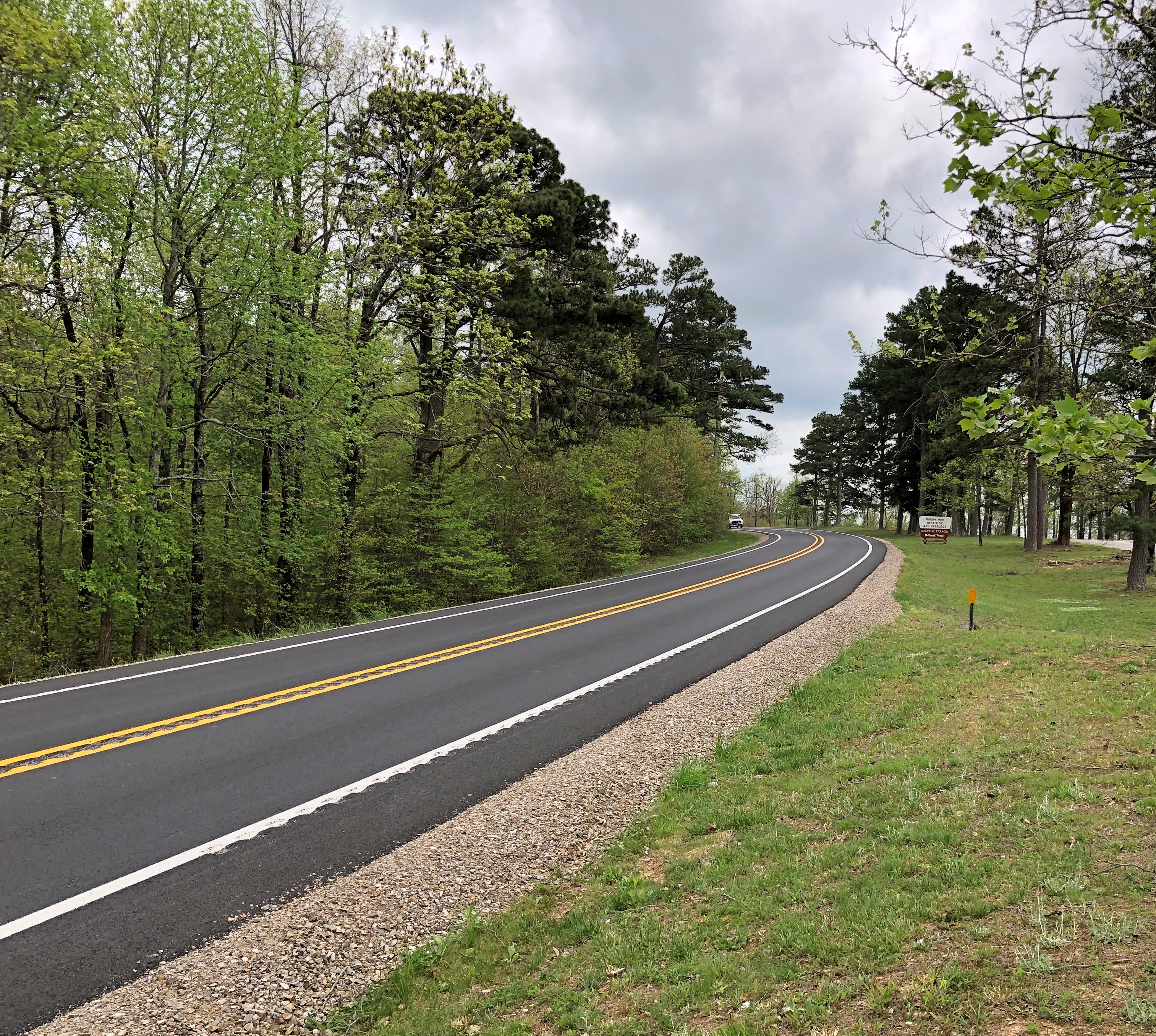
Everything you need – hills, greenery, occasional small towns and roadside views, a winding aspect – and nothing you don’t – much traffic, especially large trucks.
 I created the images when I wasn’t driving, of course, but at a wayside stop along Arkansas 7, a mostly two-lane highway crossing north-south through the state that’s scenic most of the way, and in fact an Arkansas Scenic Byway. We picked up the road where it meets I-30 at Caddo Valley on April 14, and took it into Hot Springs. The next day, we headed north along the road, through the Ouachitas and the Ozarks, parts of which are designated Ouachita National Forest and Ozark-St. Francis National Forest.
I created the images when I wasn’t driving, of course, but at a wayside stop along Arkansas 7, a mostly two-lane highway crossing north-south through the state that’s scenic most of the way, and in fact an Arkansas Scenic Byway. We picked up the road where it meets I-30 at Caddo Valley on April 14, and took it into Hot Springs. The next day, we headed north along the road, through the Ouachitas and the Ozarks, parts of which are designated Ouachita National Forest and Ozark-St. Francis National Forest.
North of Russellville, which was the only place with much traffic, the lush scenery kicks into an expansive high gear. The old saw is that you can’t eat scenery, and while that’s literally true, the underlying notion that scenery is a worthless frill strikes me as an affront to one of life’s better pleasures. At least for those of us fortunate enough to live above subsistence poverty.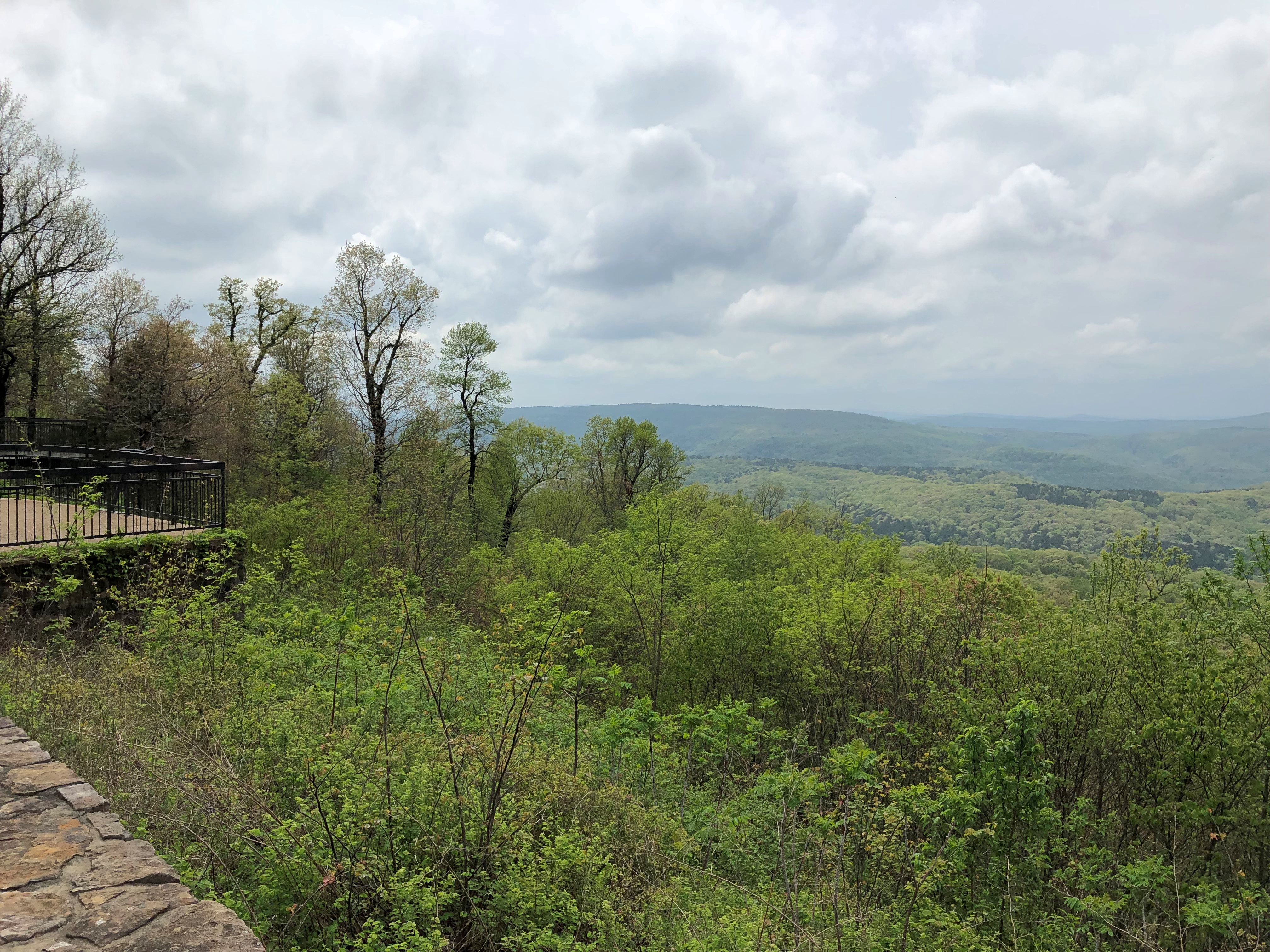
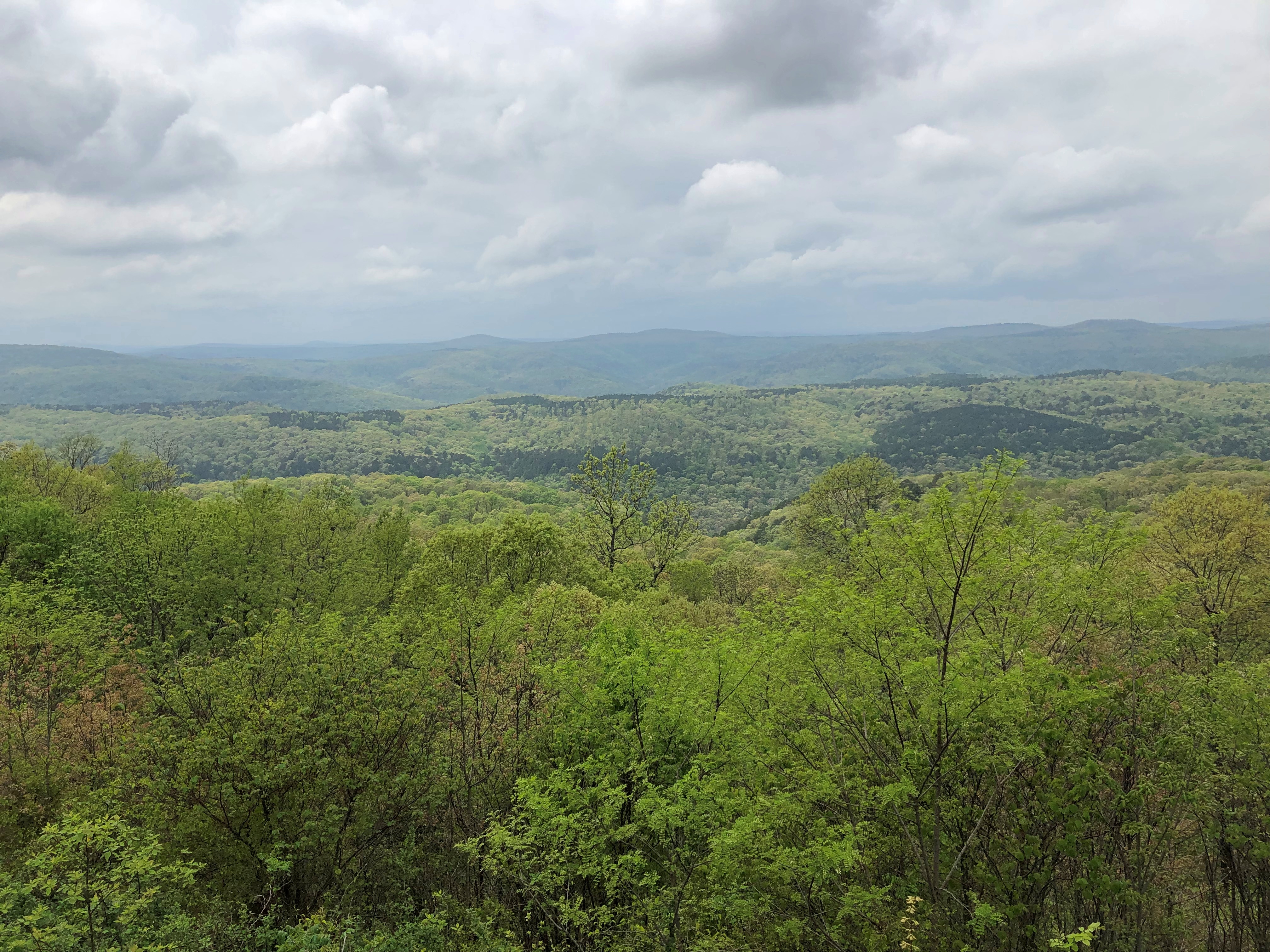
South of the small town of Jasper is a feature called the “Arkansas Grand Canyon.” Called that by the scattering of businesses along the way who would like you to stop, anyway. Geographically, it’s the Buffalo River Canyon. Grand, maybe not, but impressive. Met my periodical quota for vistas.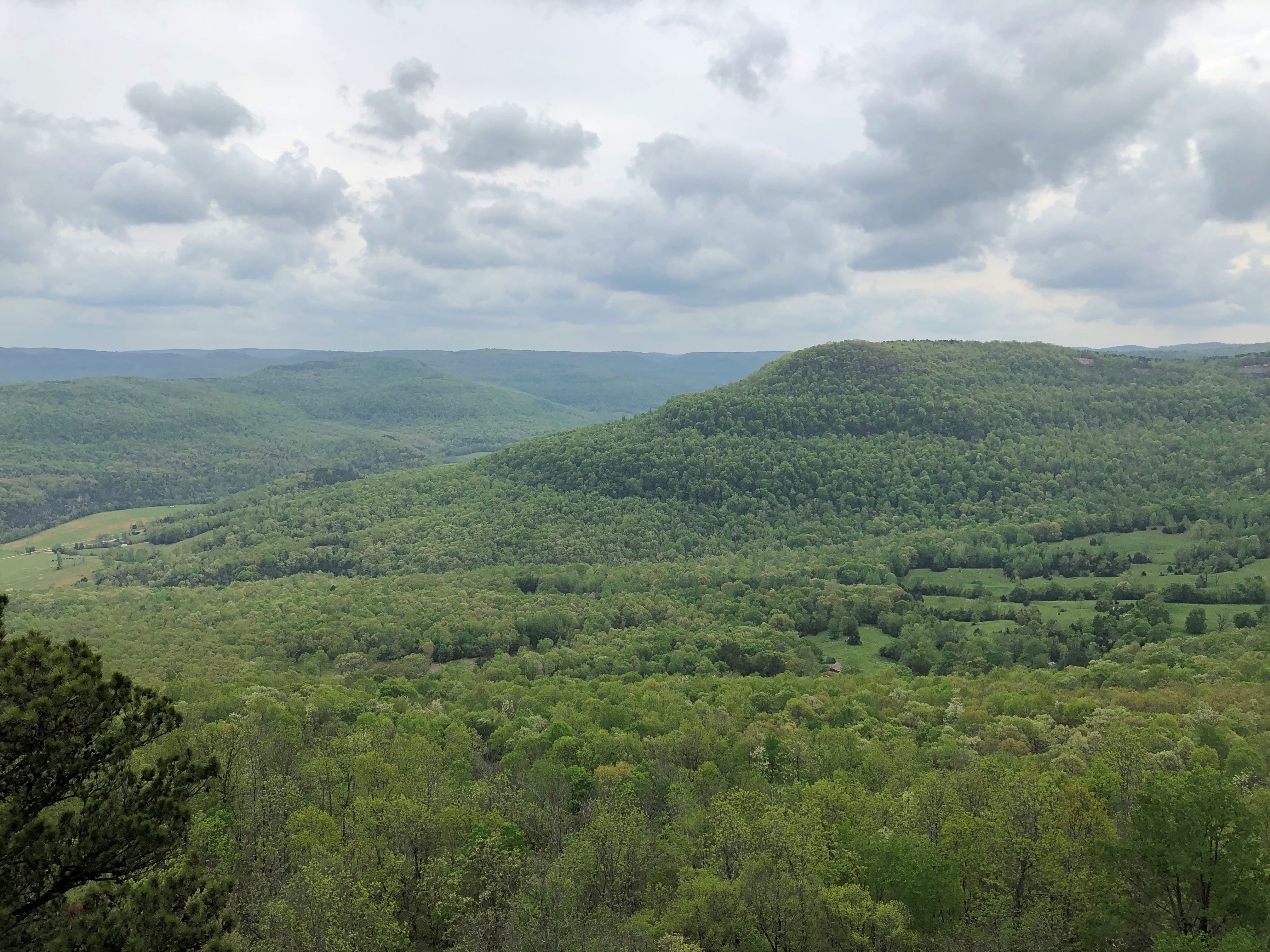
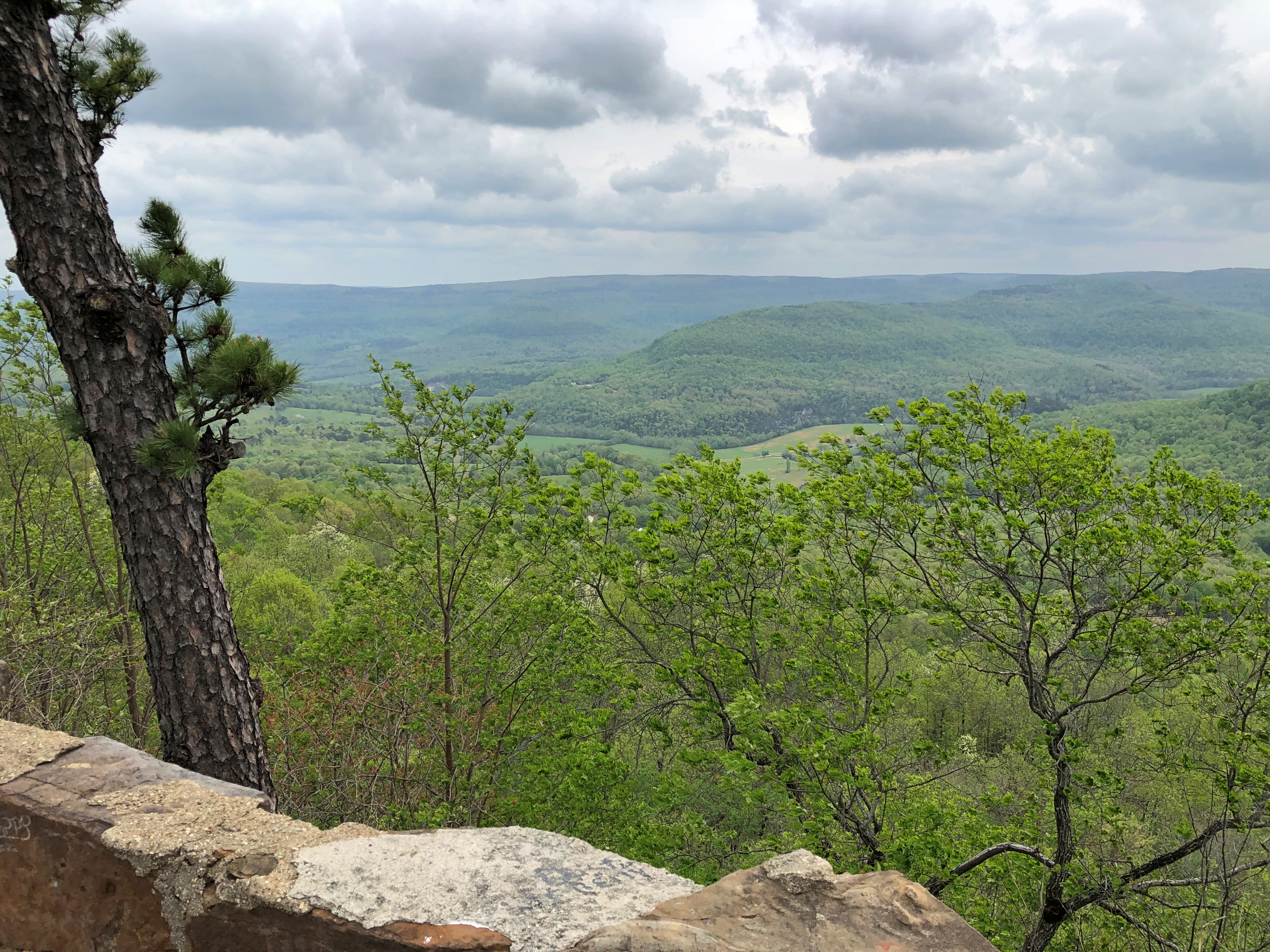
Passersby left their mark. Maybe in some future time, it’ll be considered historic and thus protected.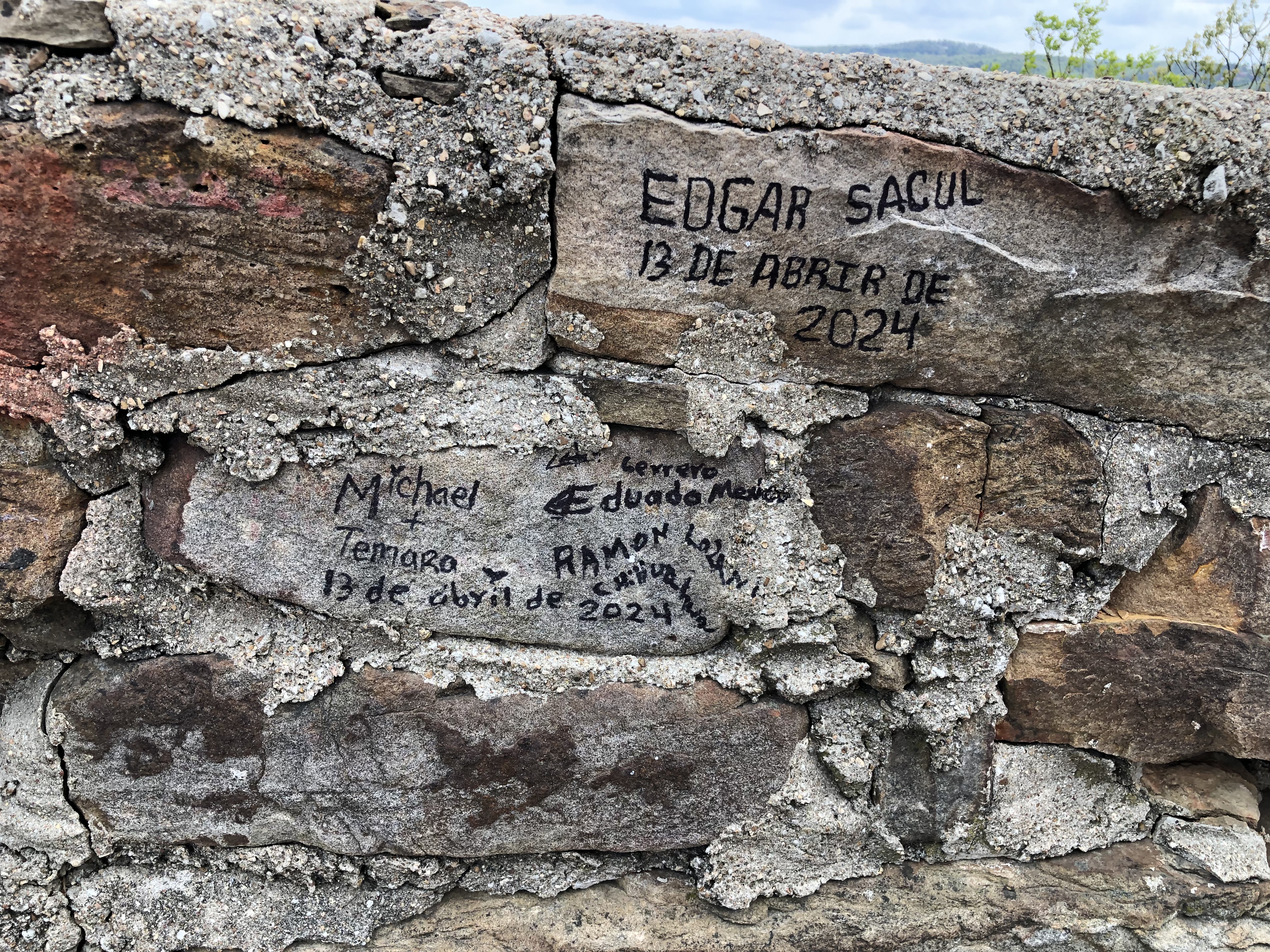

Another roadside perch. I wasn’t sure if this counted as the “Grand Canyon,” but it hardly mattered. Scenery to flavor the drive.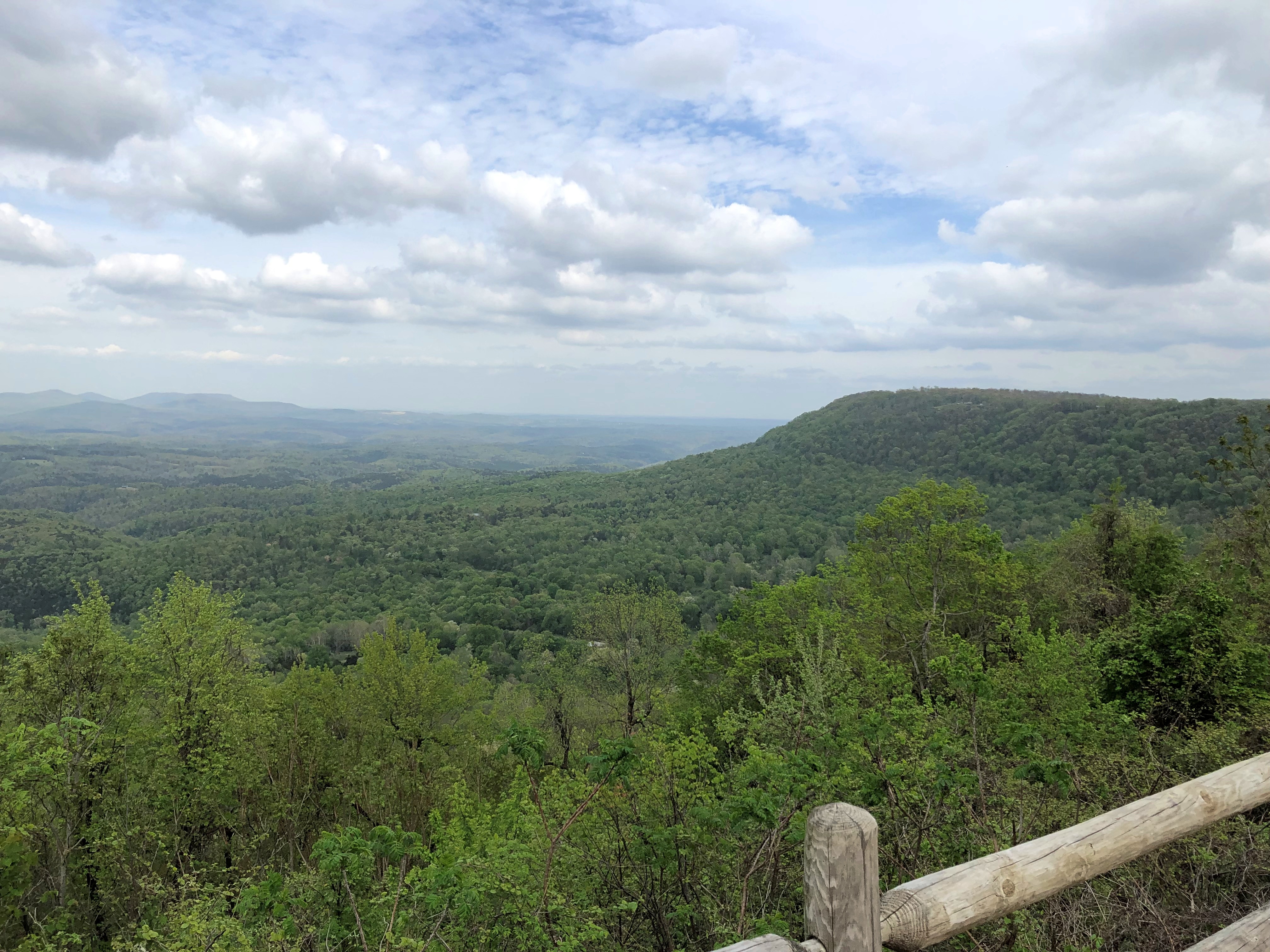
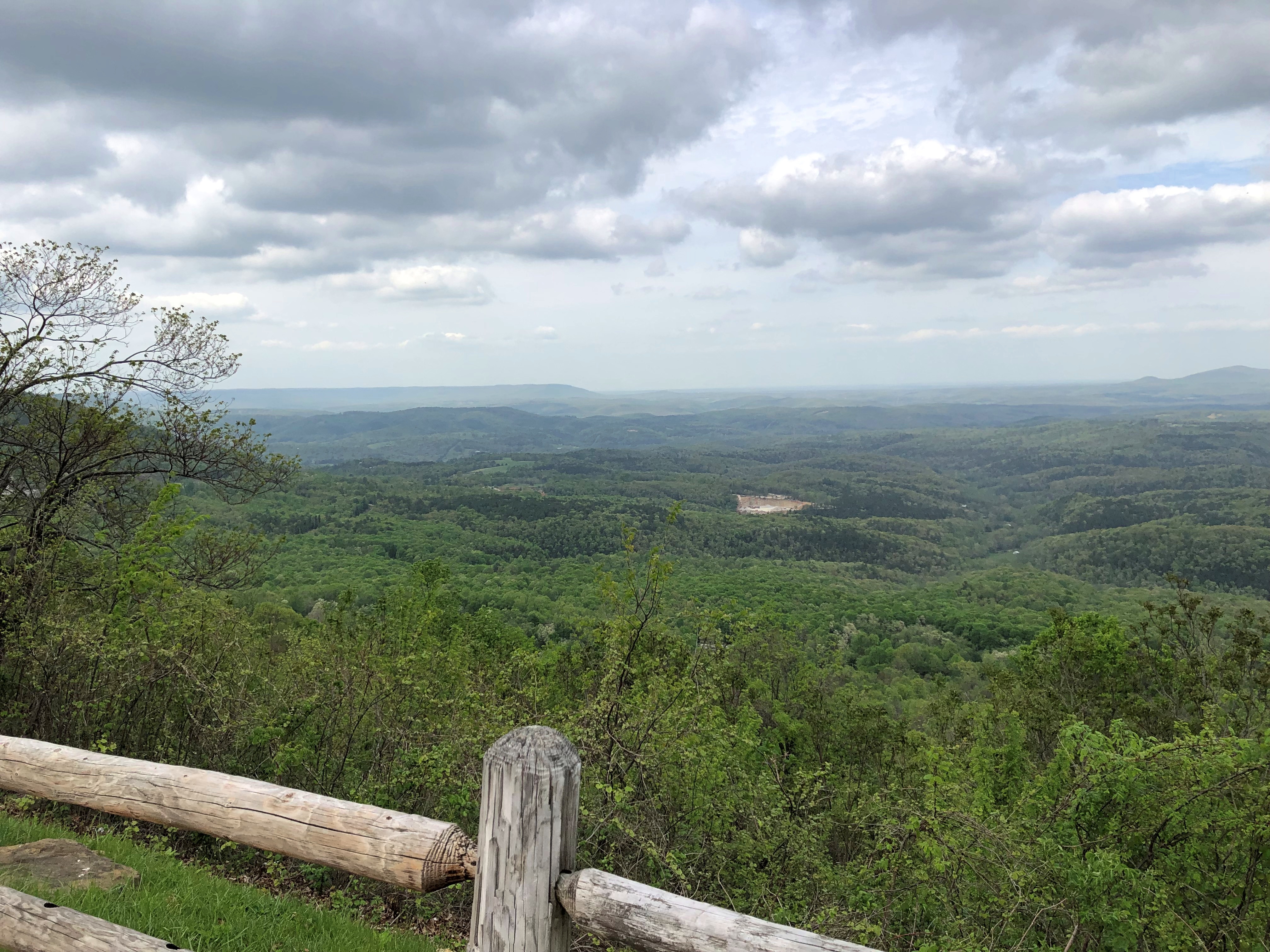
Arkansas in the breeze.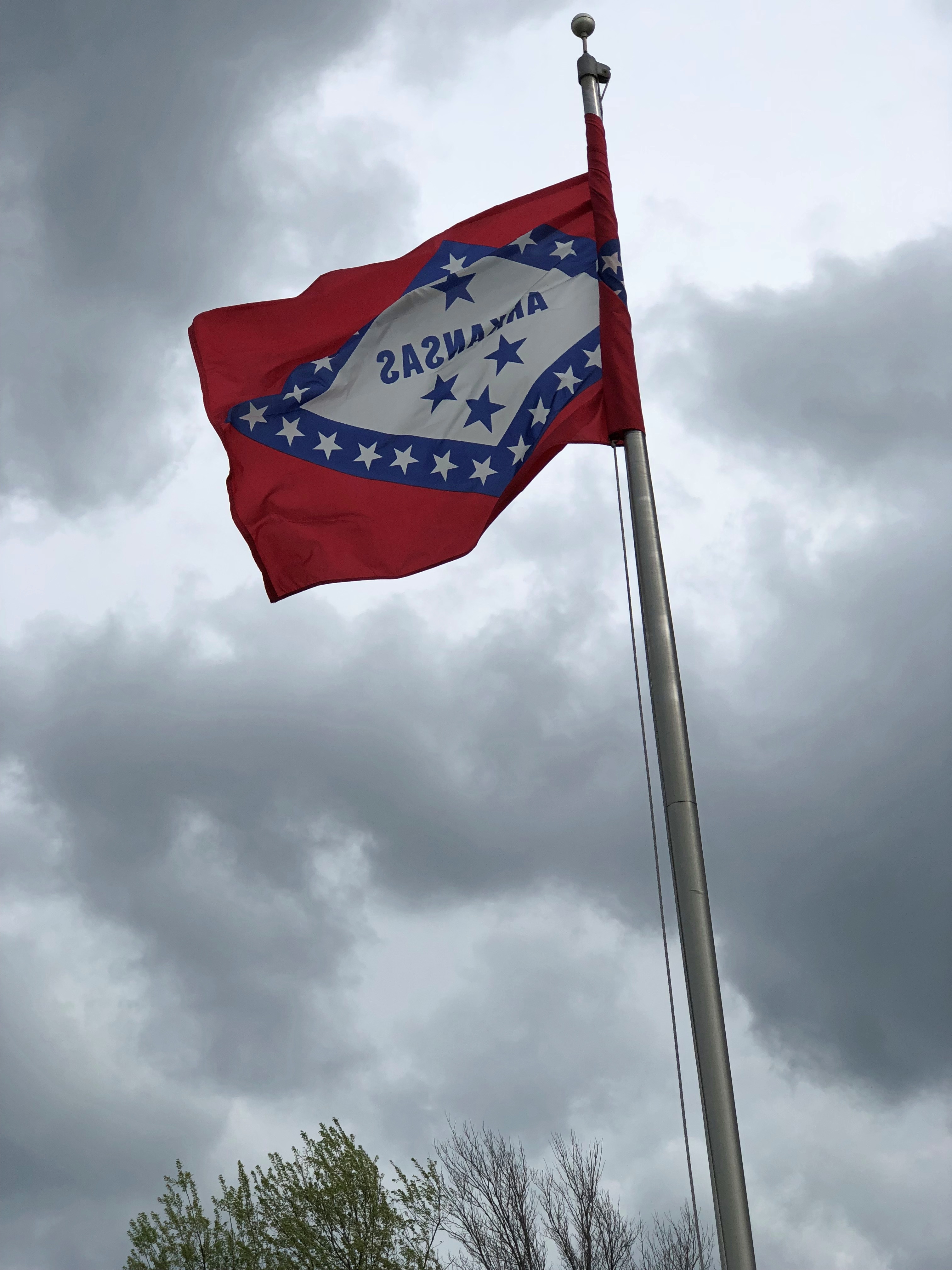
We stopped at the Ozark Cafe in Jasper (pop. 547) for a latish lunch. Decent grub and idiosyncratic decor, including mountain musicians outside and a wall nearly full with characters from Li’l Abner inside. That comic never did much for me, but it’s always good to see local color.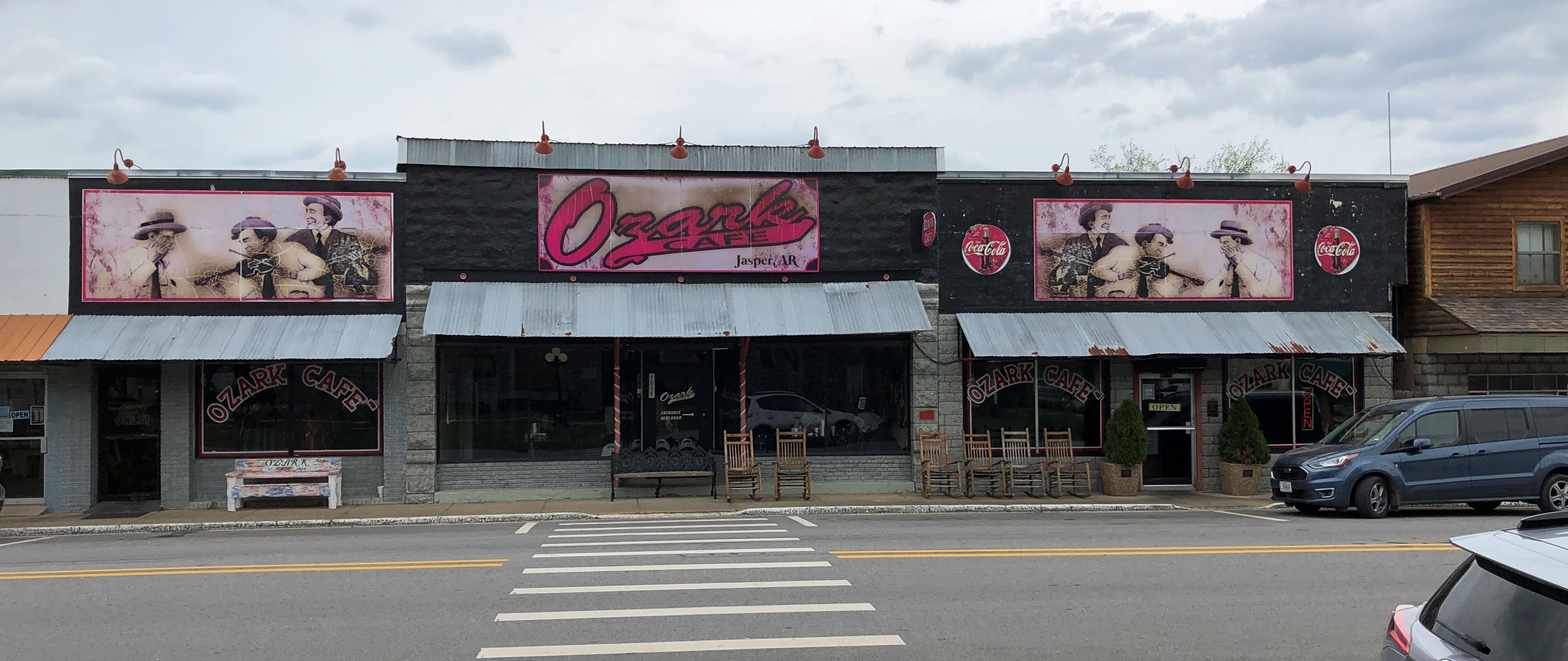
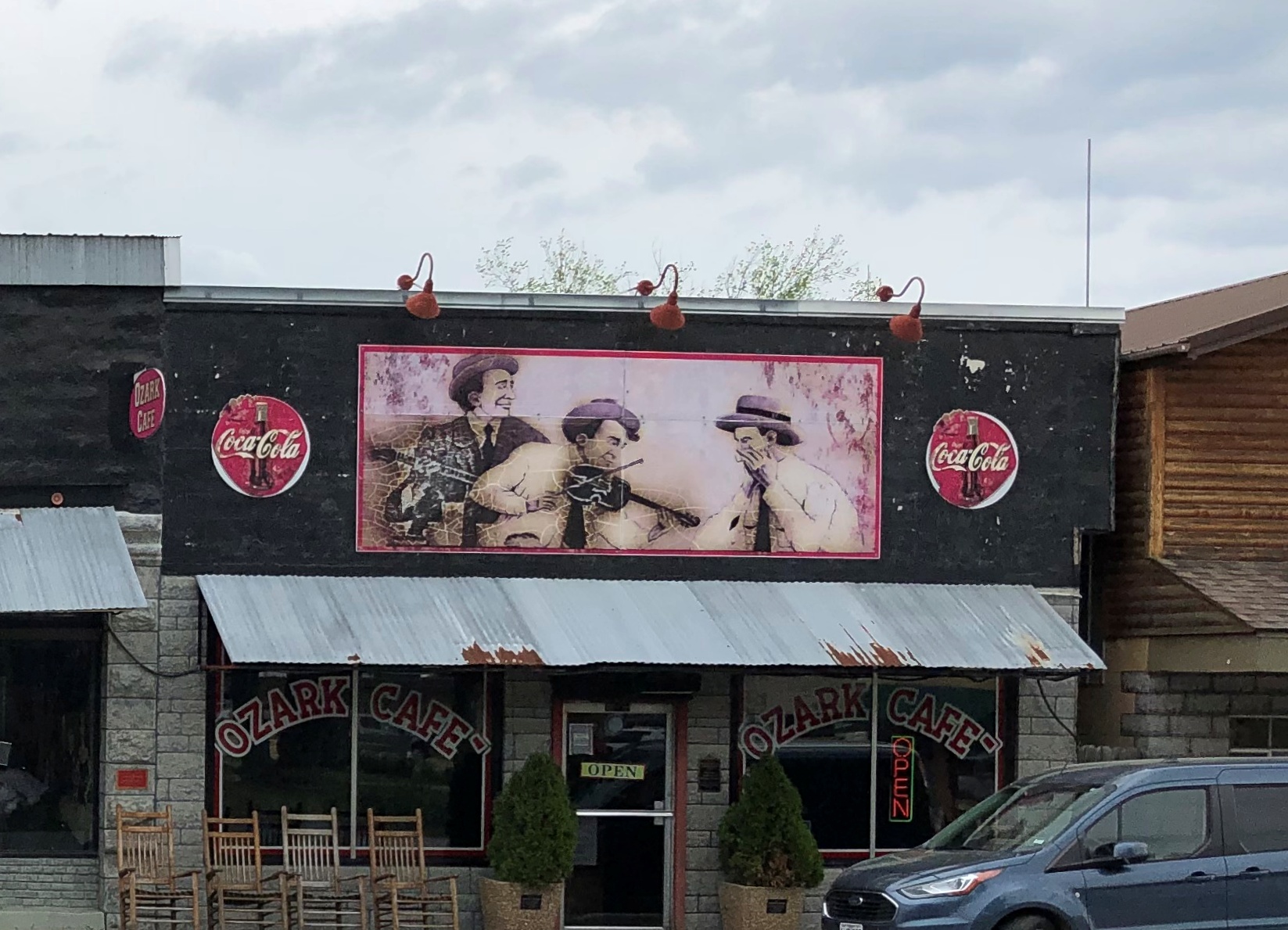
The cafe is across the street (still Arkansas 7) from the Newton County Courthouse. Another solid legacy of the WPA.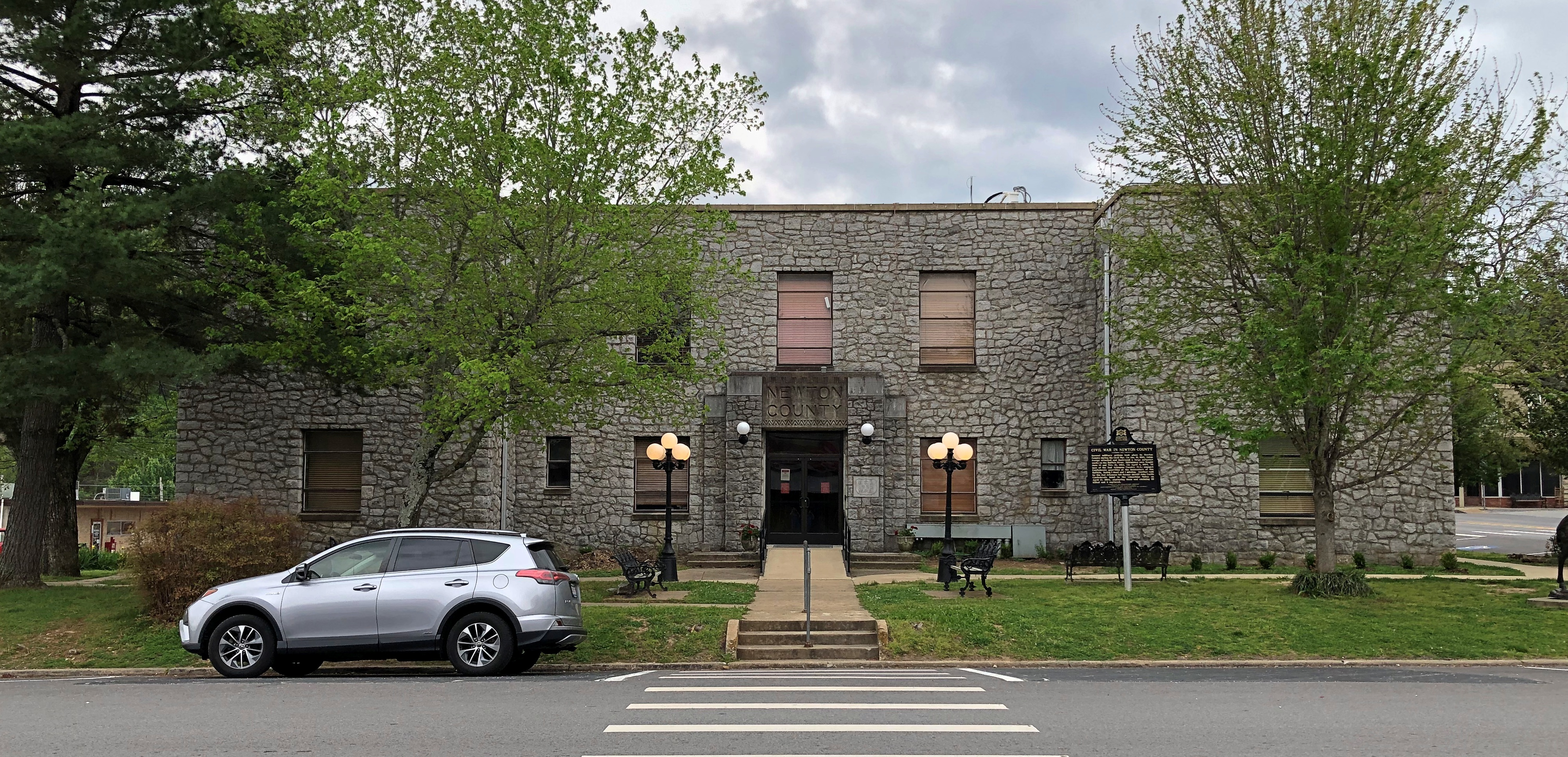
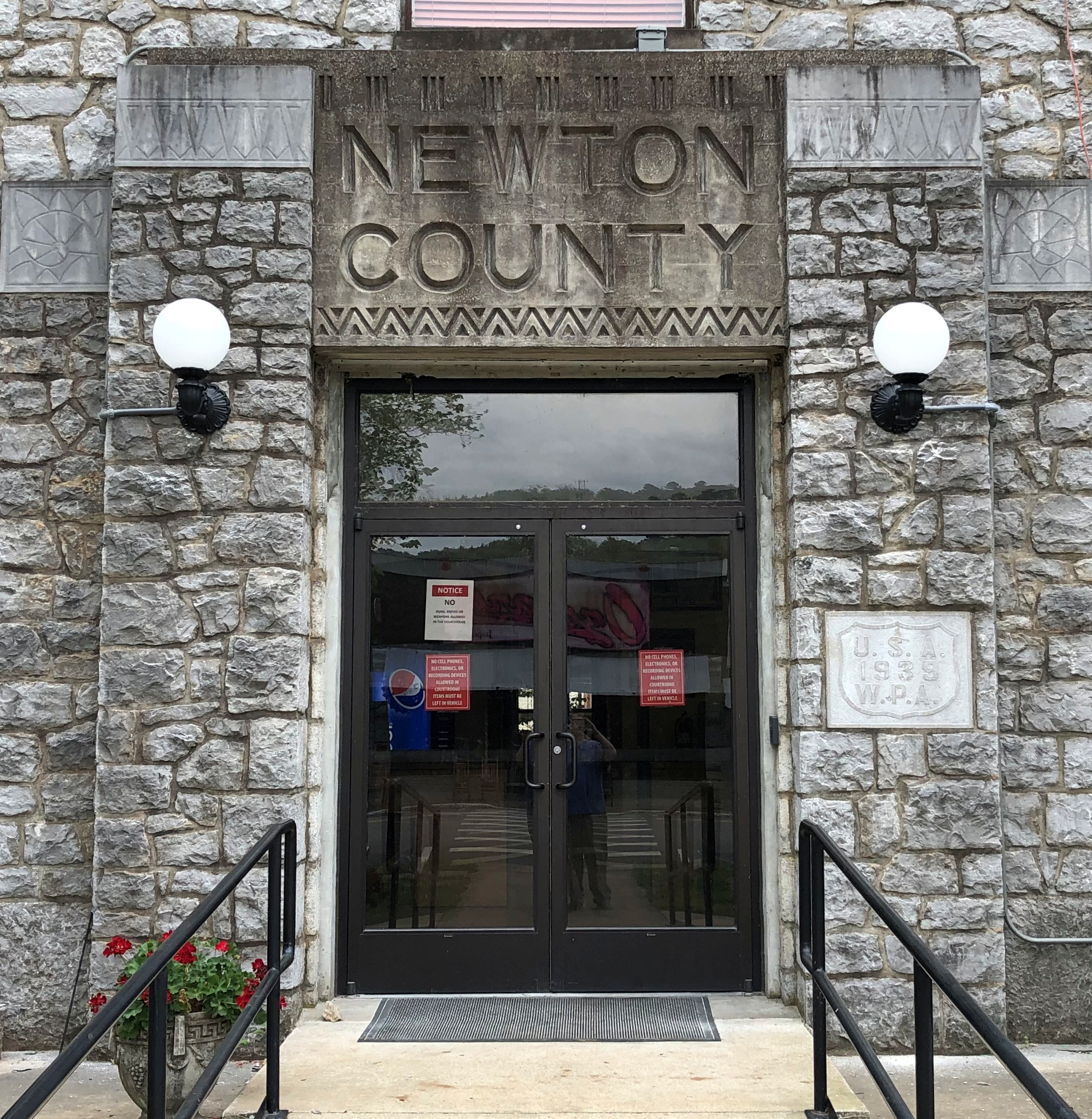
Up the road a piece from Jasper is a site that Google Maps calls Dogpatch to this day. Intrigued, I looked into it, finding that Dogpatch USA, a Li’l Abner theme park, used to be there. It operated longer than I would have thought, from 1968 to 1993. This is all you can see of it now, from Arkansas 7.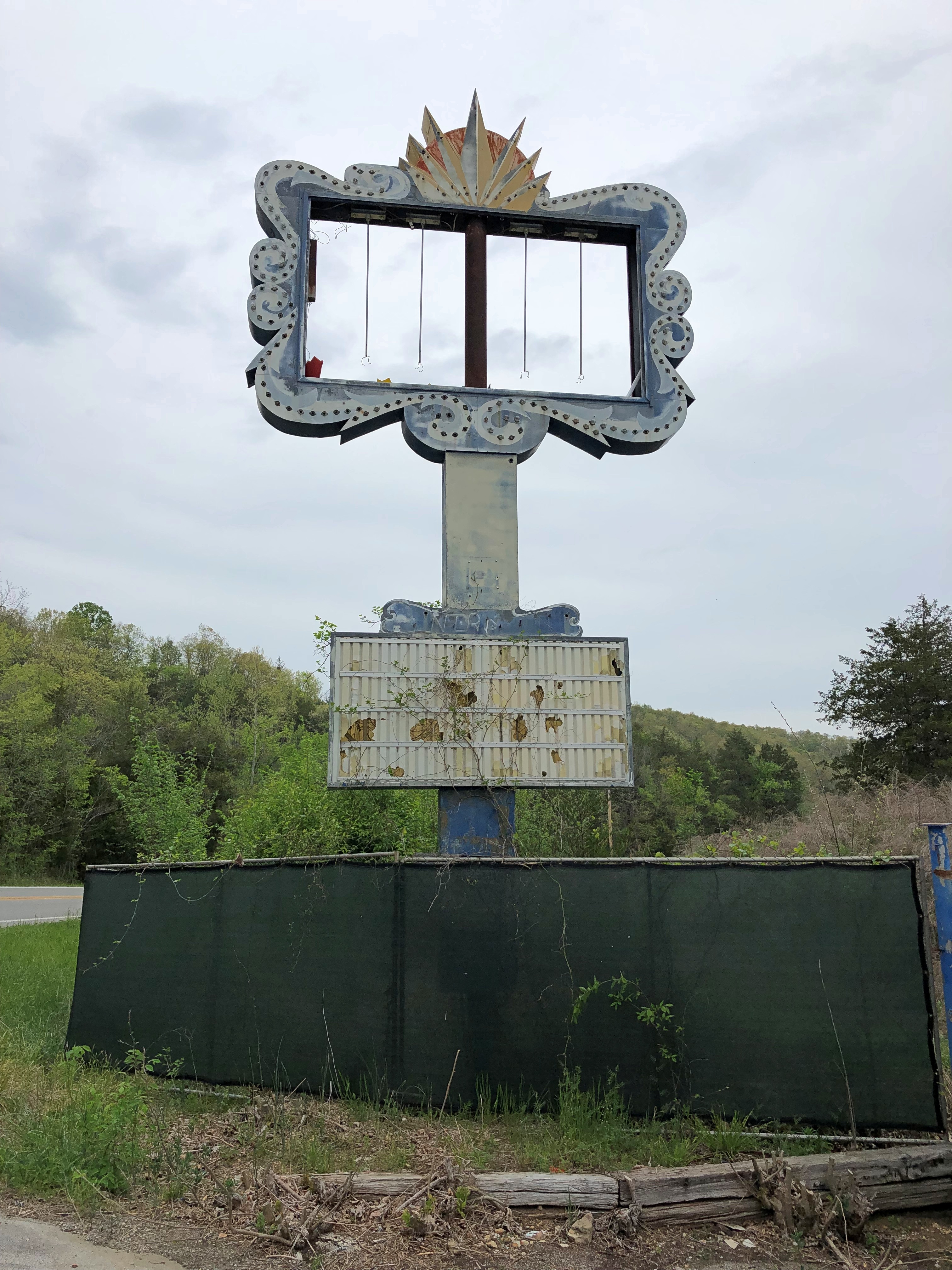
“Dogpatch USA is a classic American roadside attraction,” wrote one Rodger Brown, who visited during the park’s last summer in ’93.
“It’s a basket of cornpone and hillbilly hokum in a beautiful Ozark mountain setting. Nearby is a waterfall, limestone caverns, and a spring that flows clear and steadily into a creek that has powered a gristmill for more than 150 years. There are rides and gift shops, and at the heart of the park is a trout farm where visitors can catch and cook rainbow trout, ‘the gamest of all inland fish.’ The decor is bumpkin kitsch. The faux-illiterate signs along Dogpatch’s macadam footpaths read like a Po’ Folks menu: ‘Onbelievablee delishus Fish Vittles Kooked fo’ Sail.’
“Dogpatch opened in 1968, but its history, in a generous sense, begins about a hundred years earlier…. in 1900, the word ‘hillbilly’ first appeared in print, toting on its wiry back a croker sack full of iconography — squirrel rifles, corn cob pipes, floppy felt hats, feuds, a degraded language, and depraved life… Out of this crashing surf where industry and the marketplace met the mountains, Li’l Abner was born.
“Li’l Abner was the first comic strip to star mountaineers as main characters, but [creator Al] Capp’s hillbilly compote was certainly not unique. His versions of hillbillies were consolidated forms drawn from a widespread tradition of mountaineer caricatures: there’s the voluptuous rag-clad ‘tater sack sexkitten; the grizzled corn-cob pipe smoking visionary crone matriarch; the lay-about ineffectual pappy; and the clodhopping oblivious proto-Jethro Li’l Abner, the all-American country boy — part Alvin York and Abe Lincoln, a little Sambo in whiteface, and Paul Bunyan with a drawl.
“Li’l Abner first appeared in 1934, two years after the publication of Erskine Caldwell’s Tobacco Road, and within a few years the cartoon was a contender with Dick Tracy, Blondie and Little Orphan Annie as America’s number-one comic strip.”
Dogpatch USA isn’t a welcoming place these days, and it’s impossible to see the ruins without trespassing.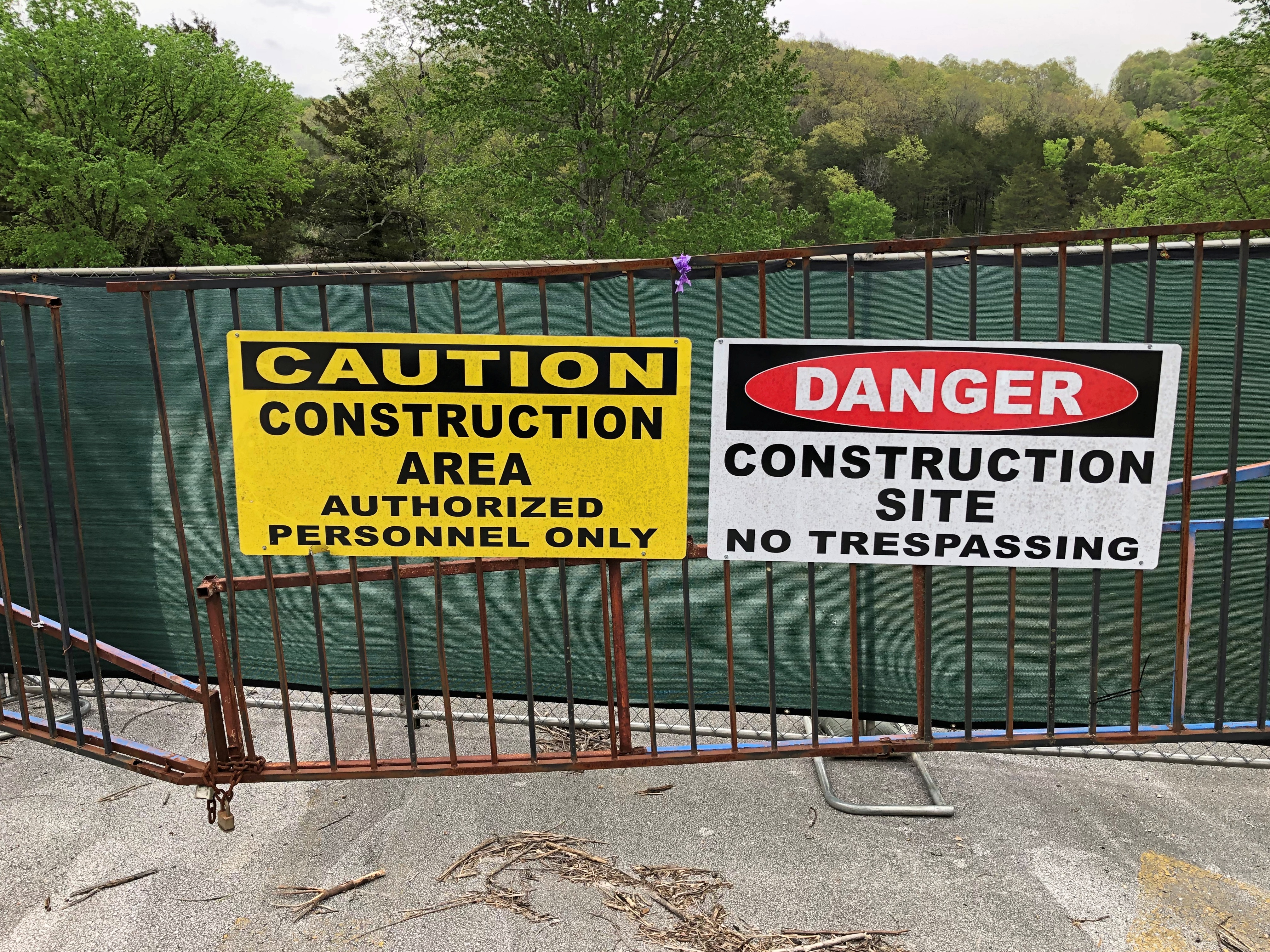
Those signs say construction, but there was no visible evidence of any such thing. The place needs to be stabilized for some ruin tourism, I reckon. I’d pay (a little) to see what’s left of the bumpkin kitsch and faux-illiterate signs.
